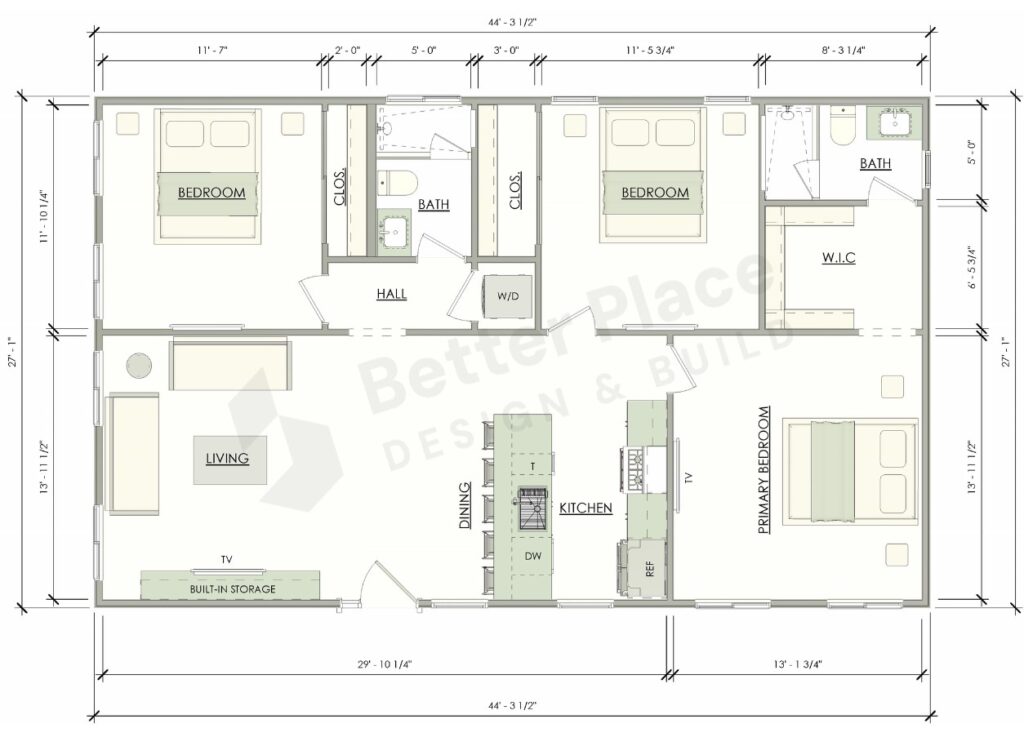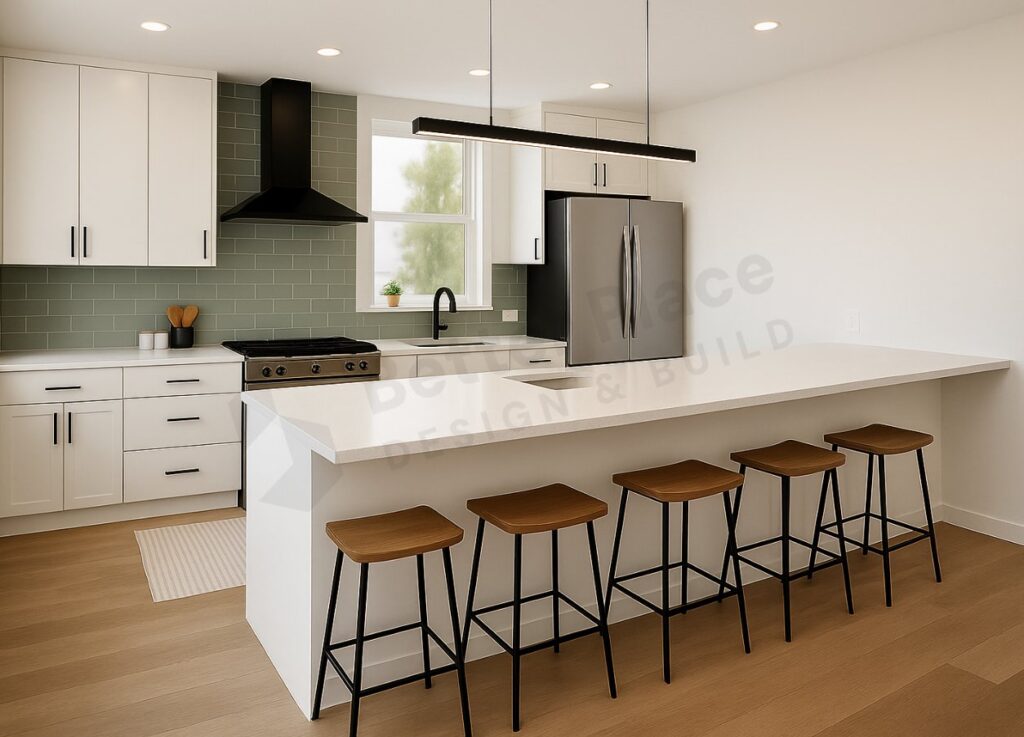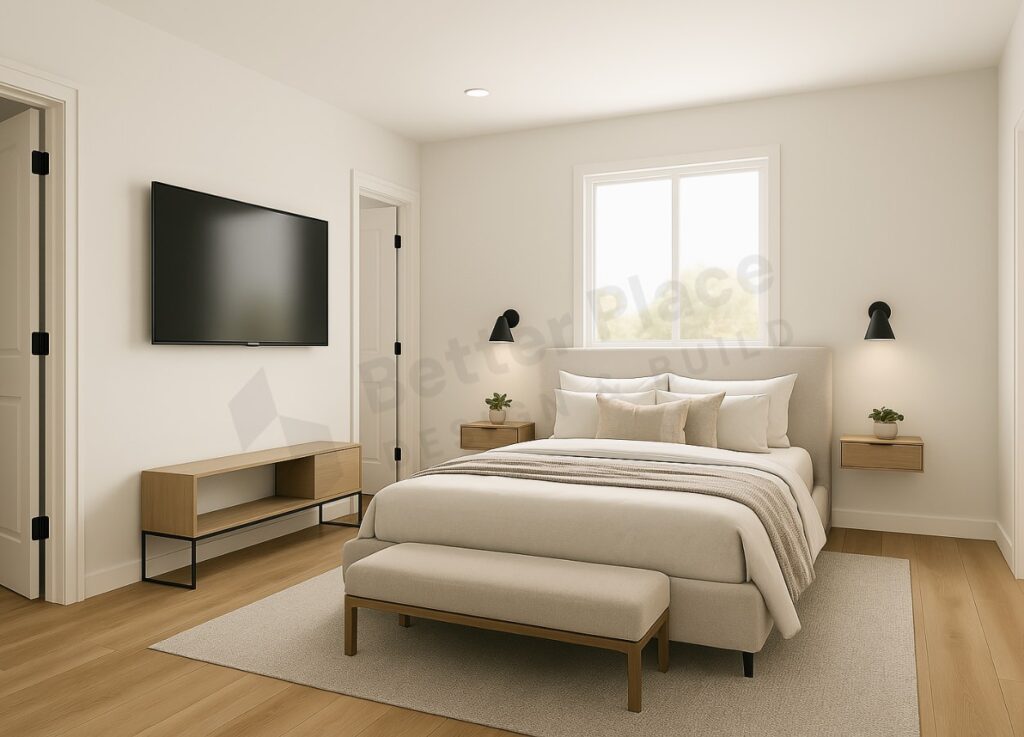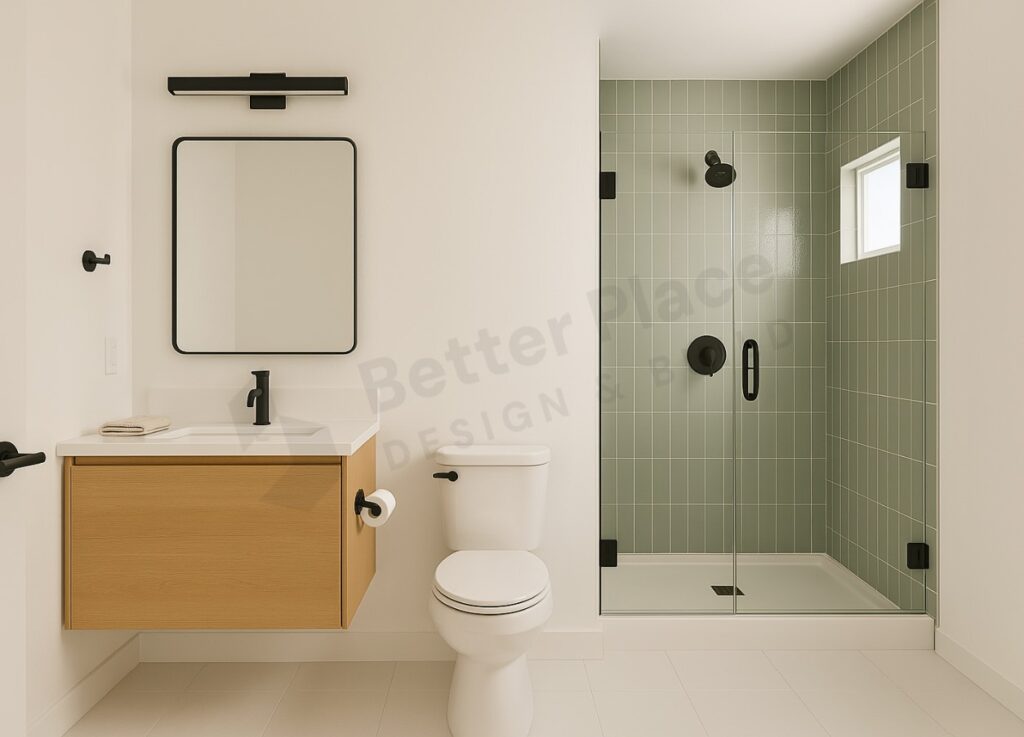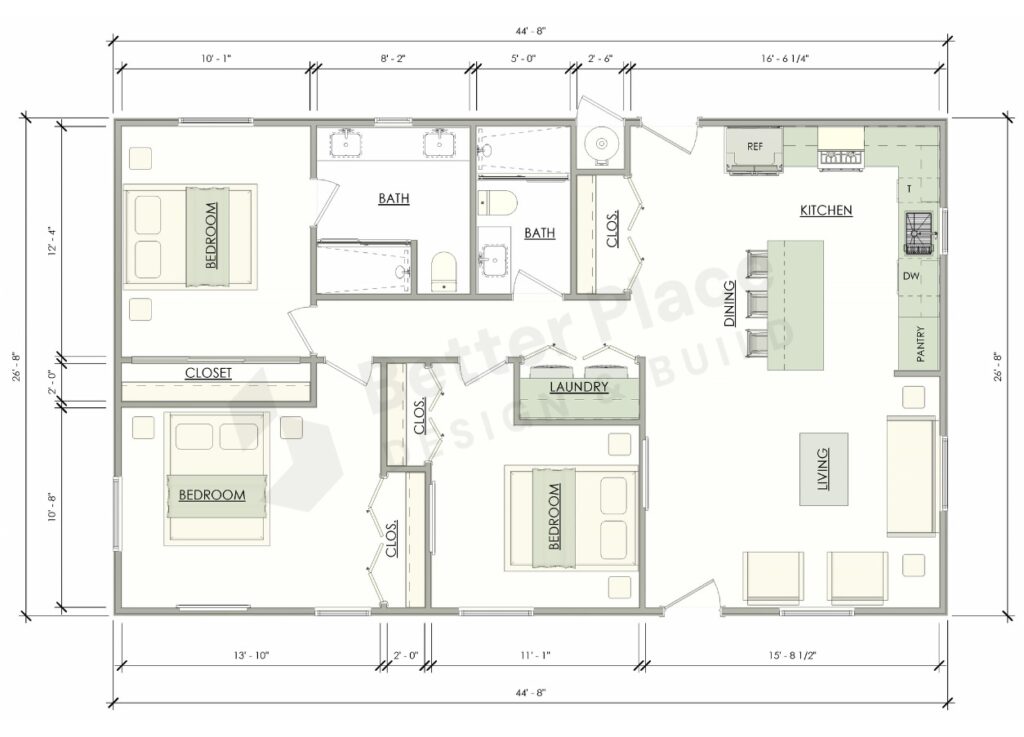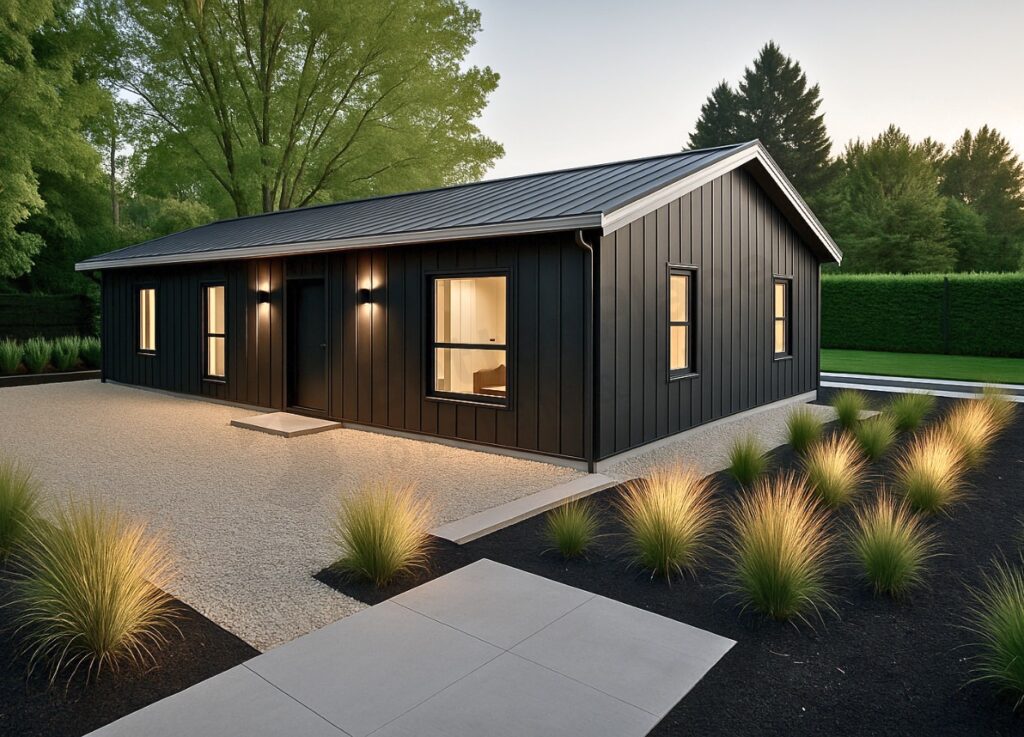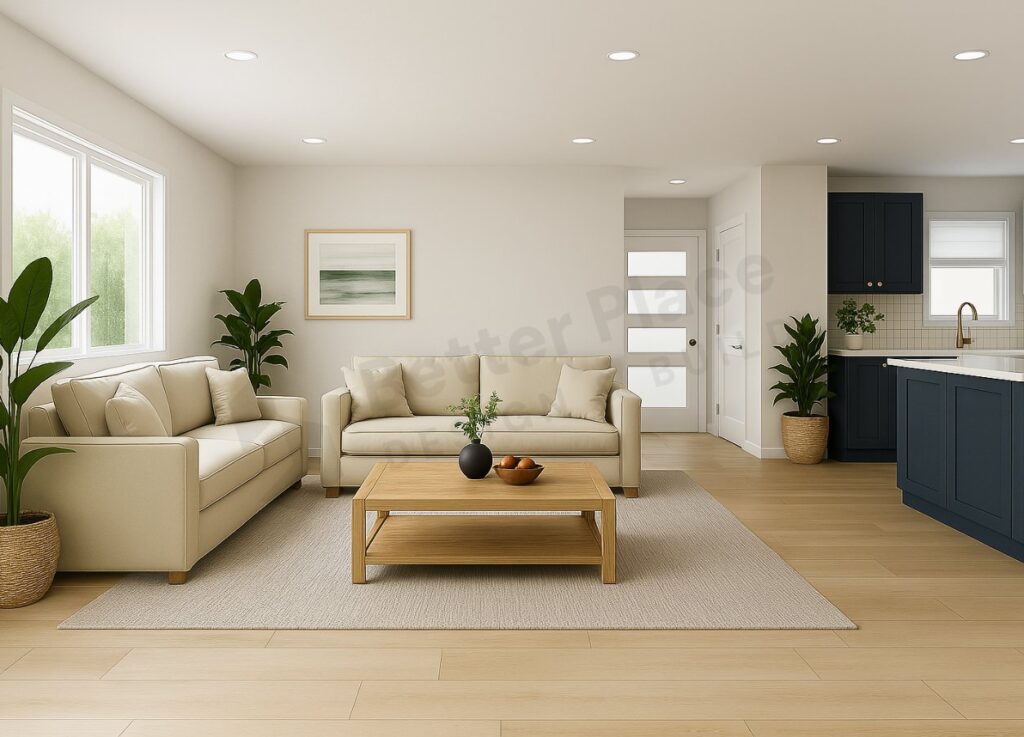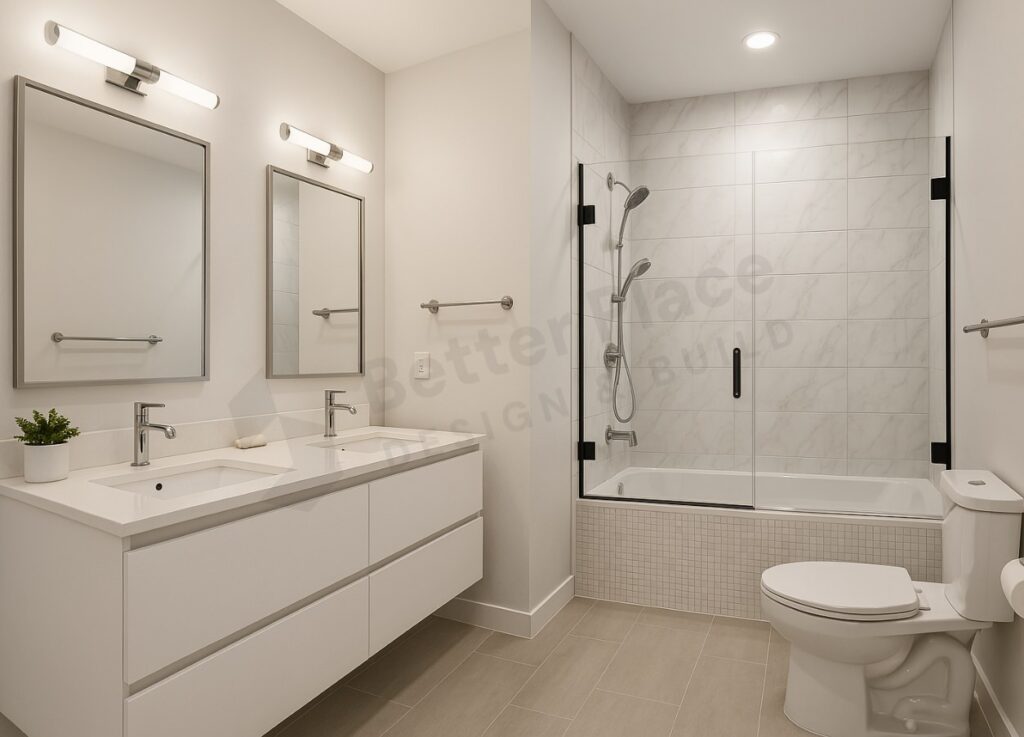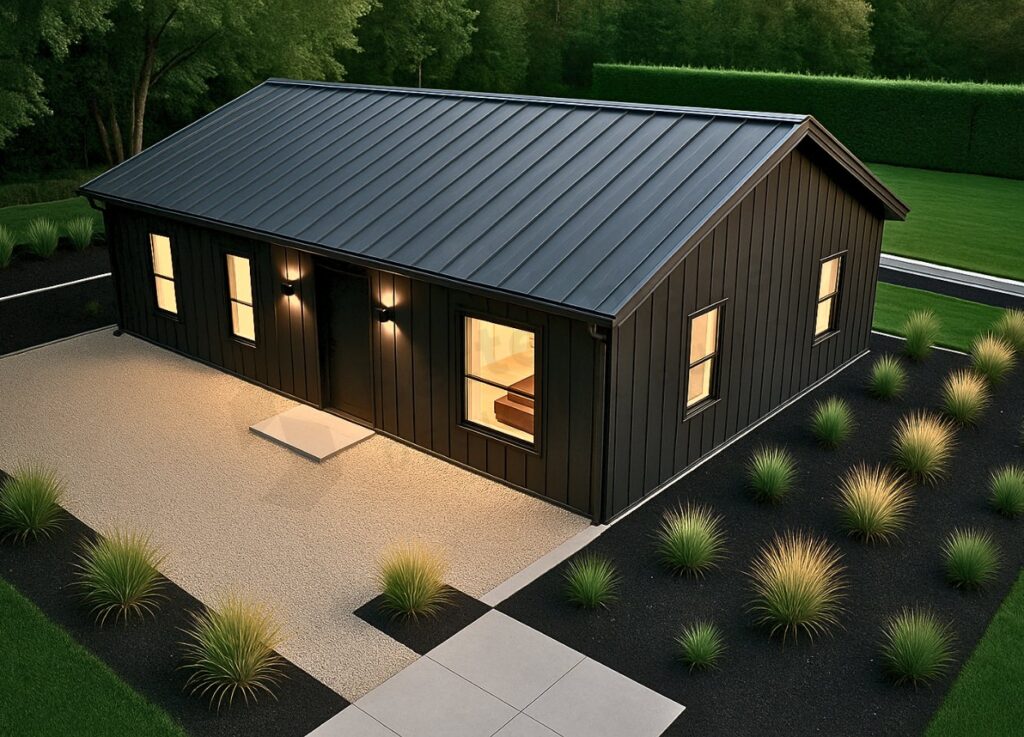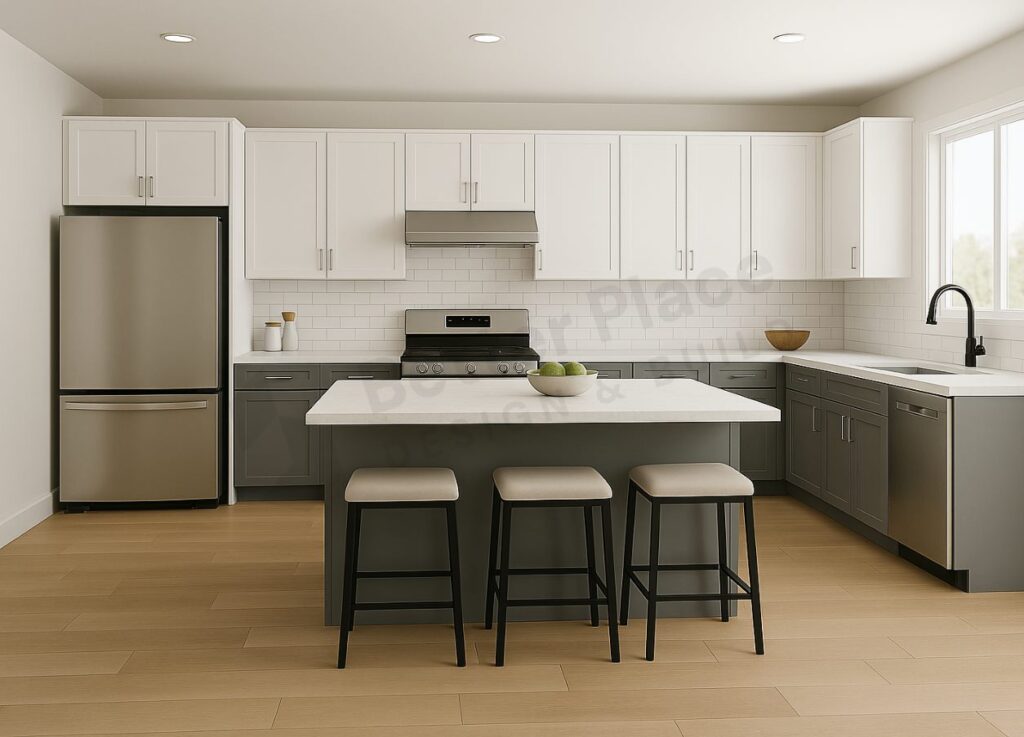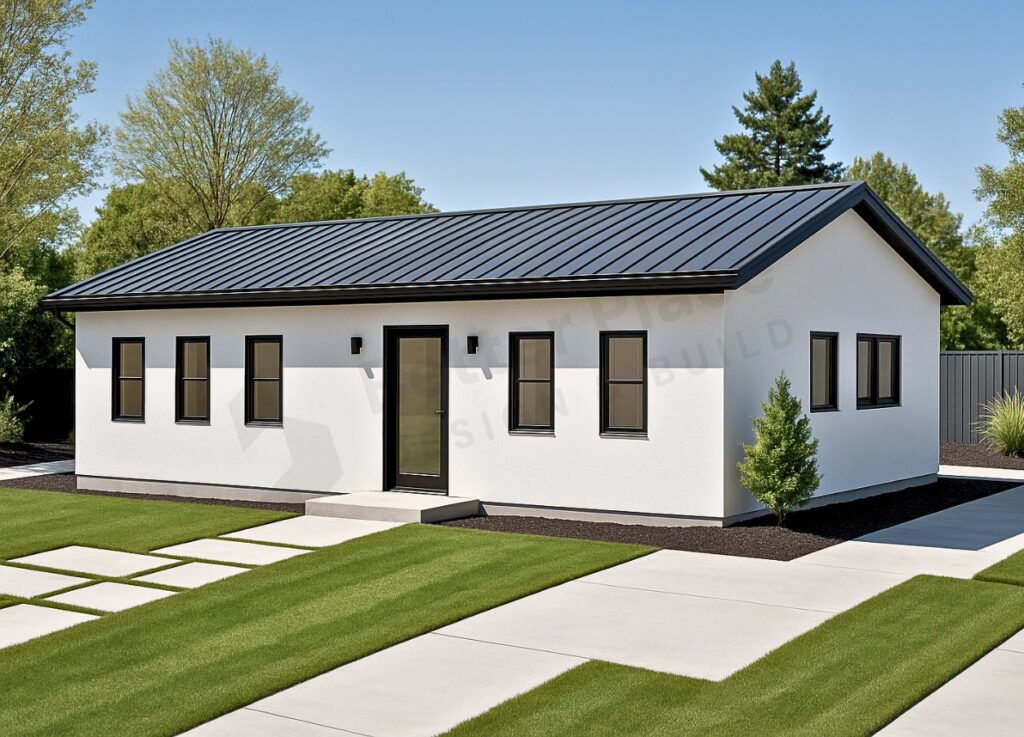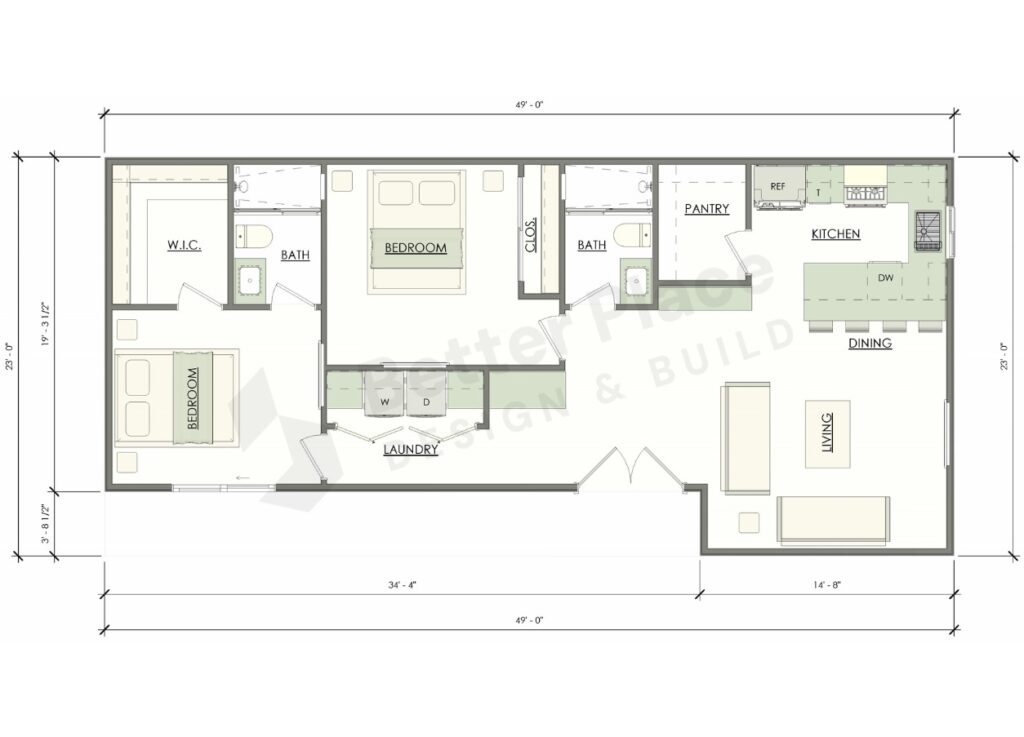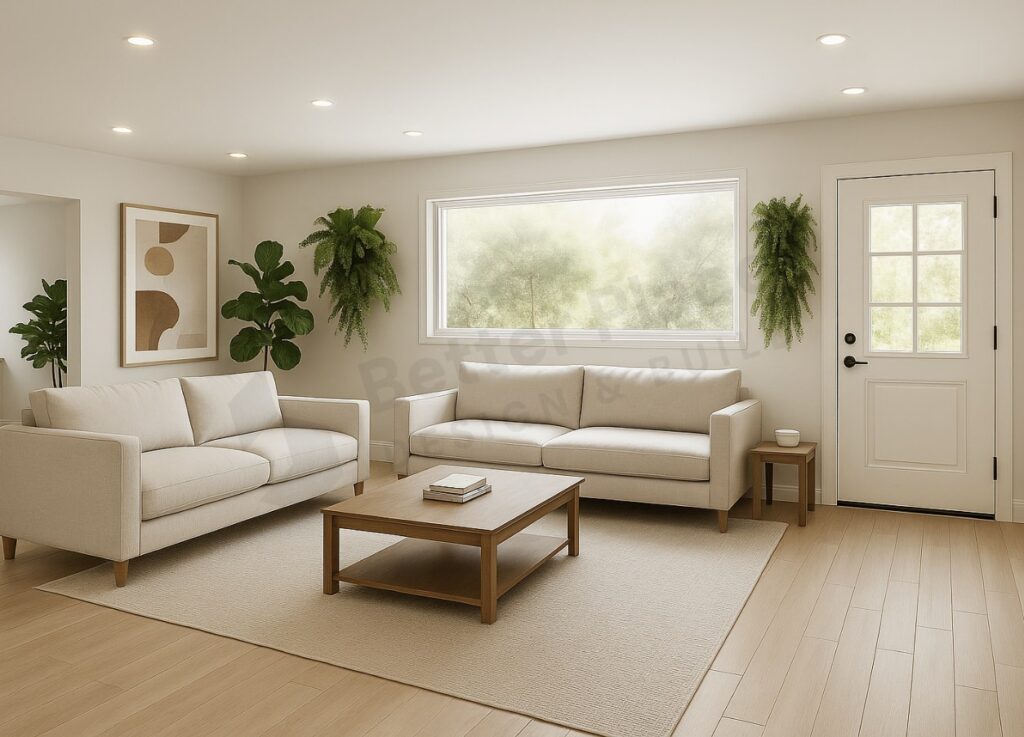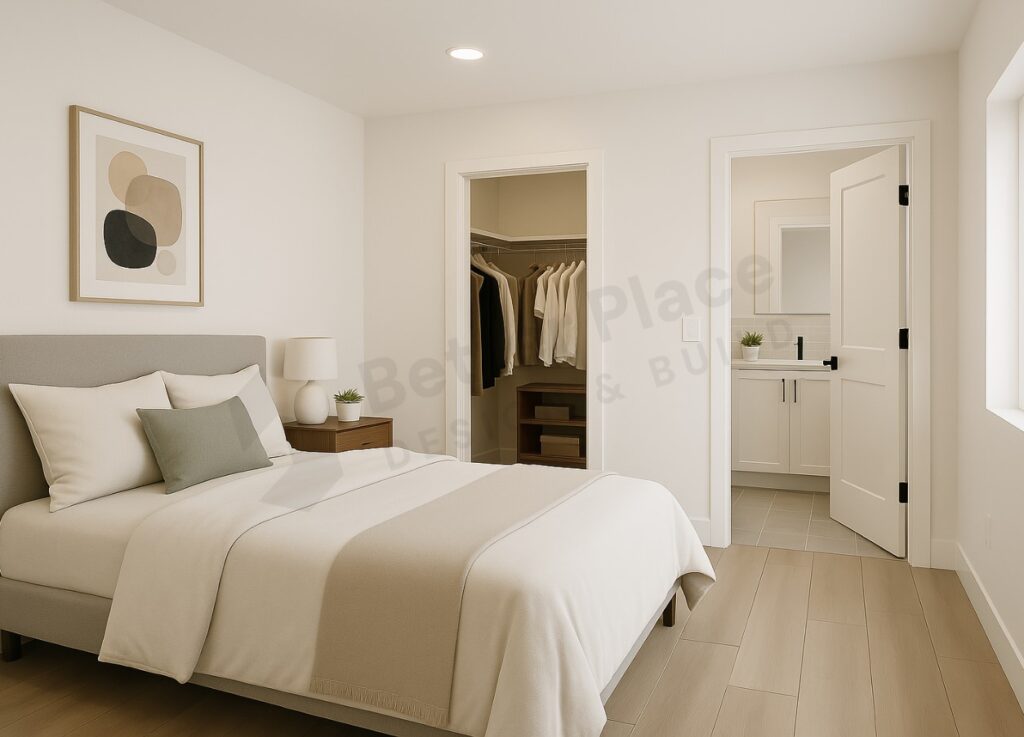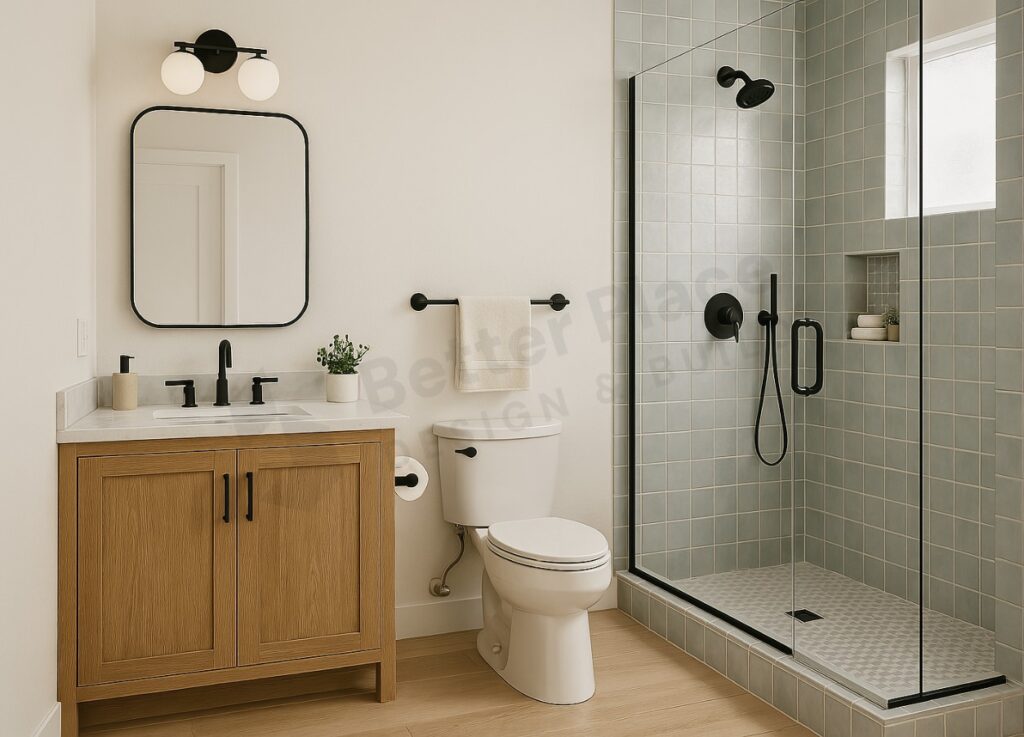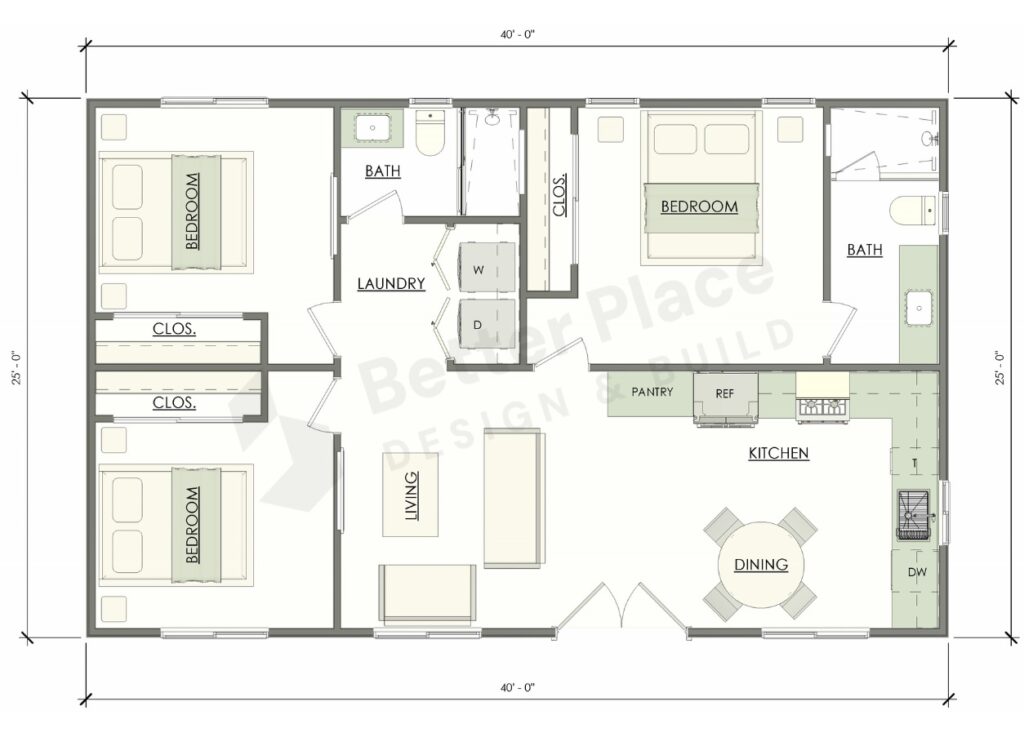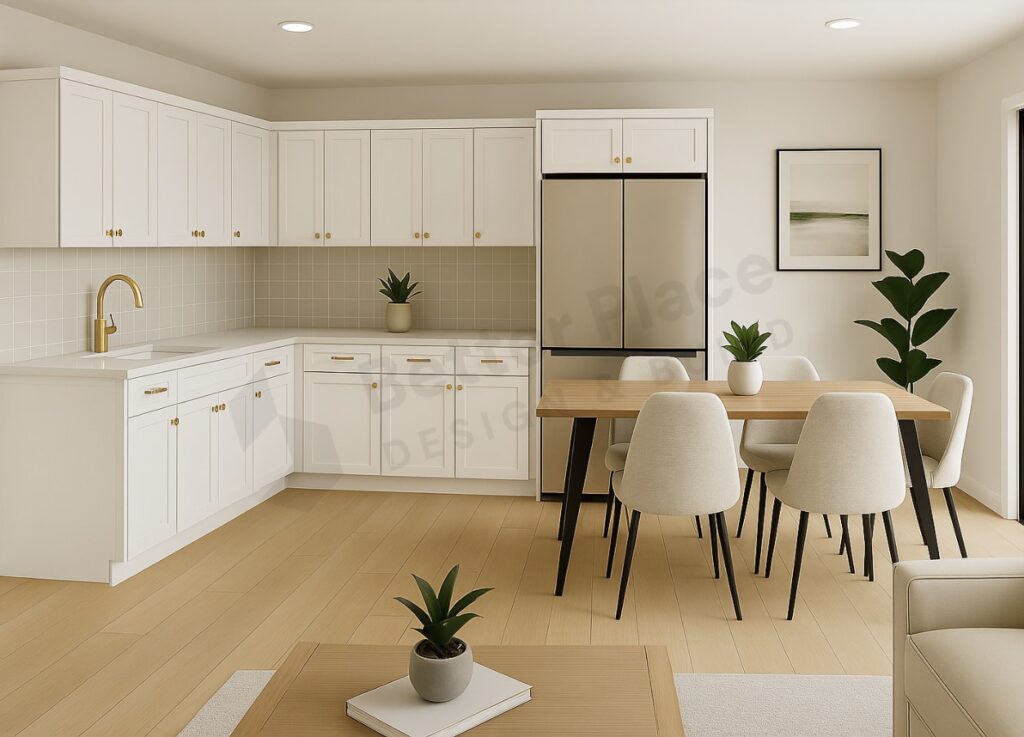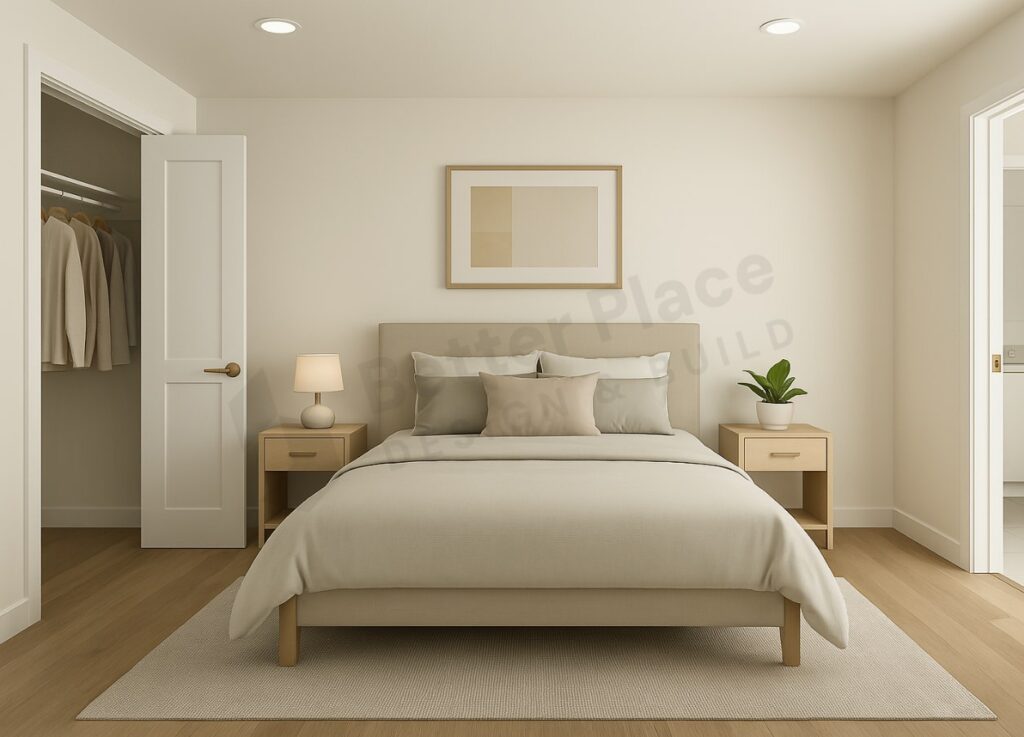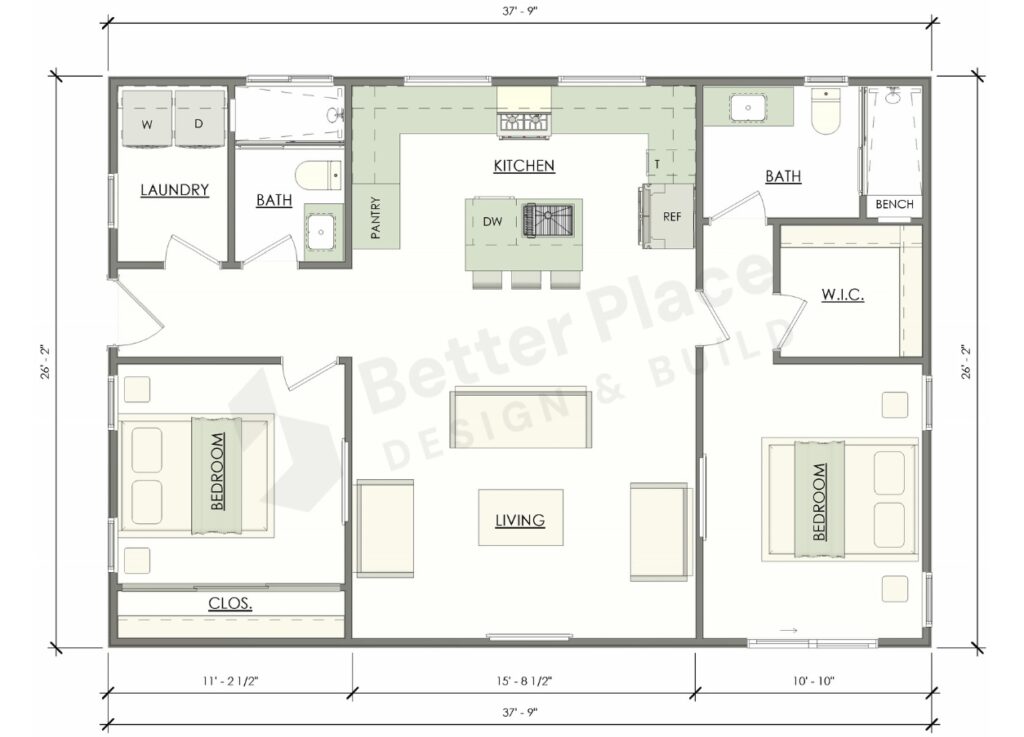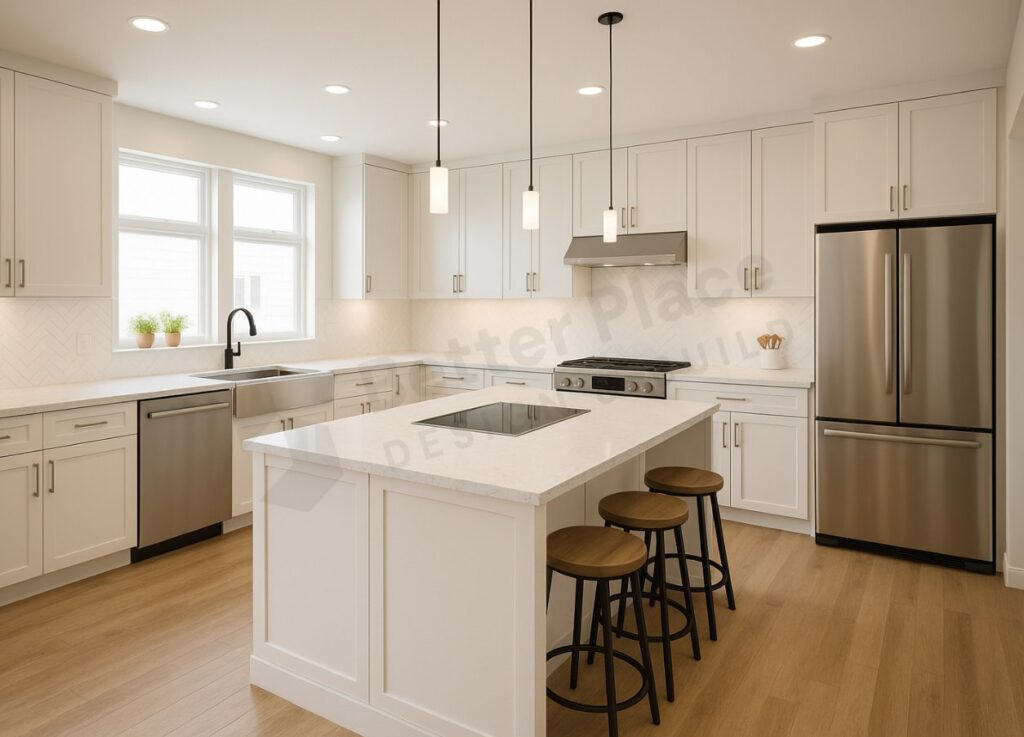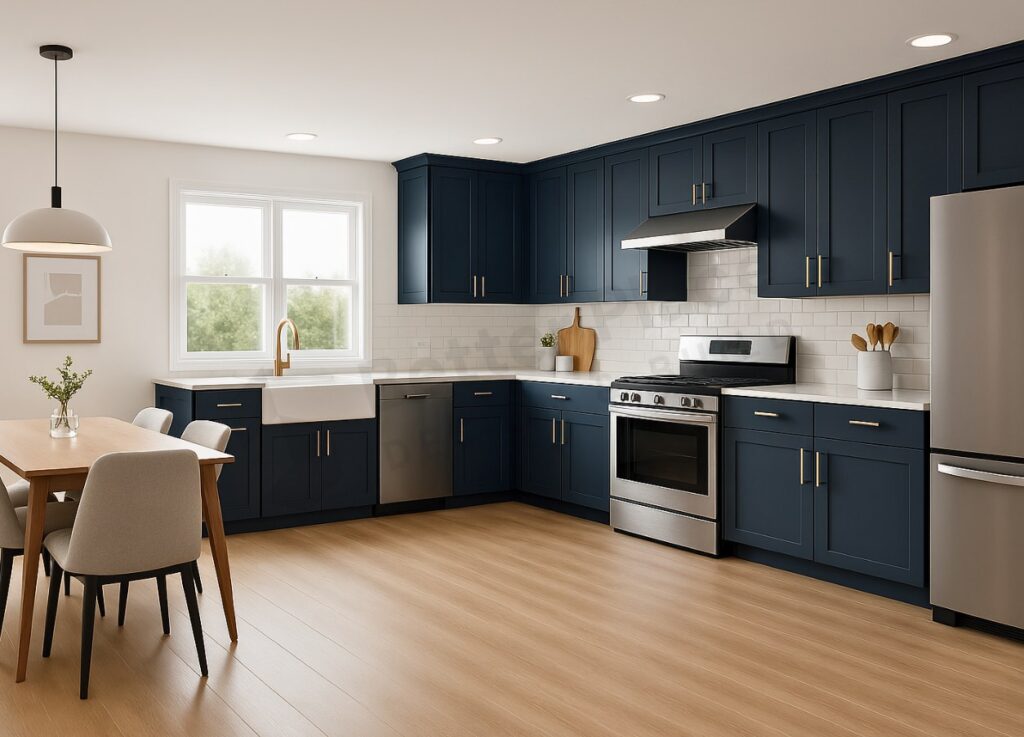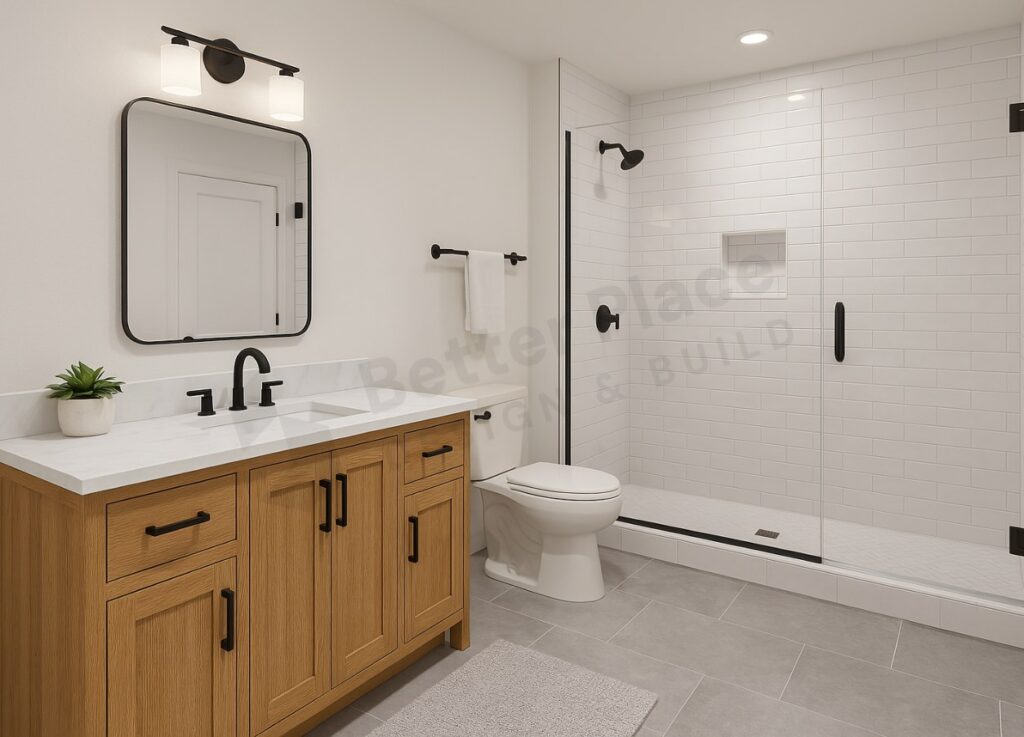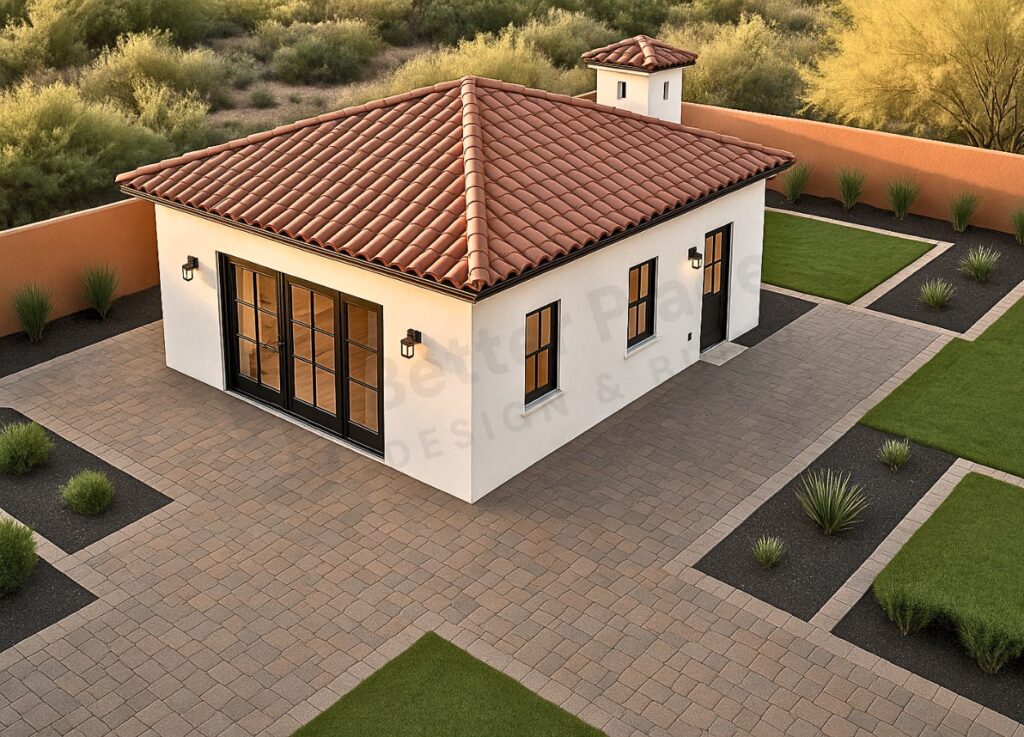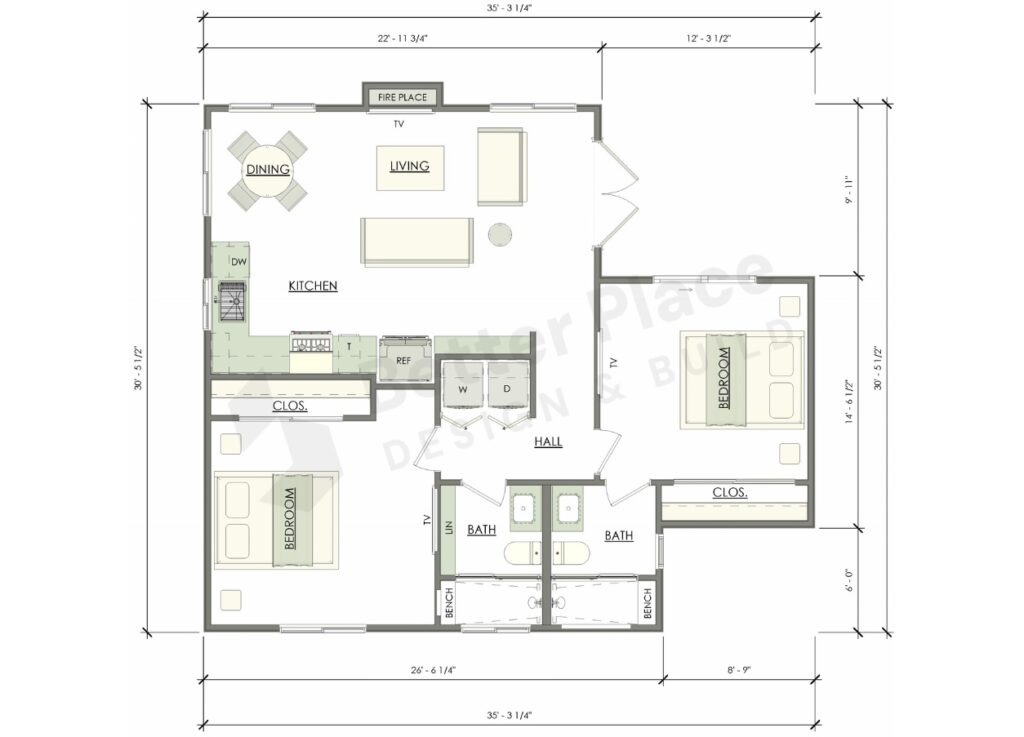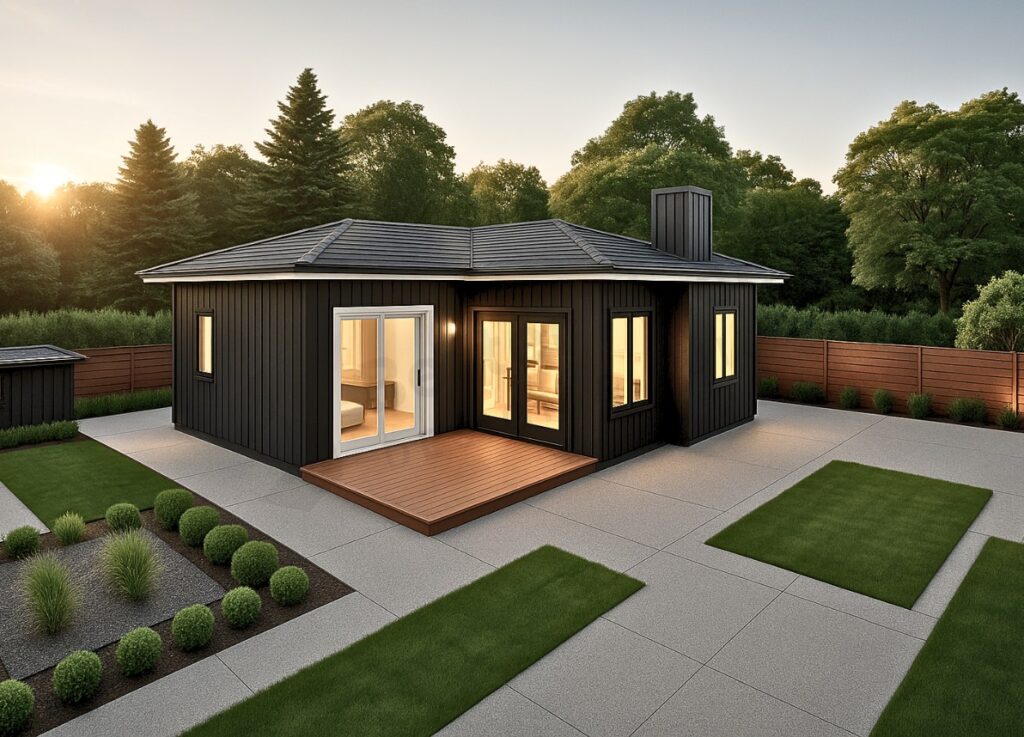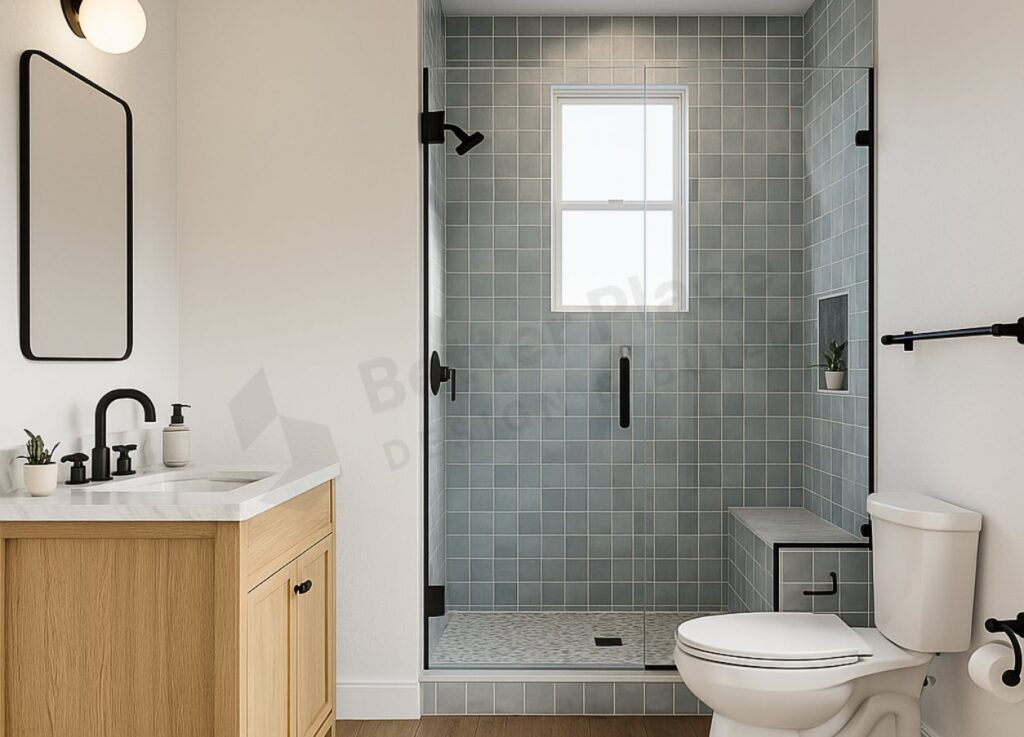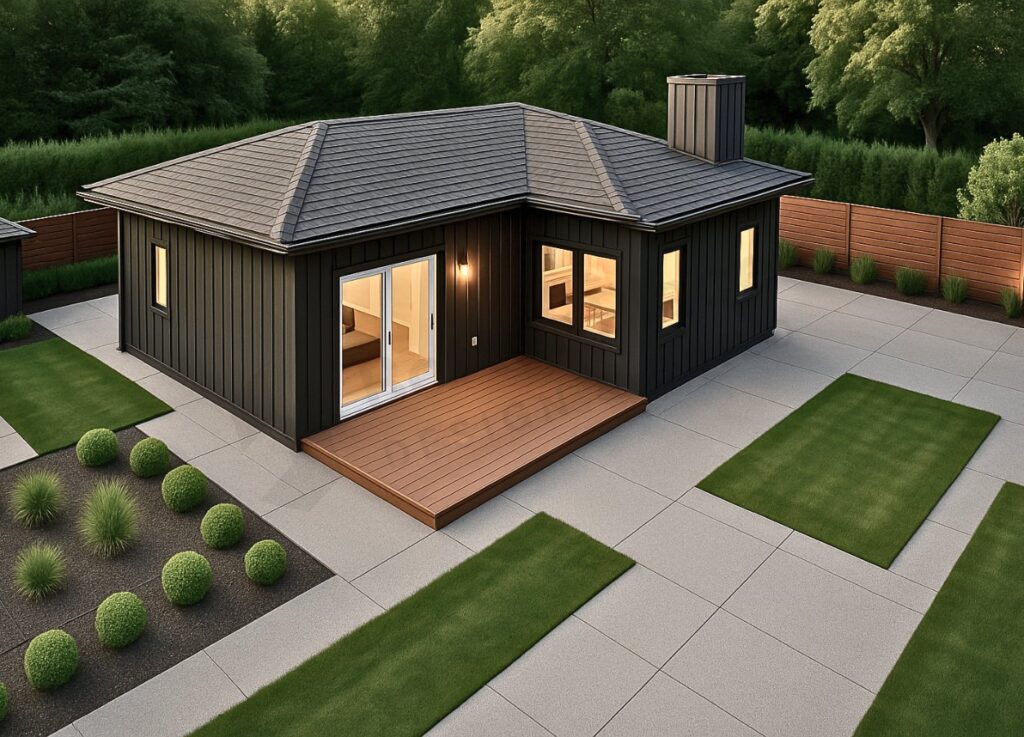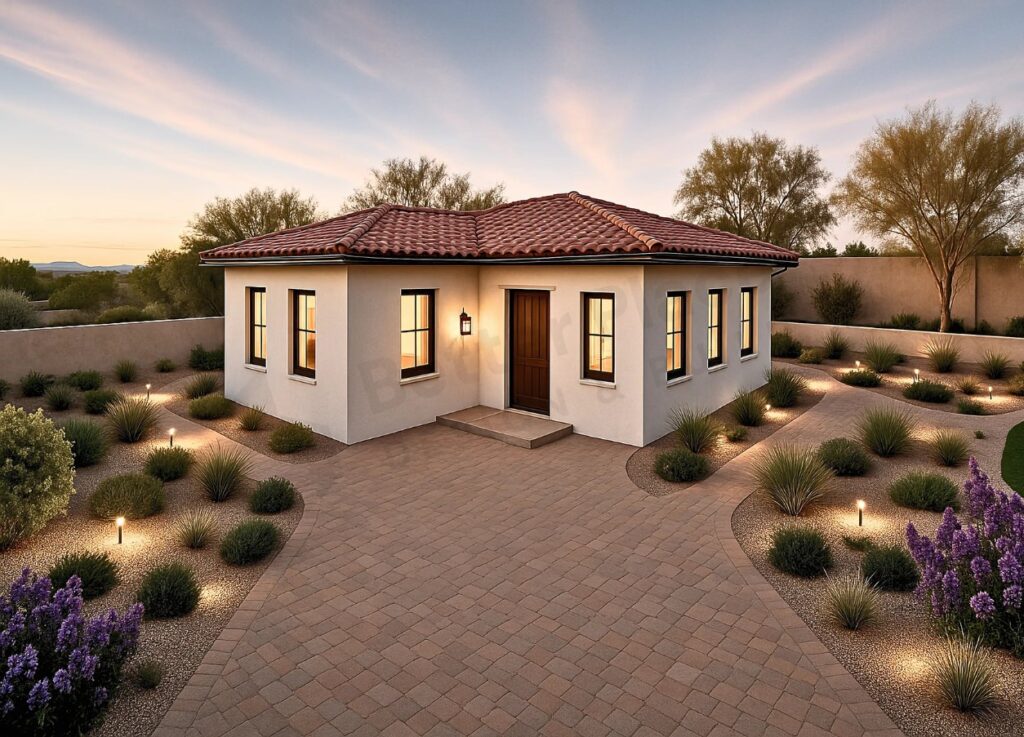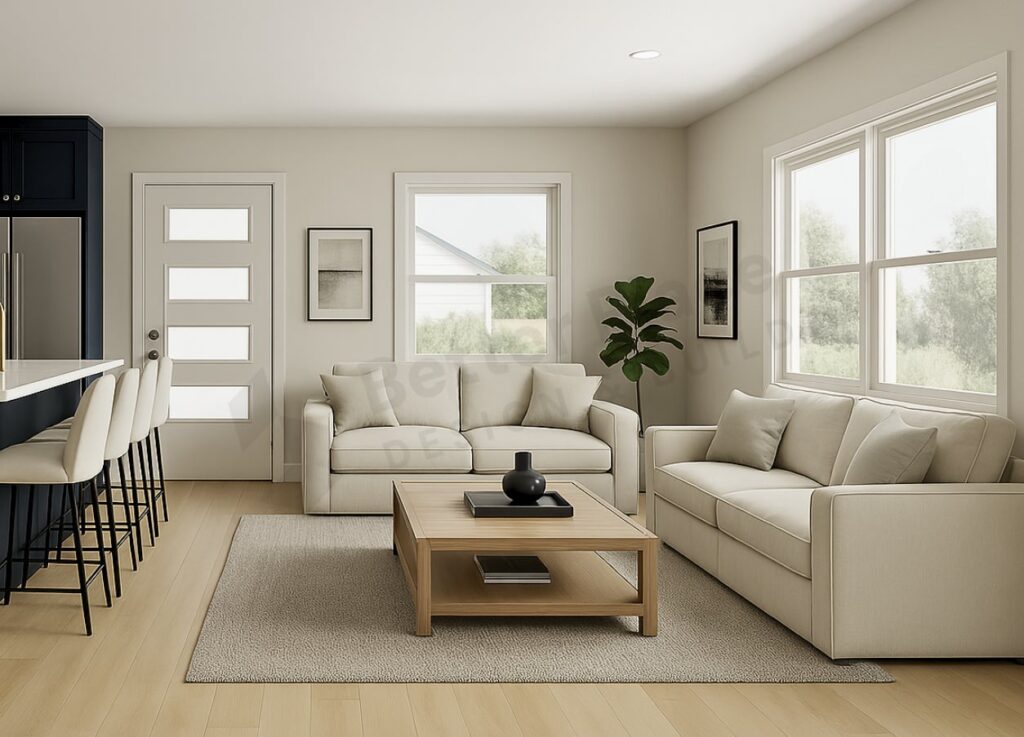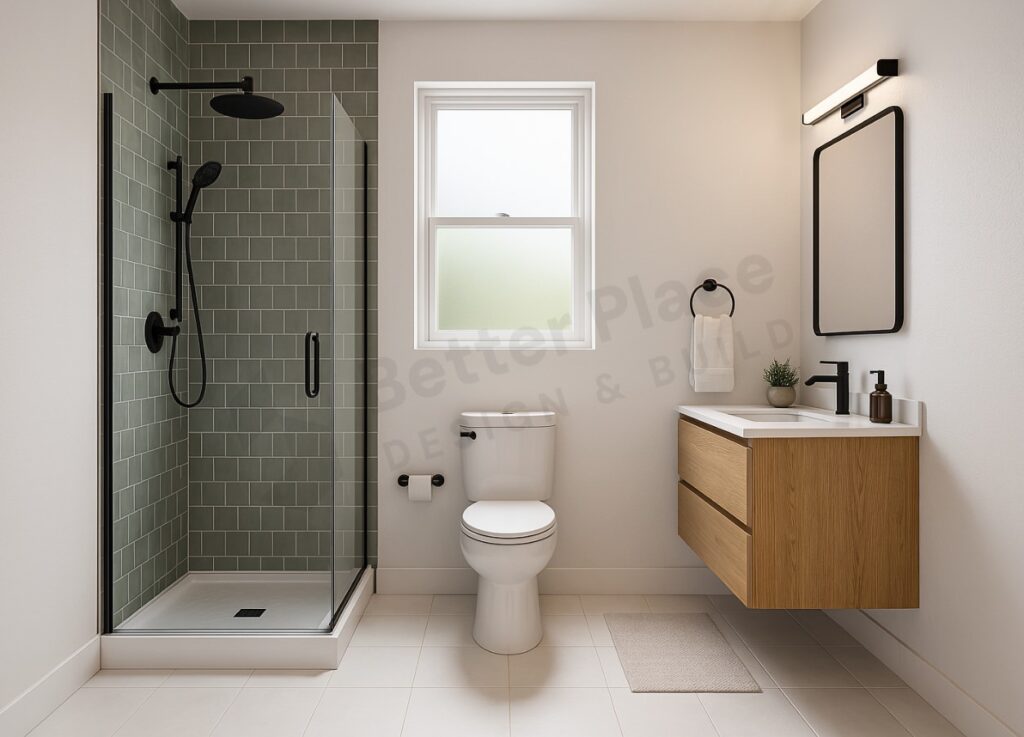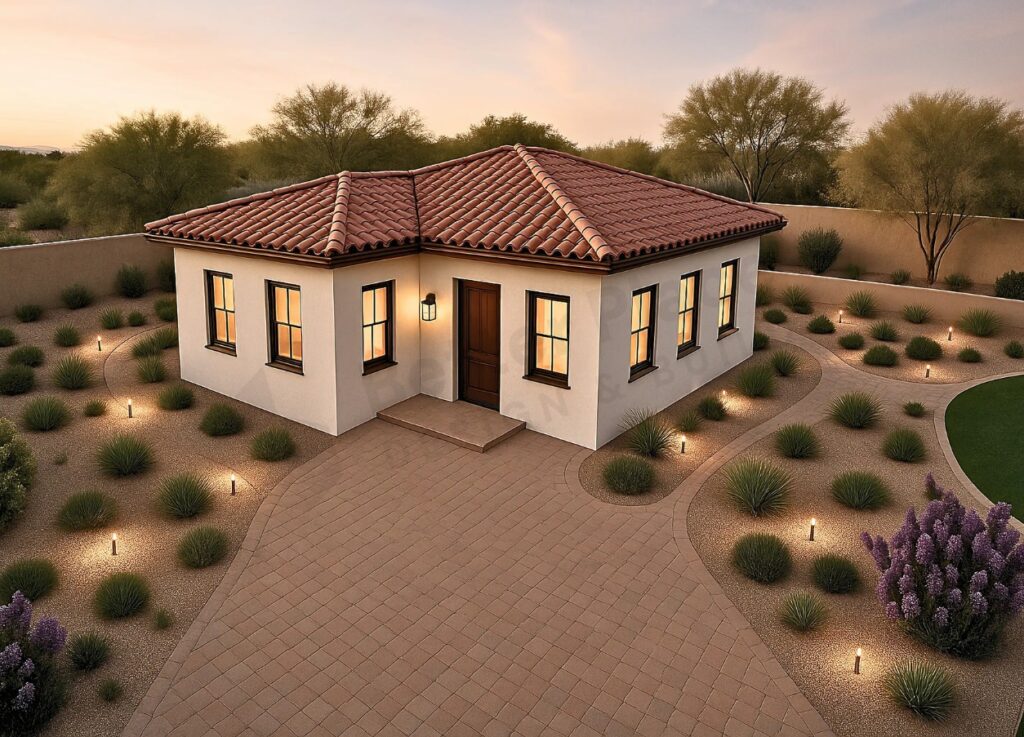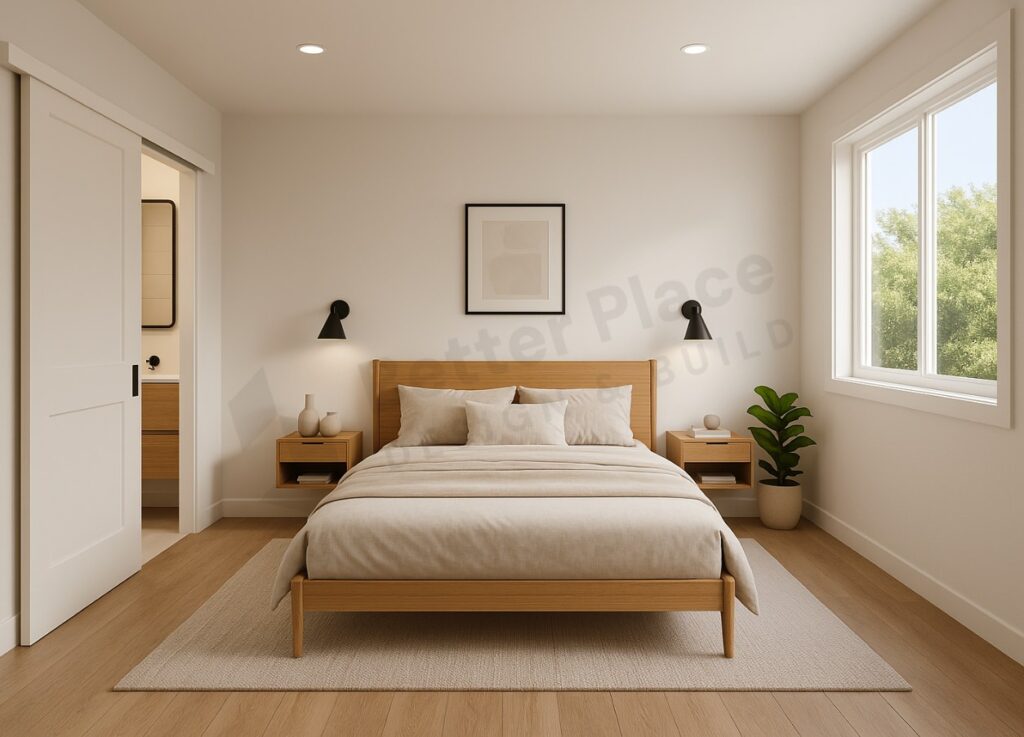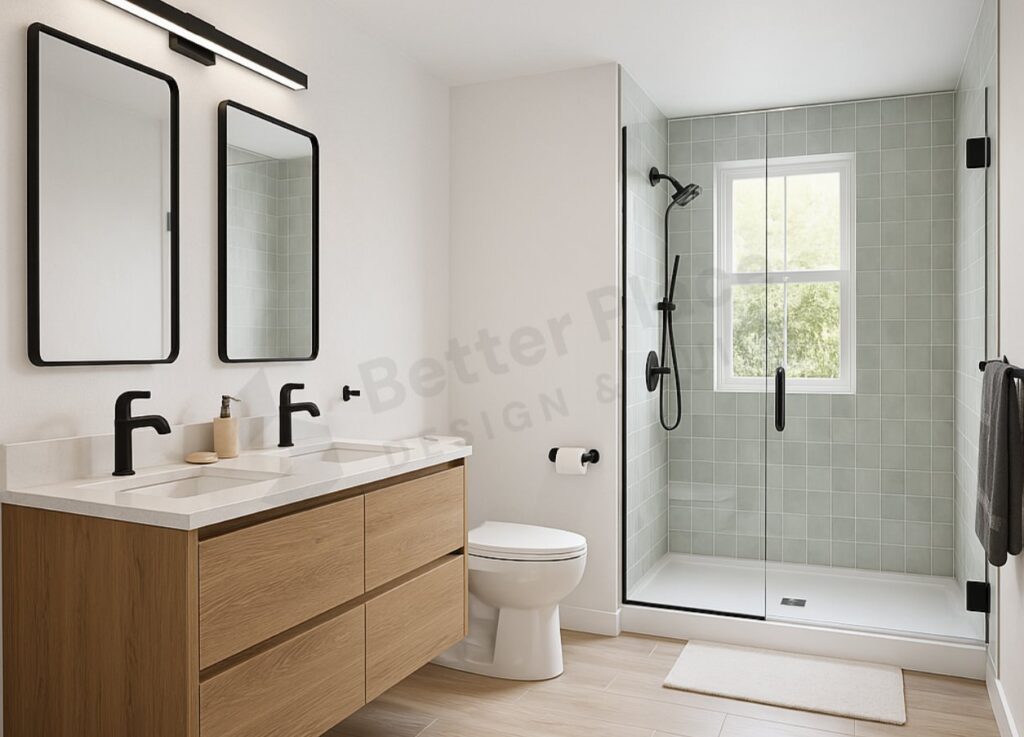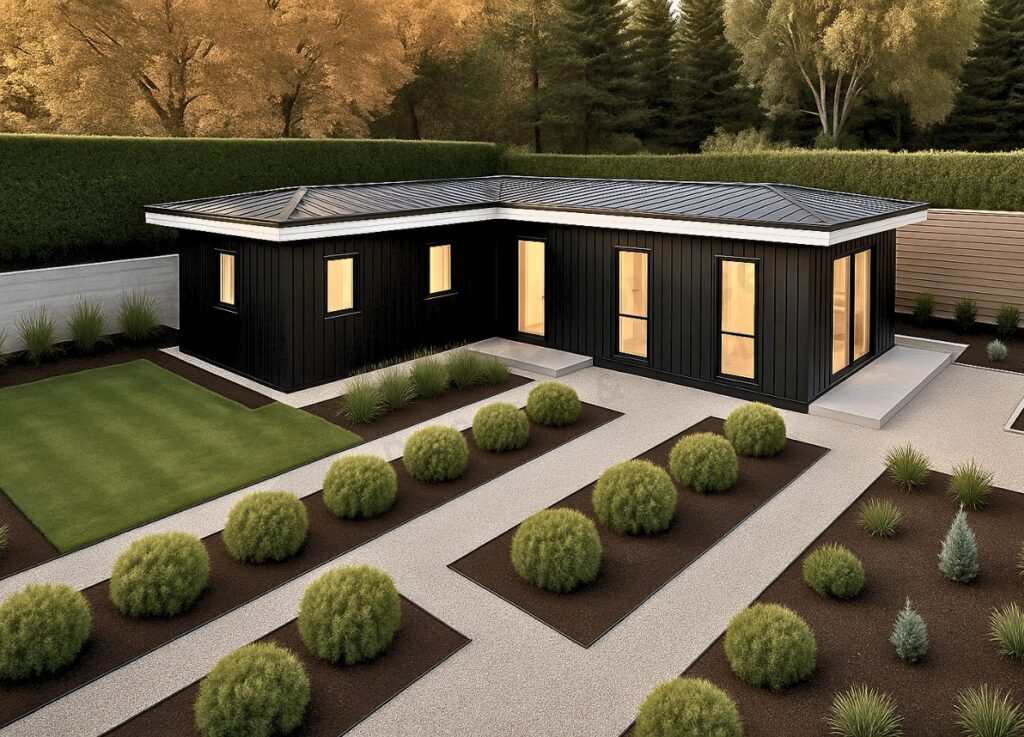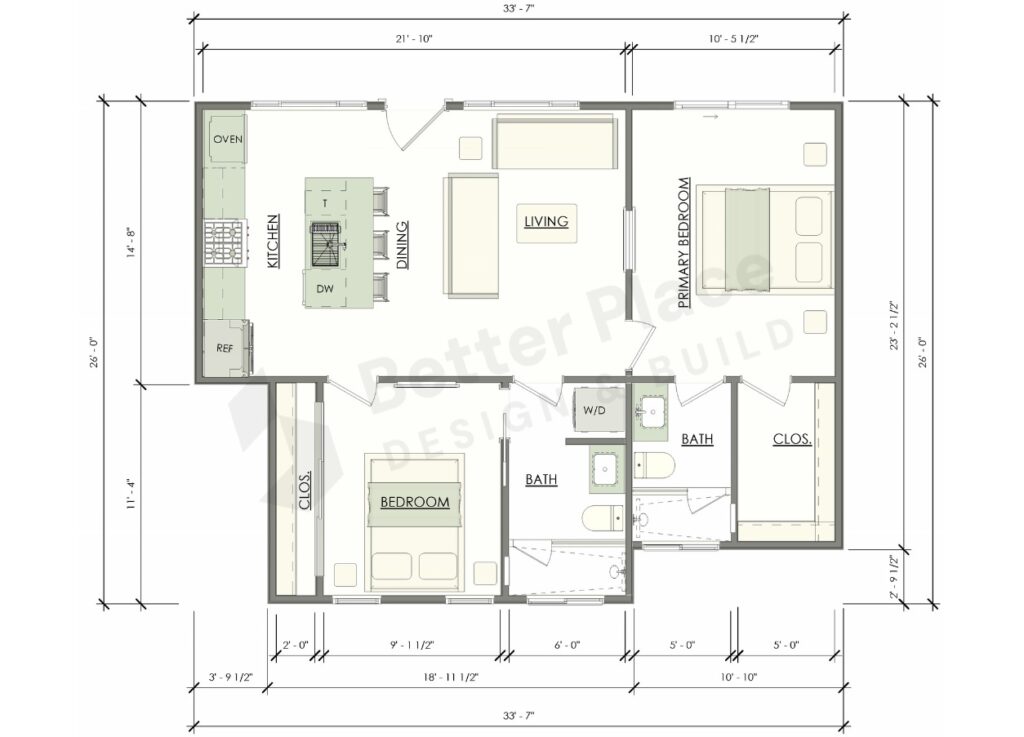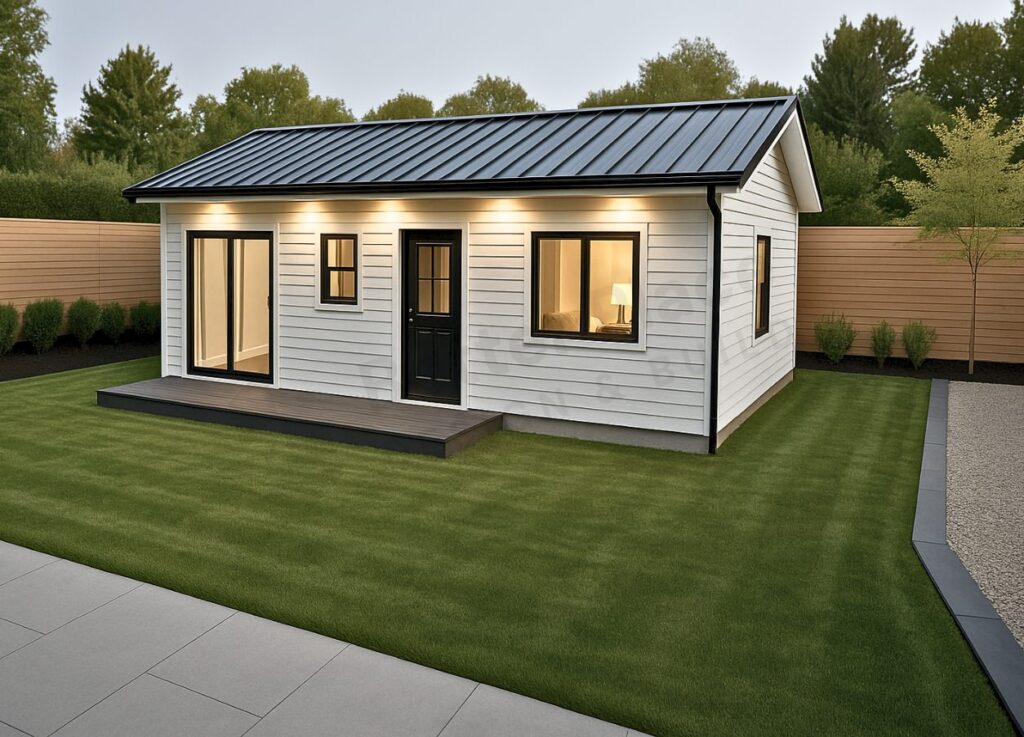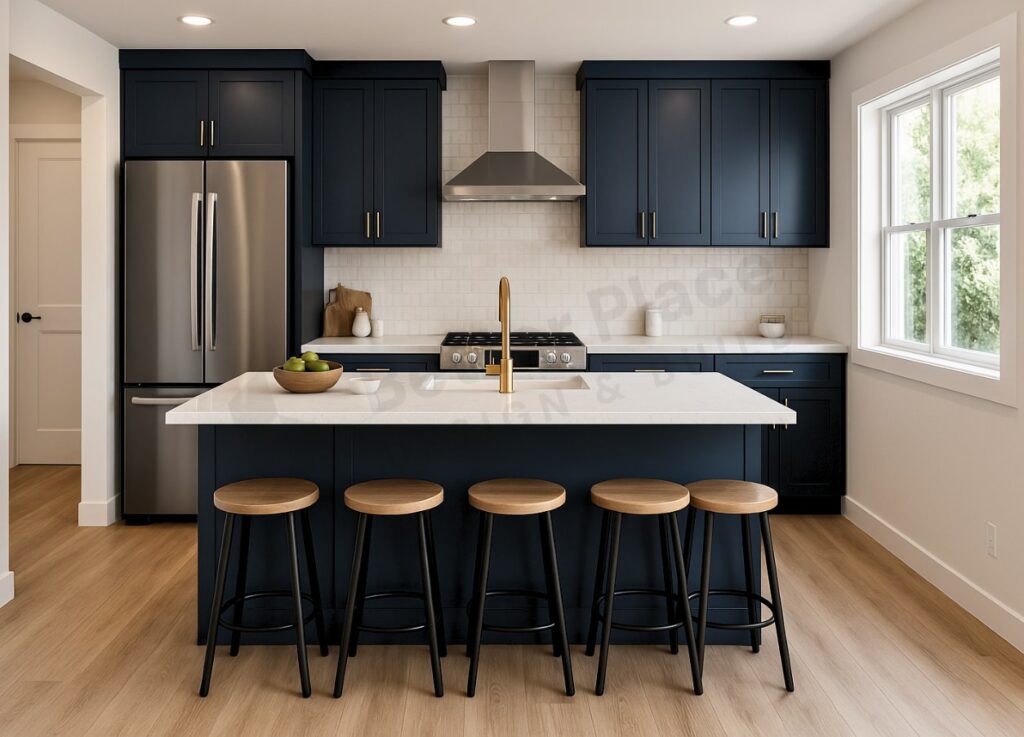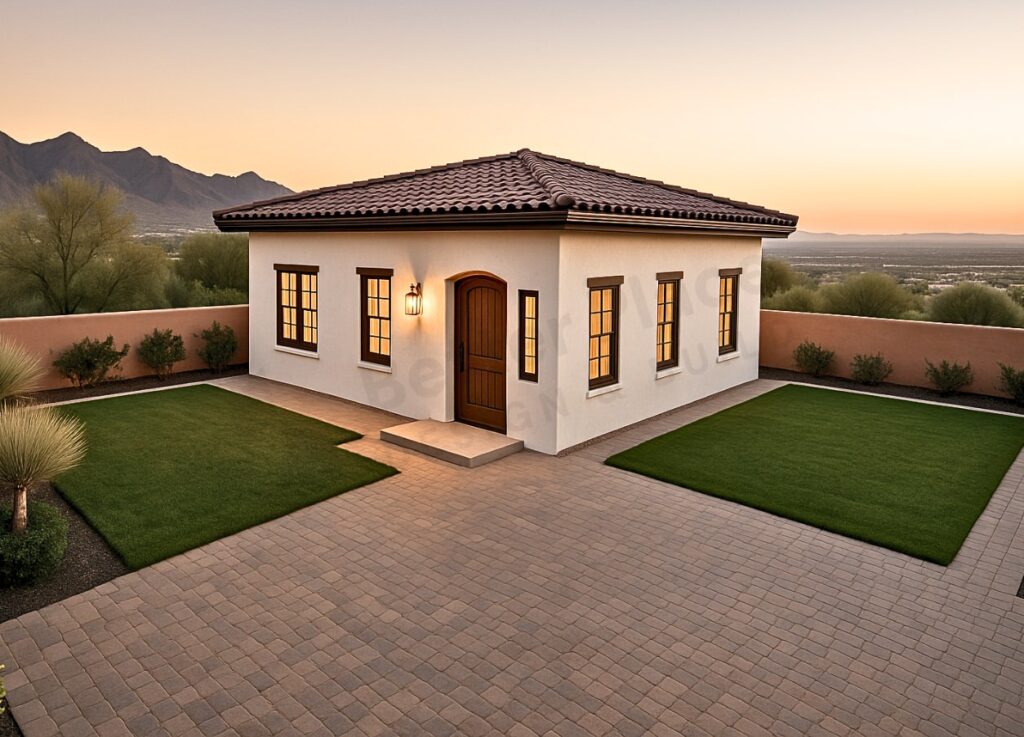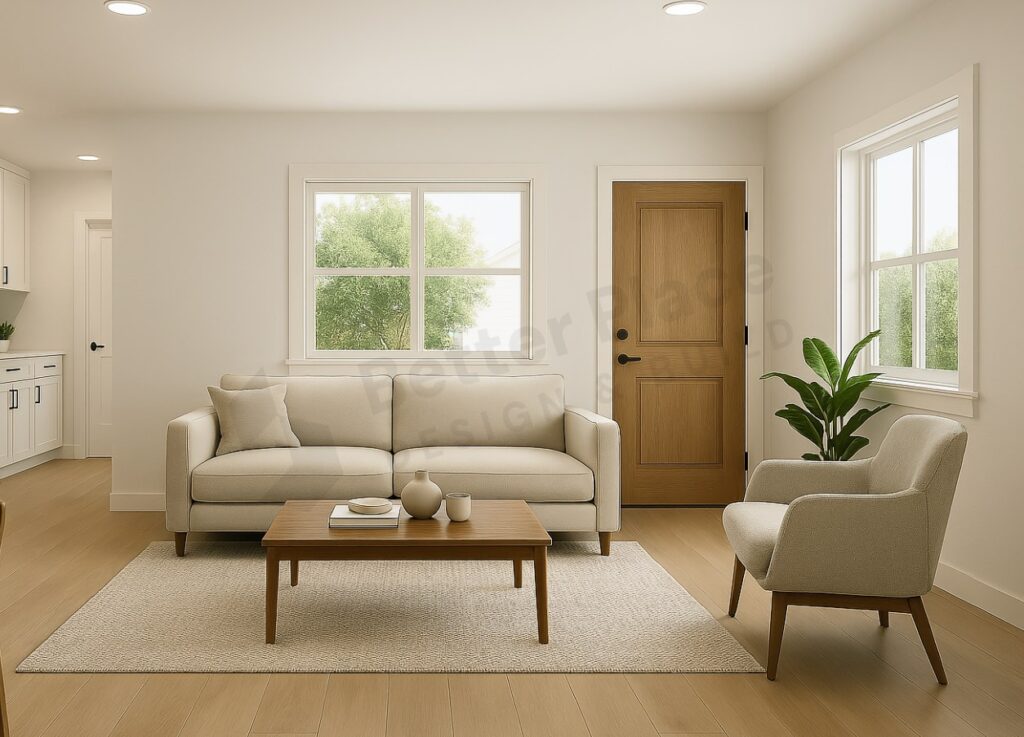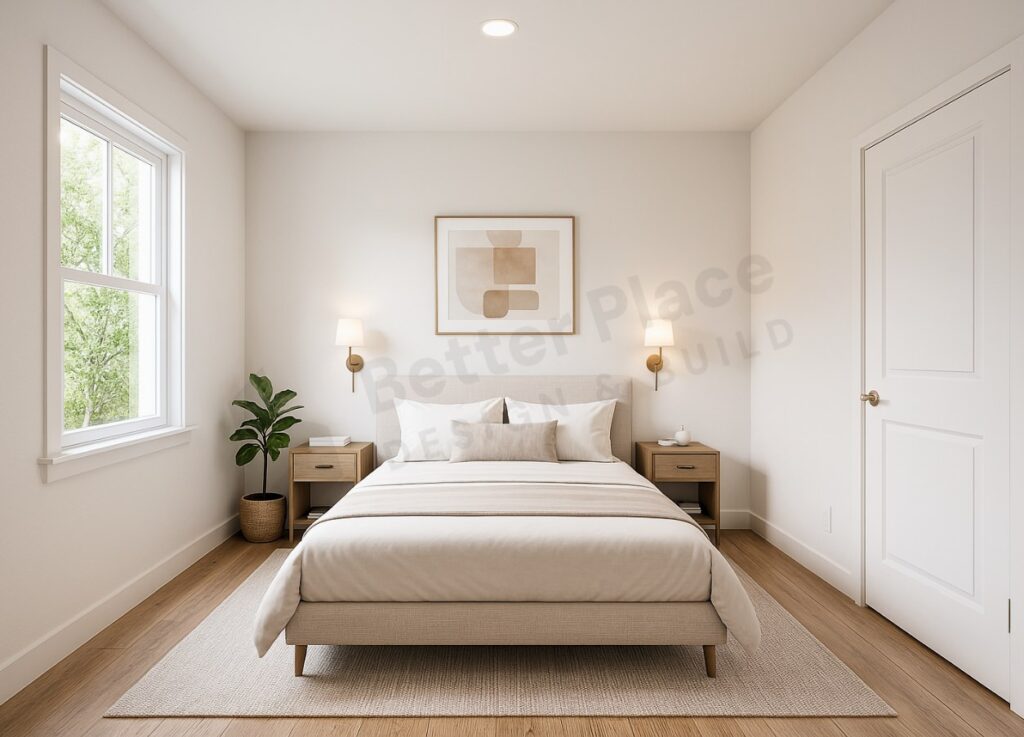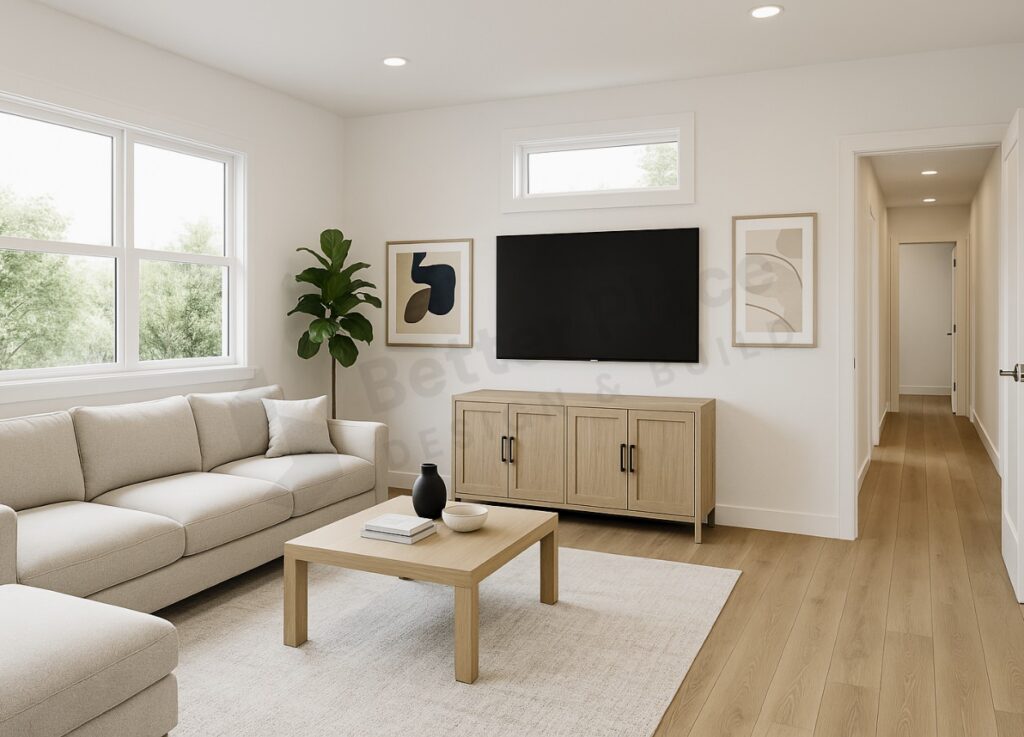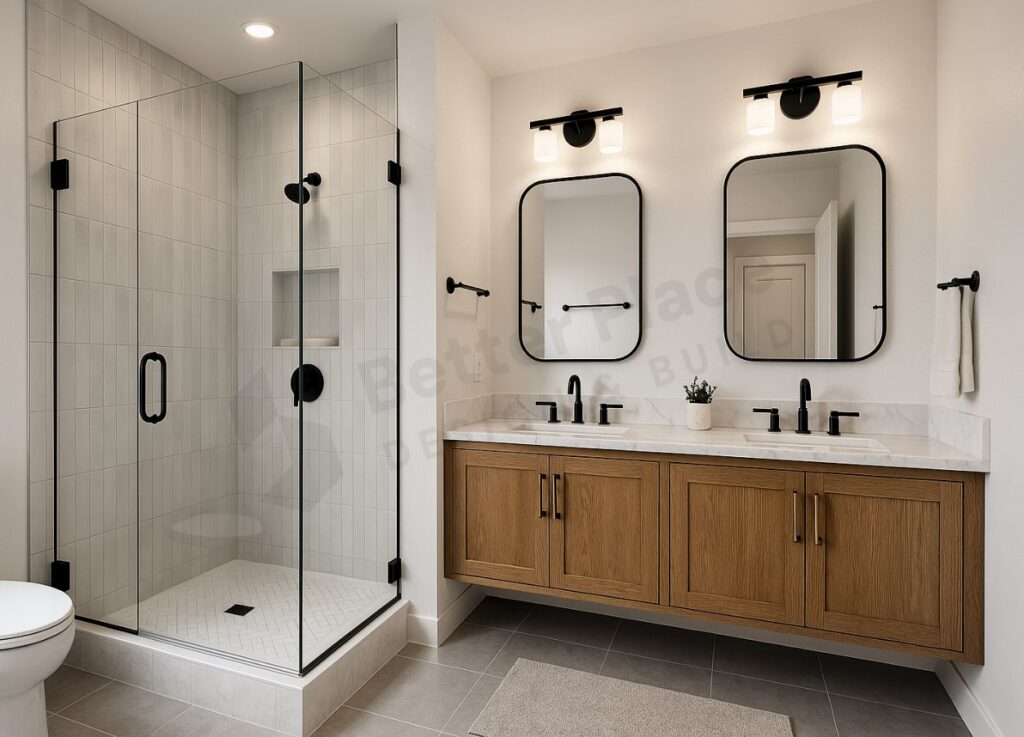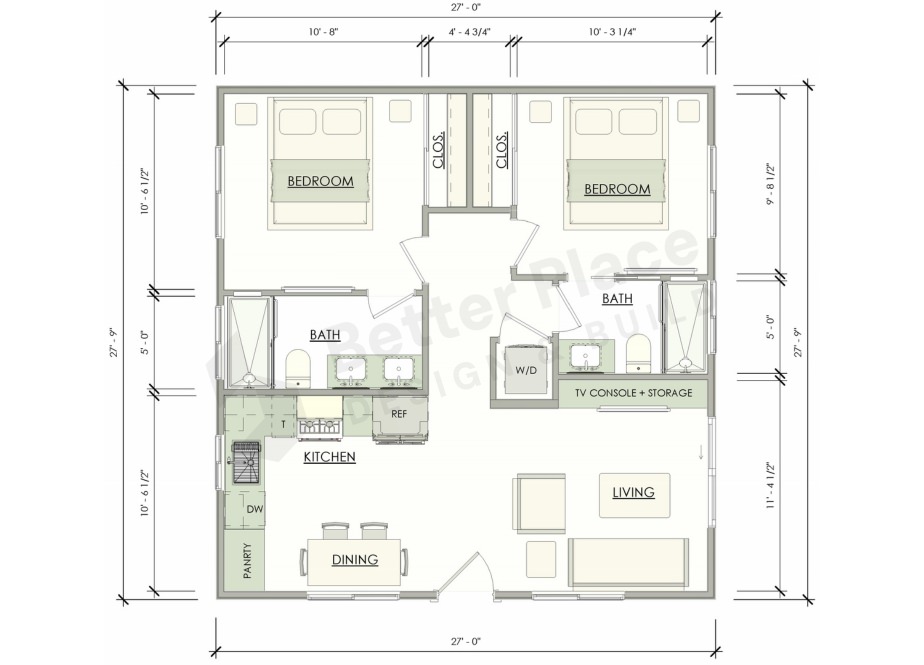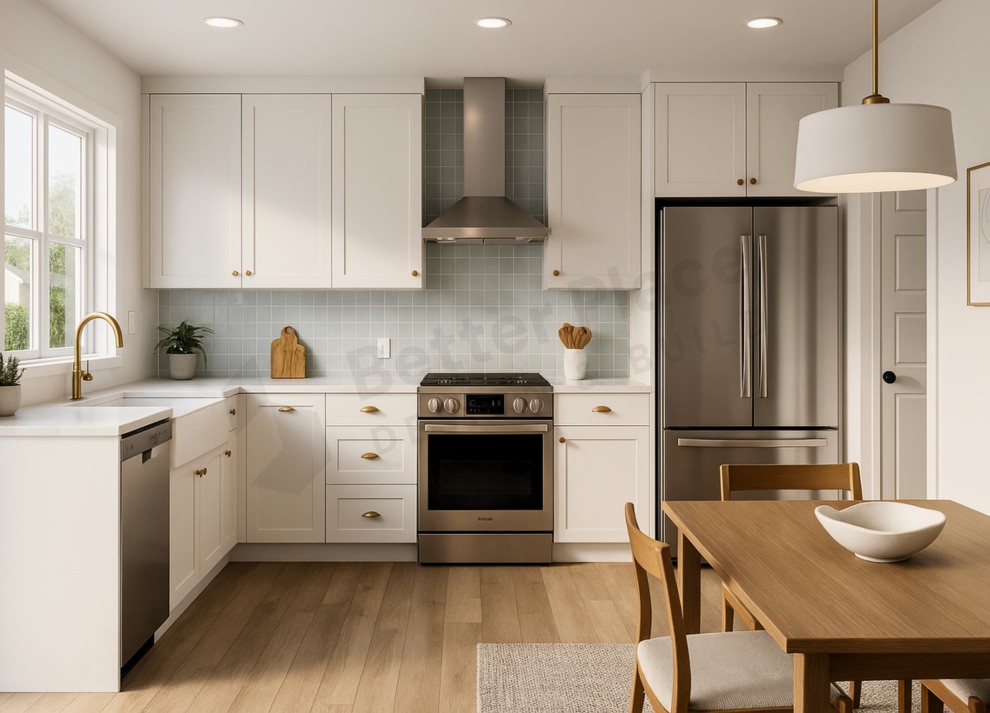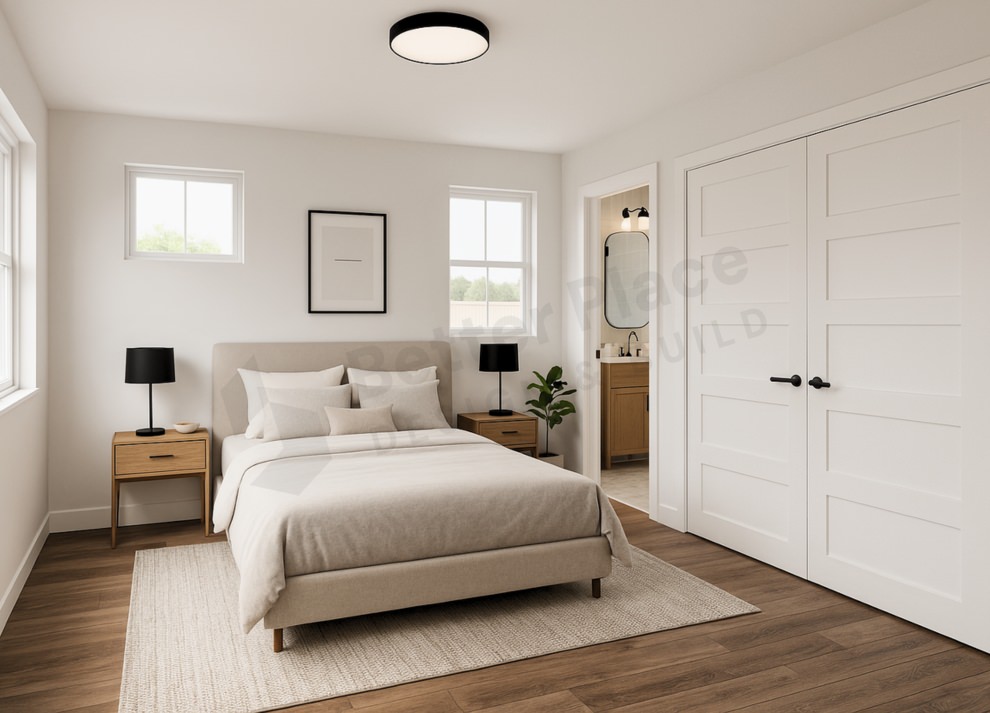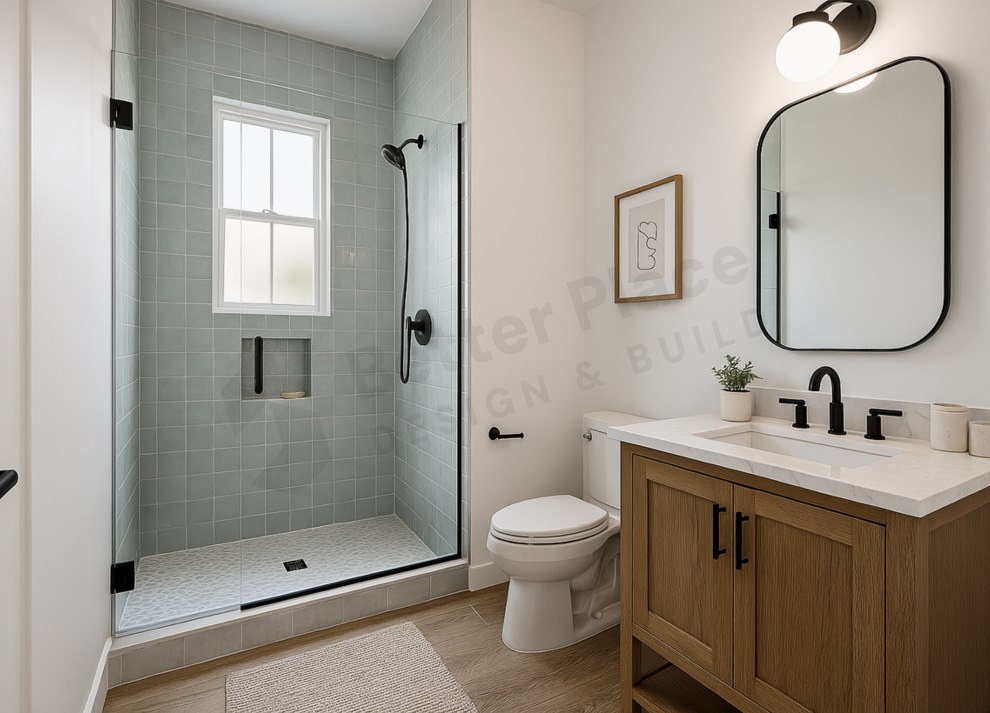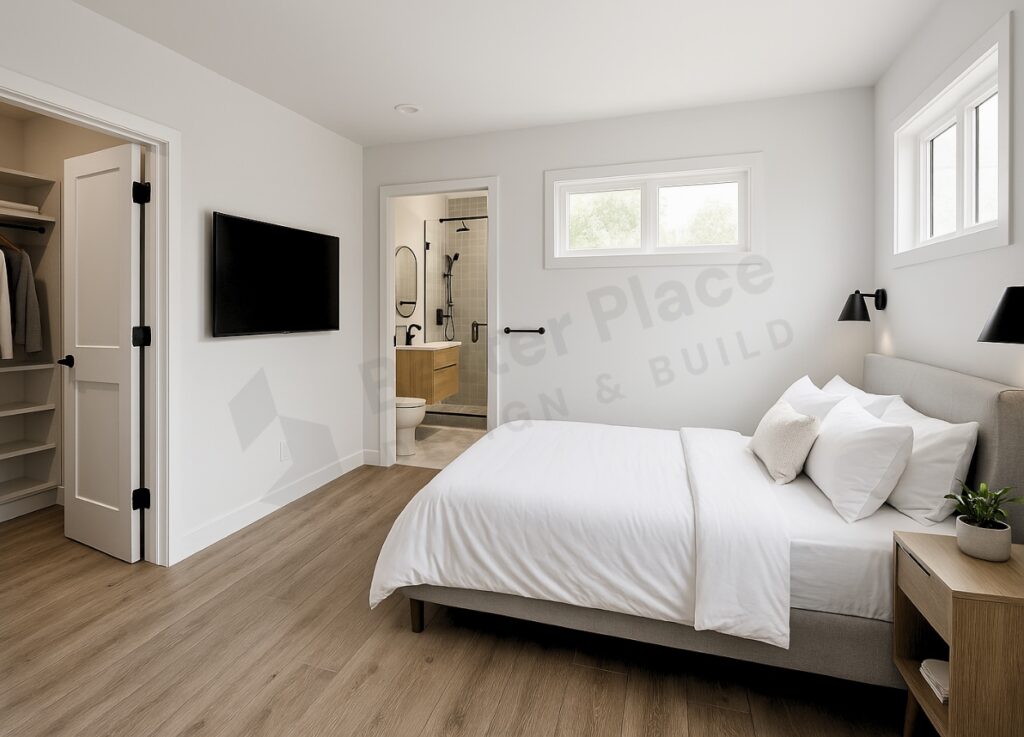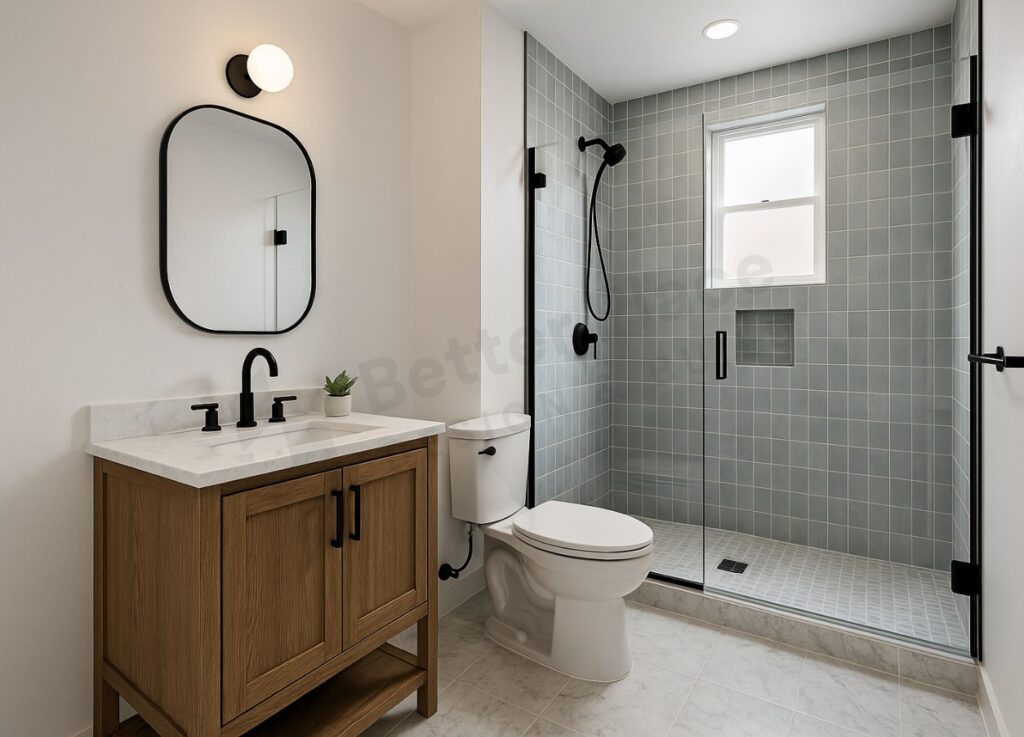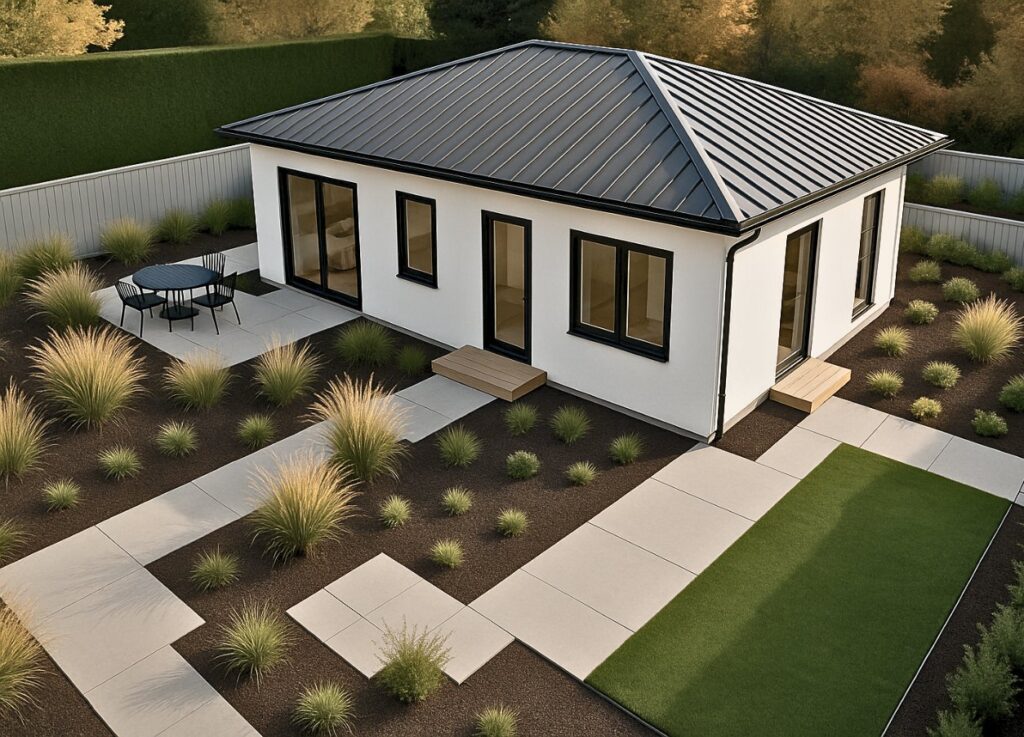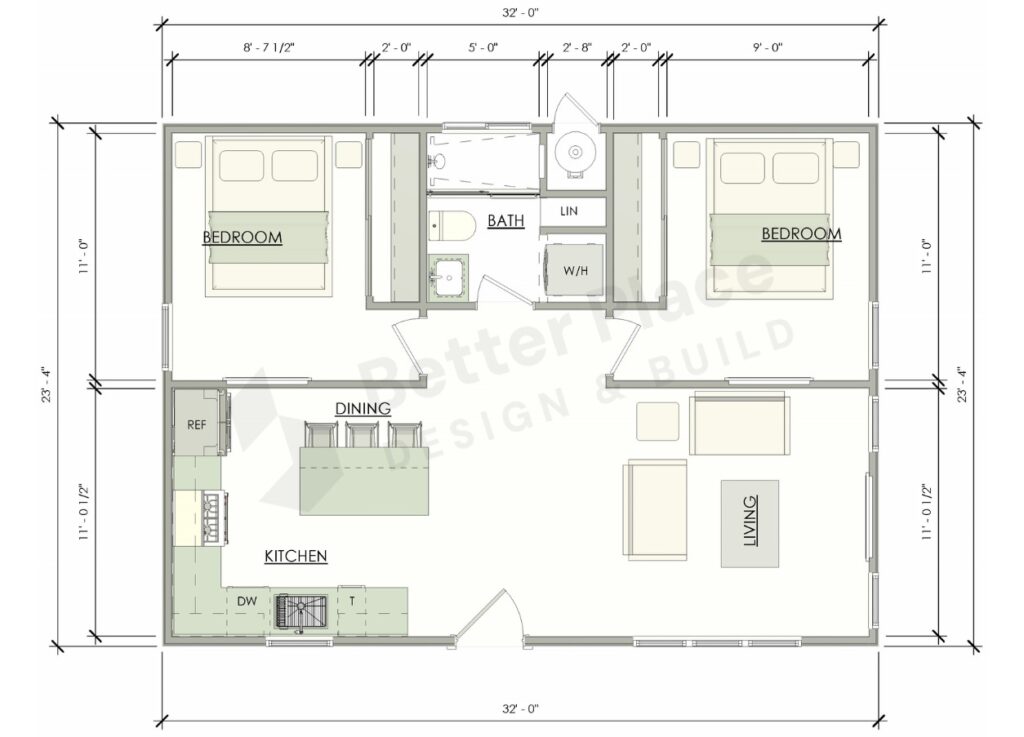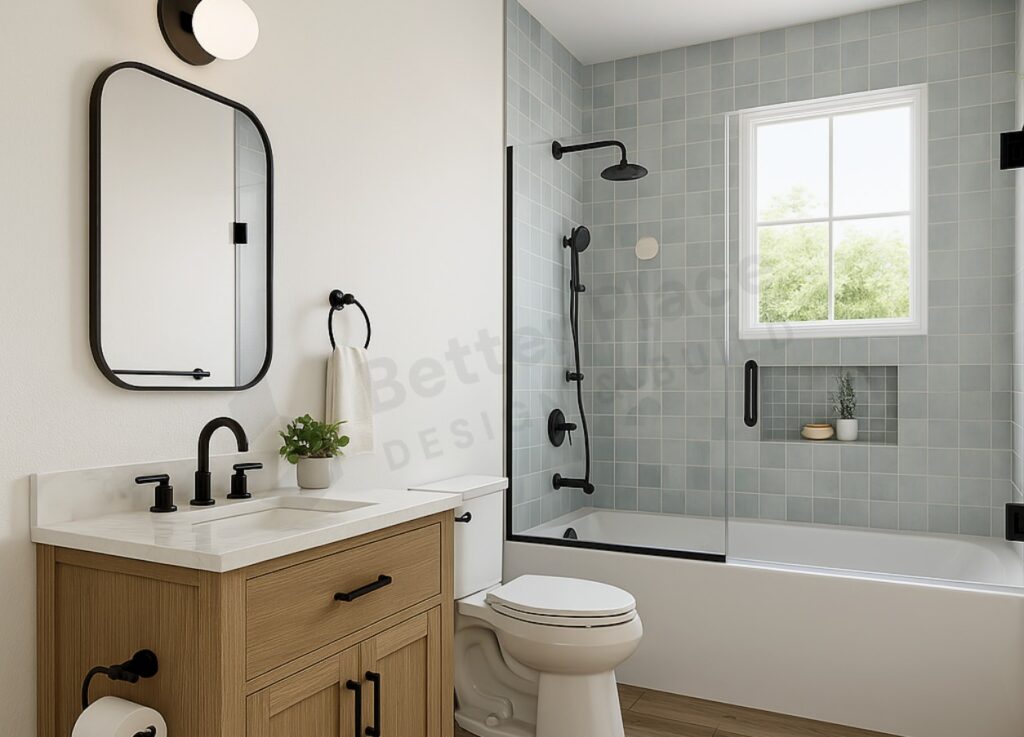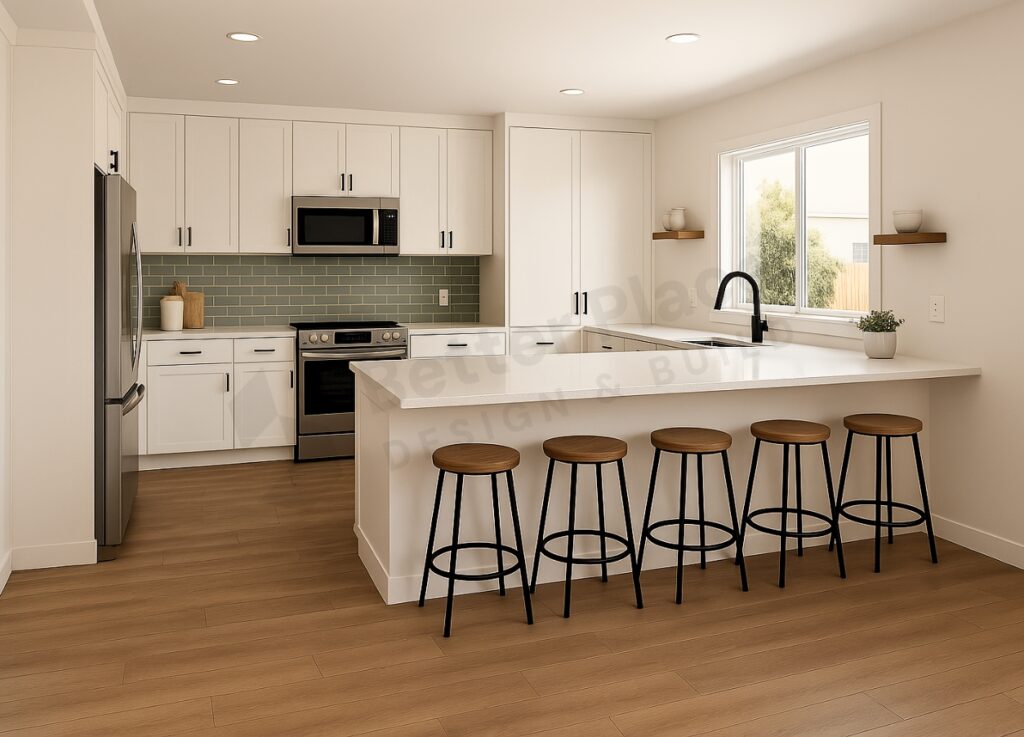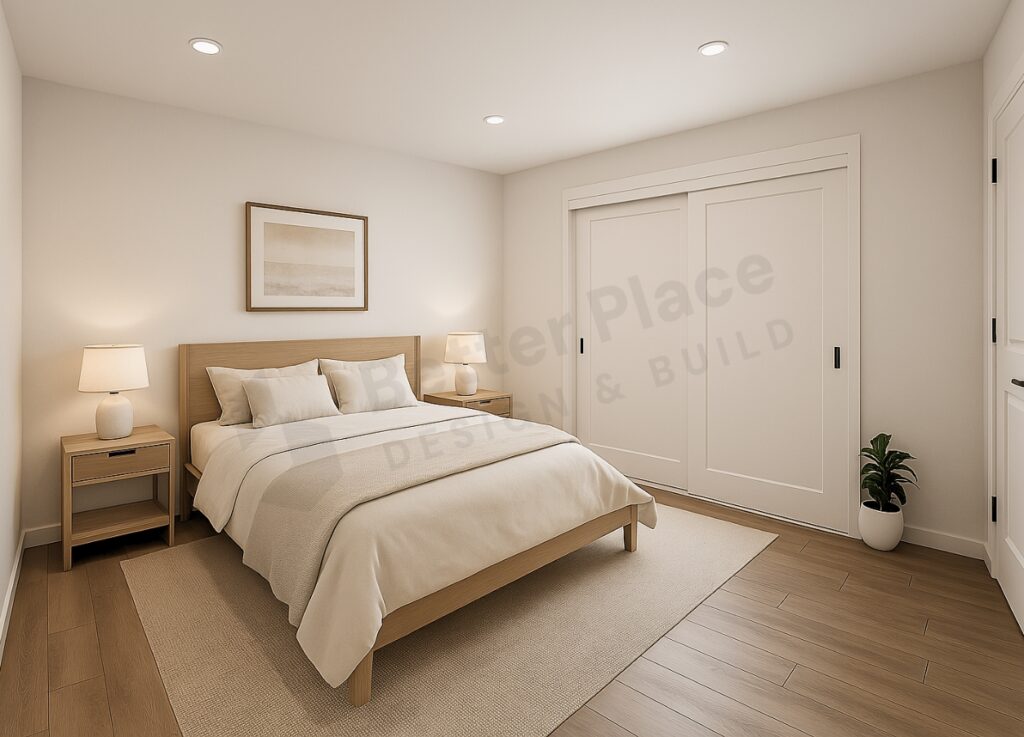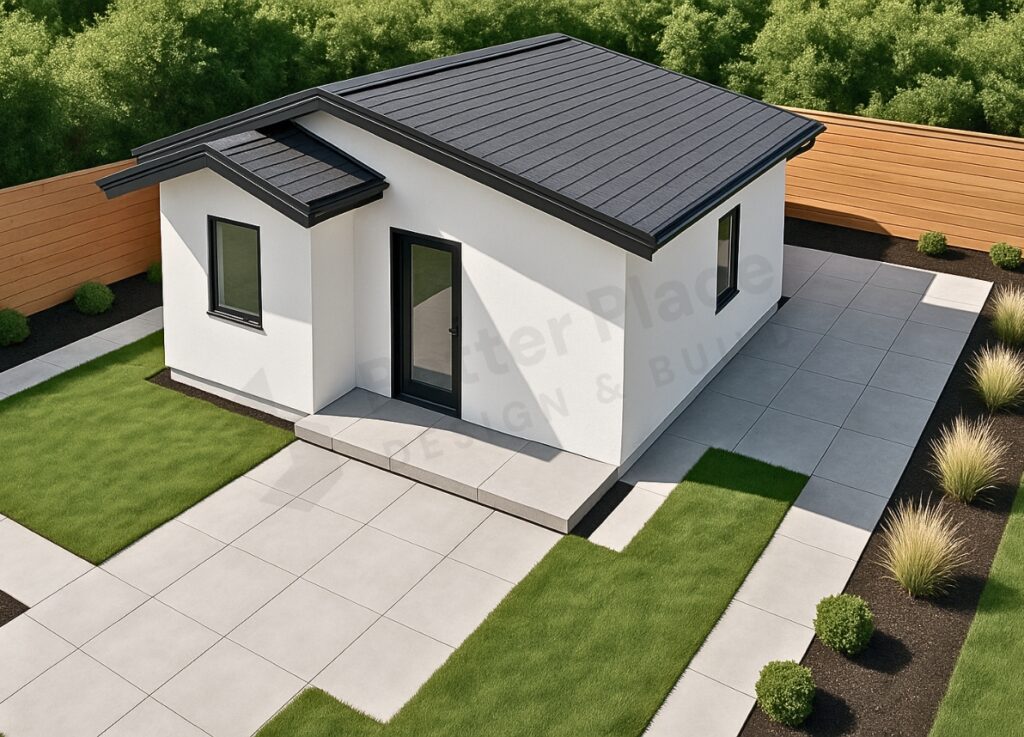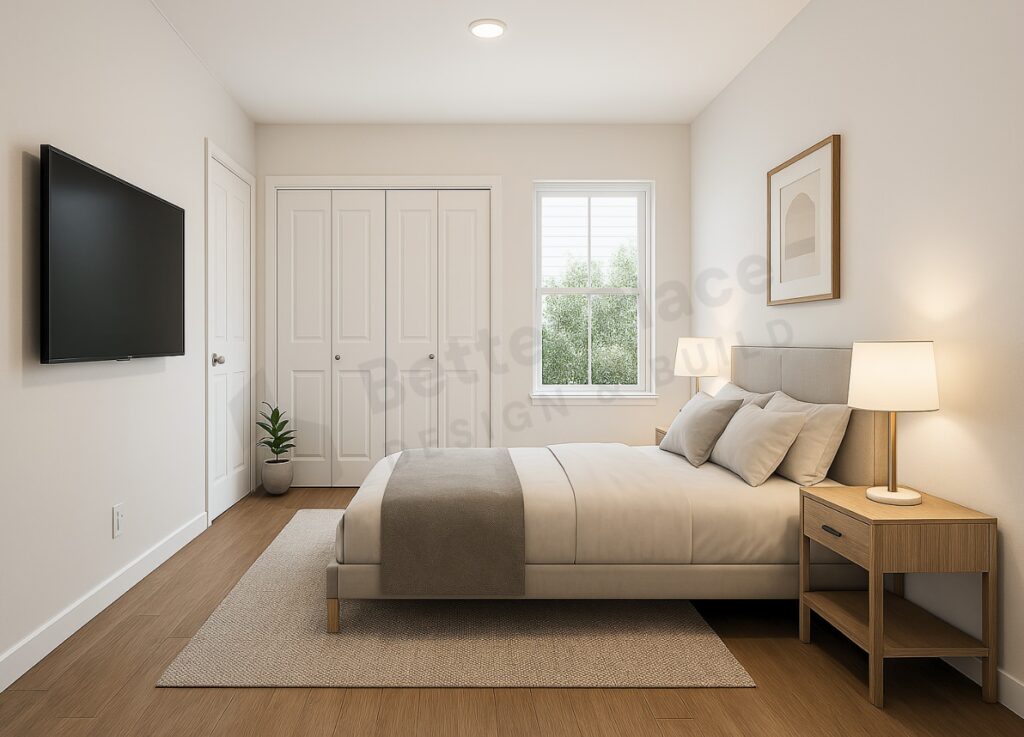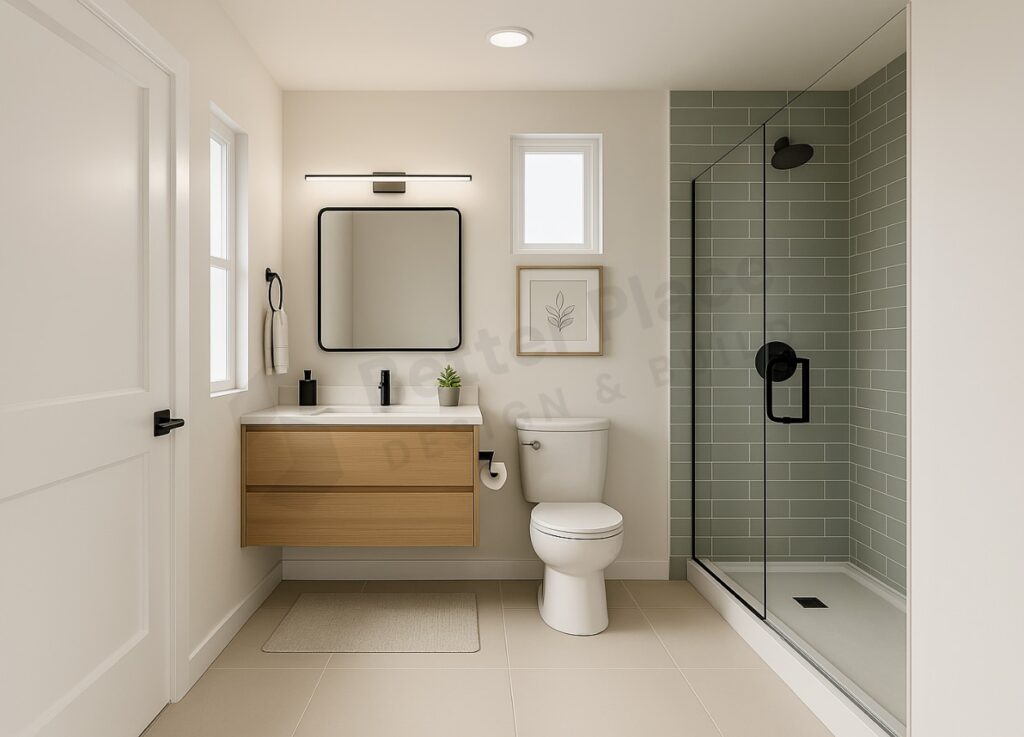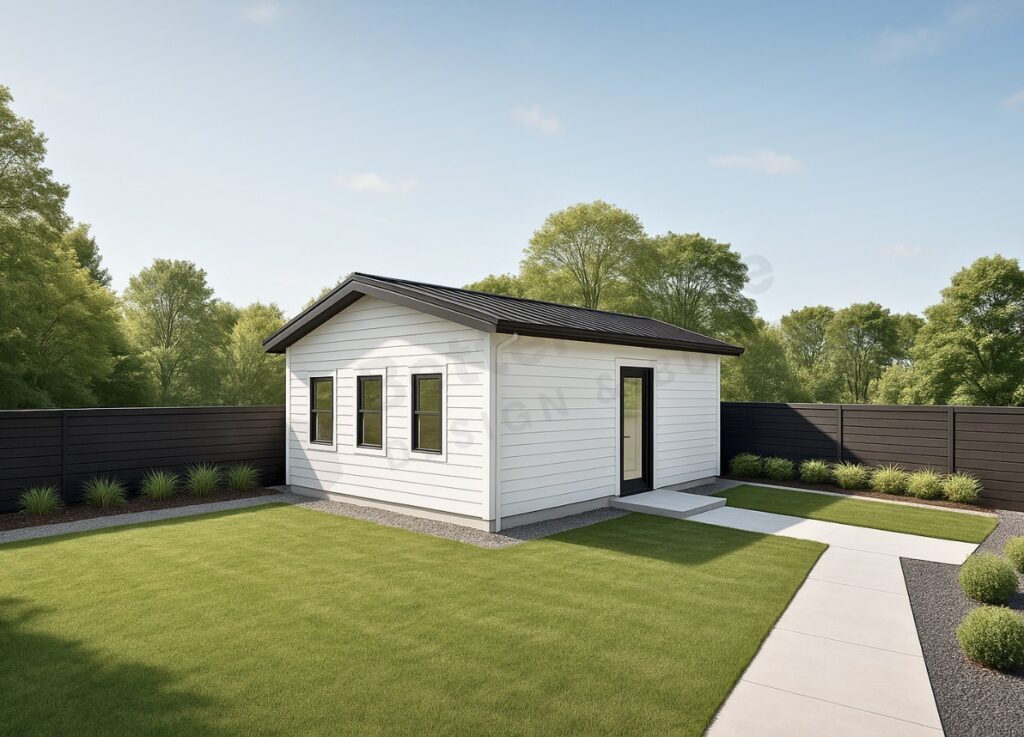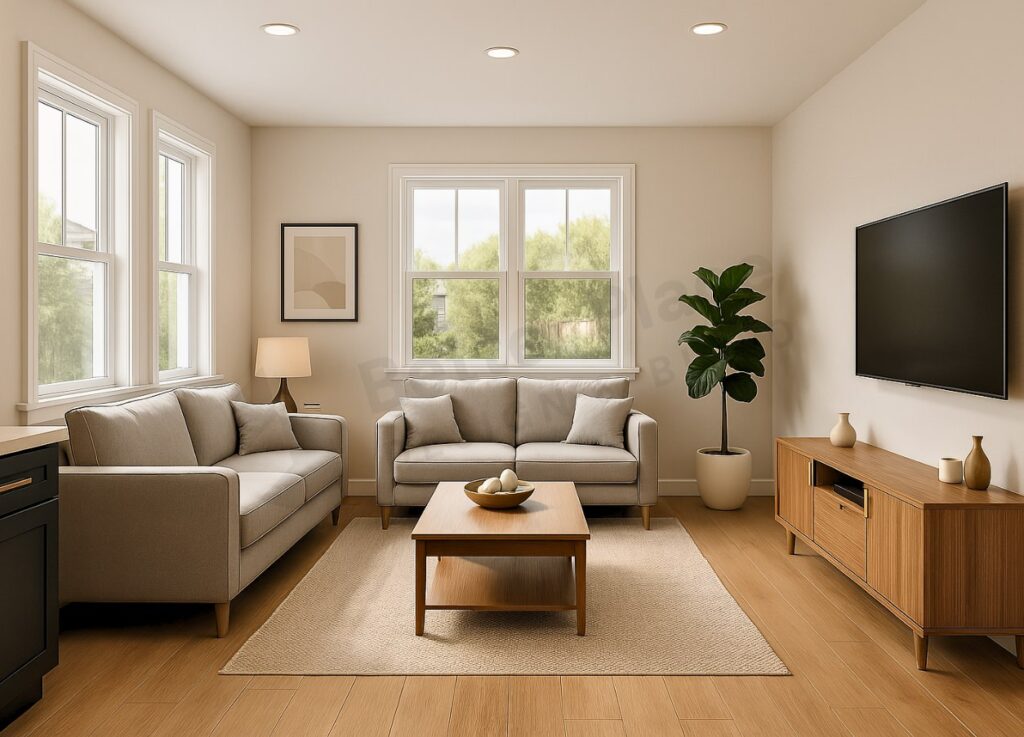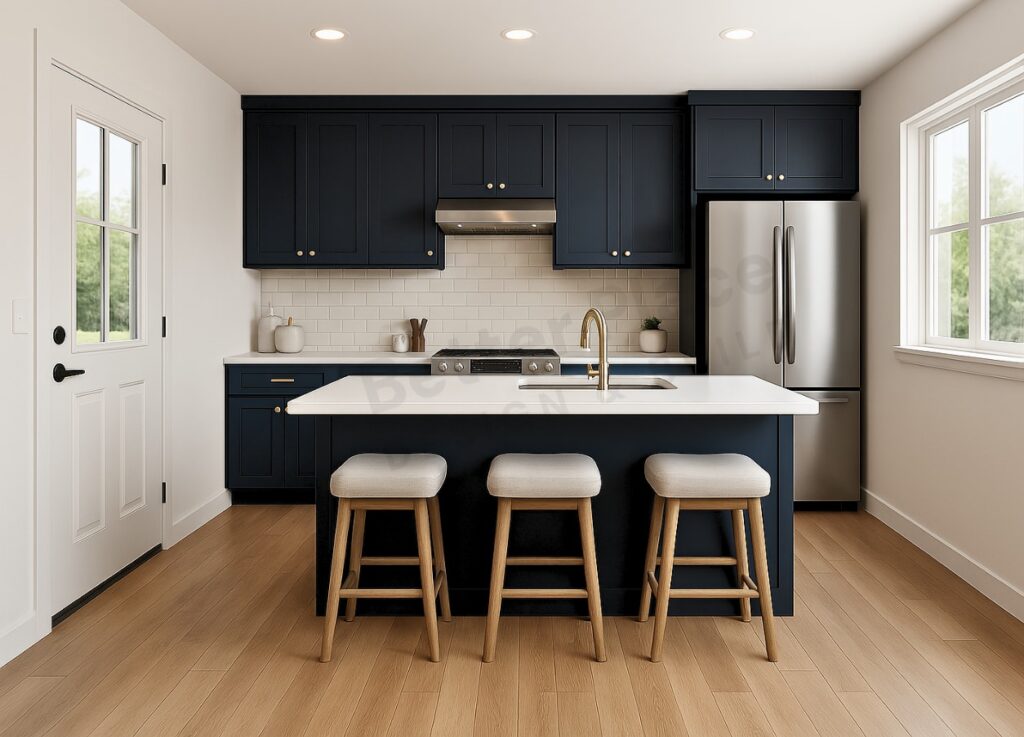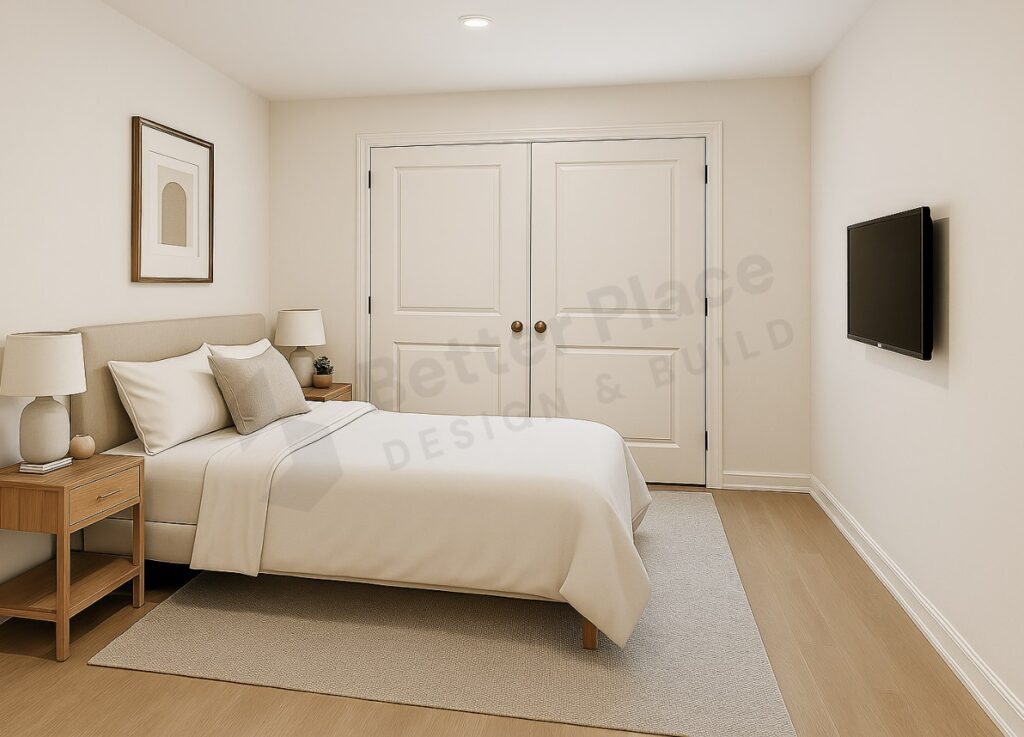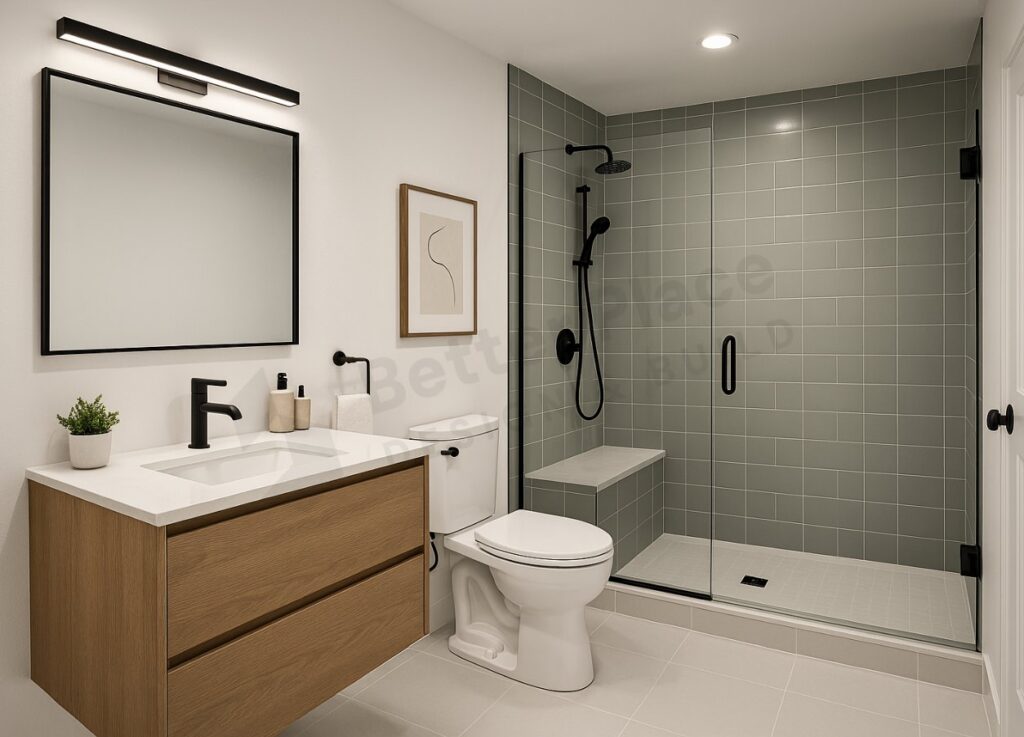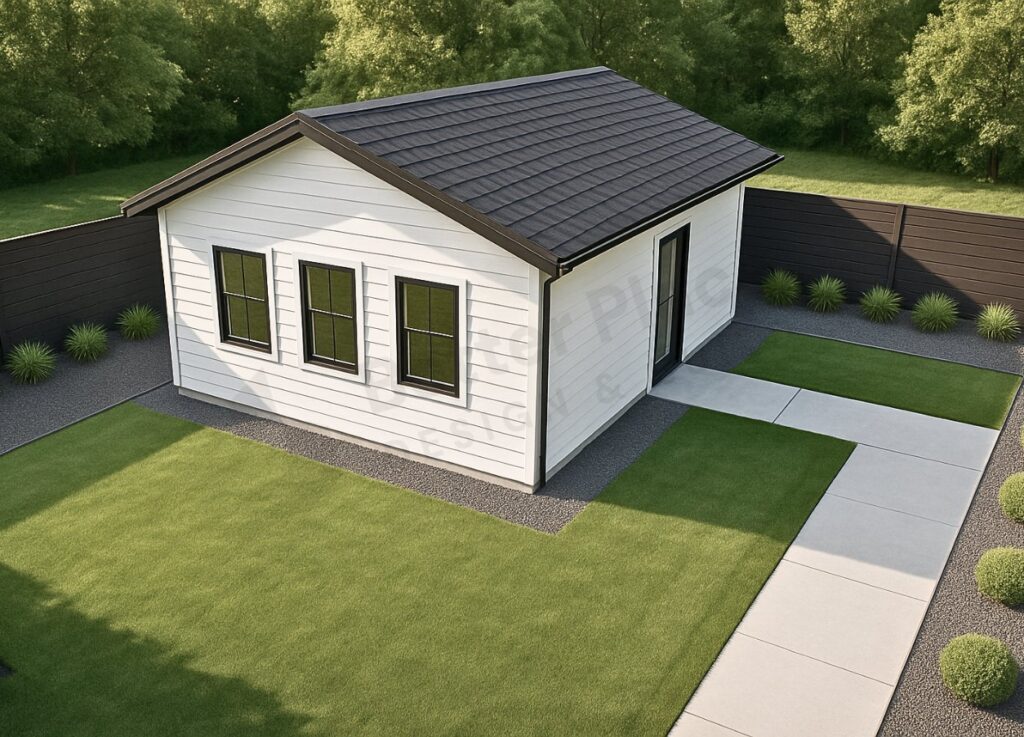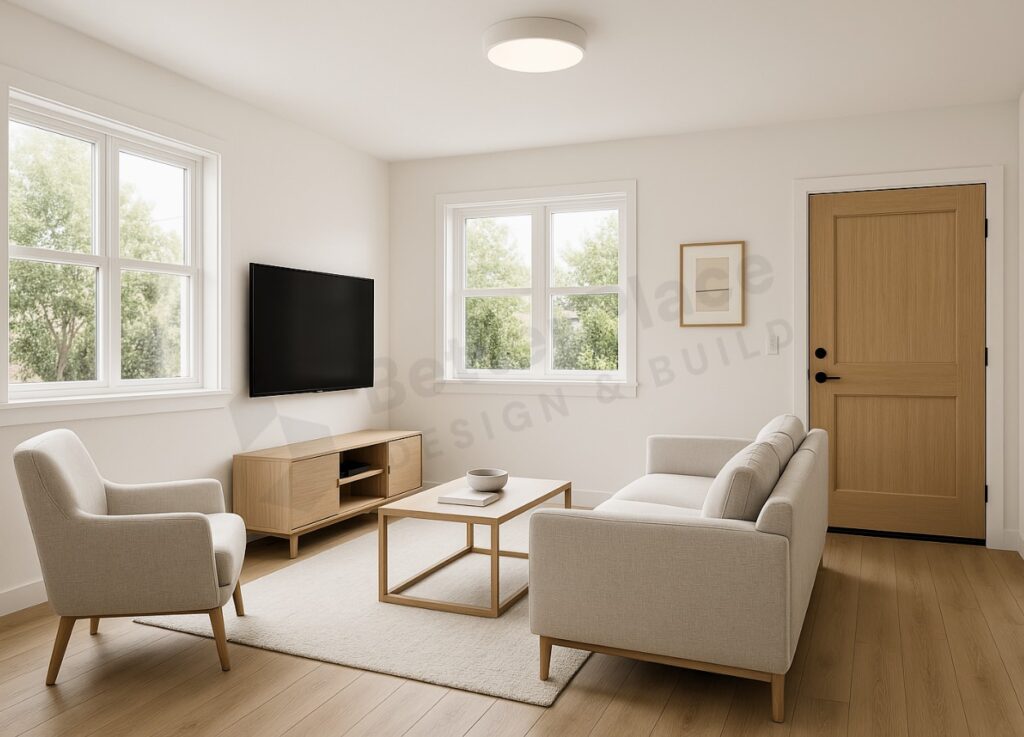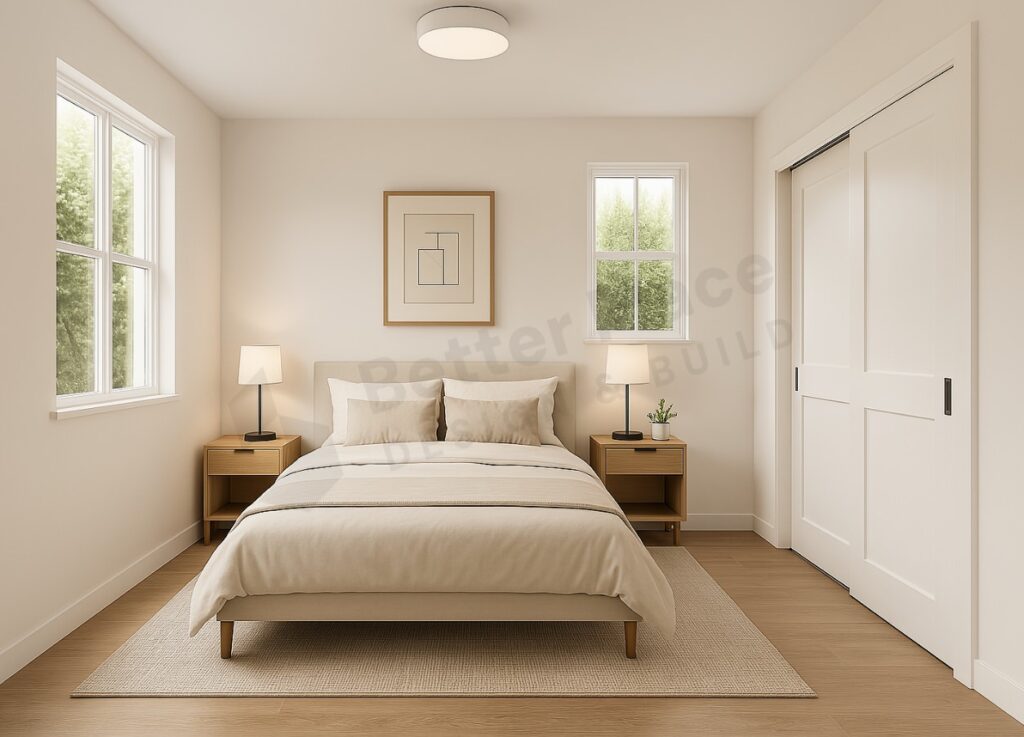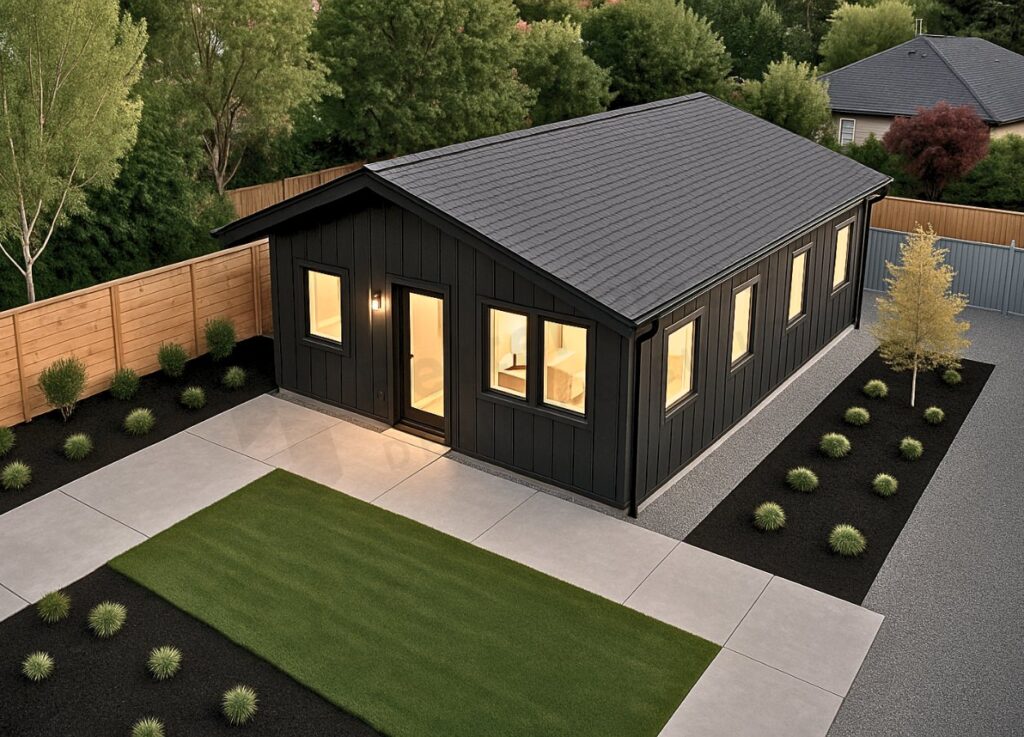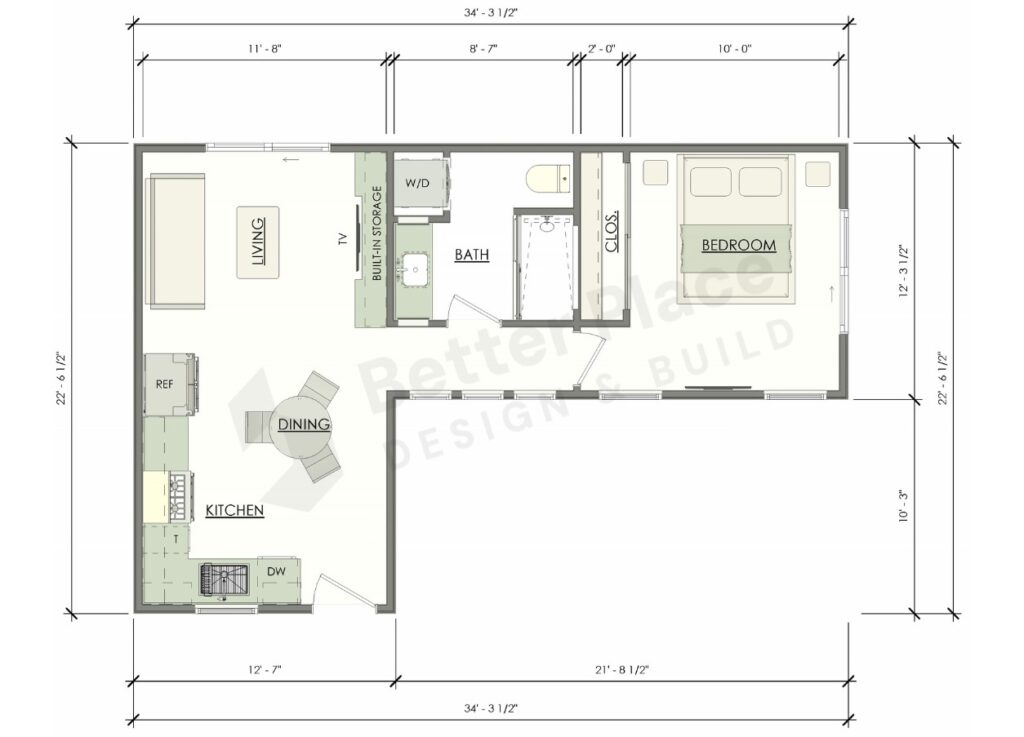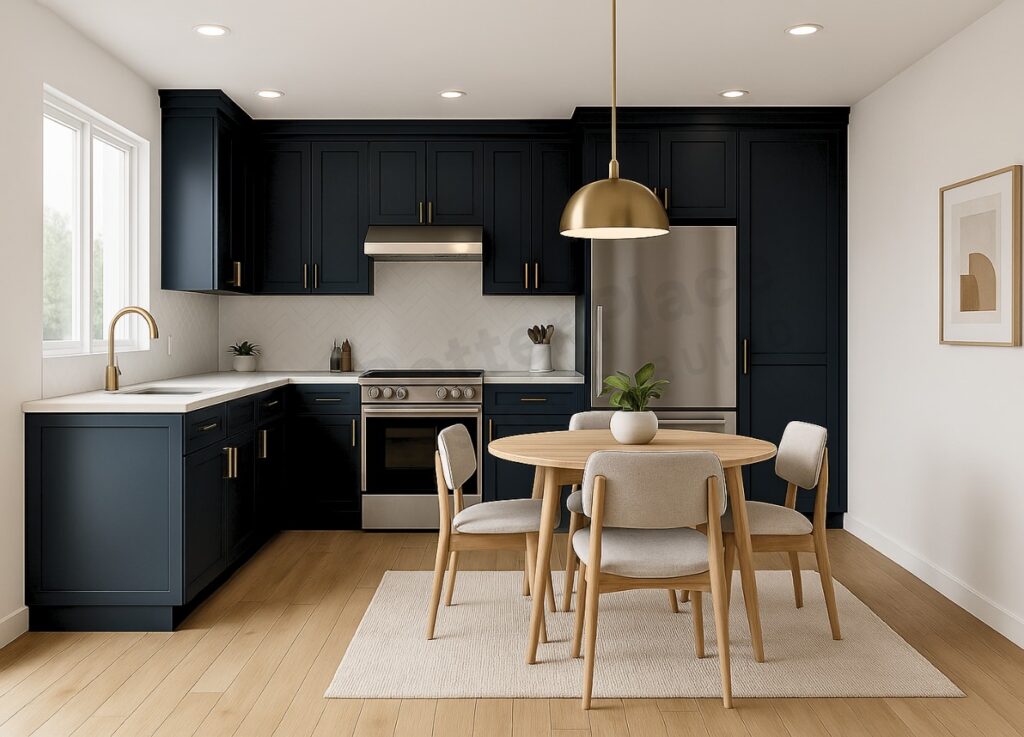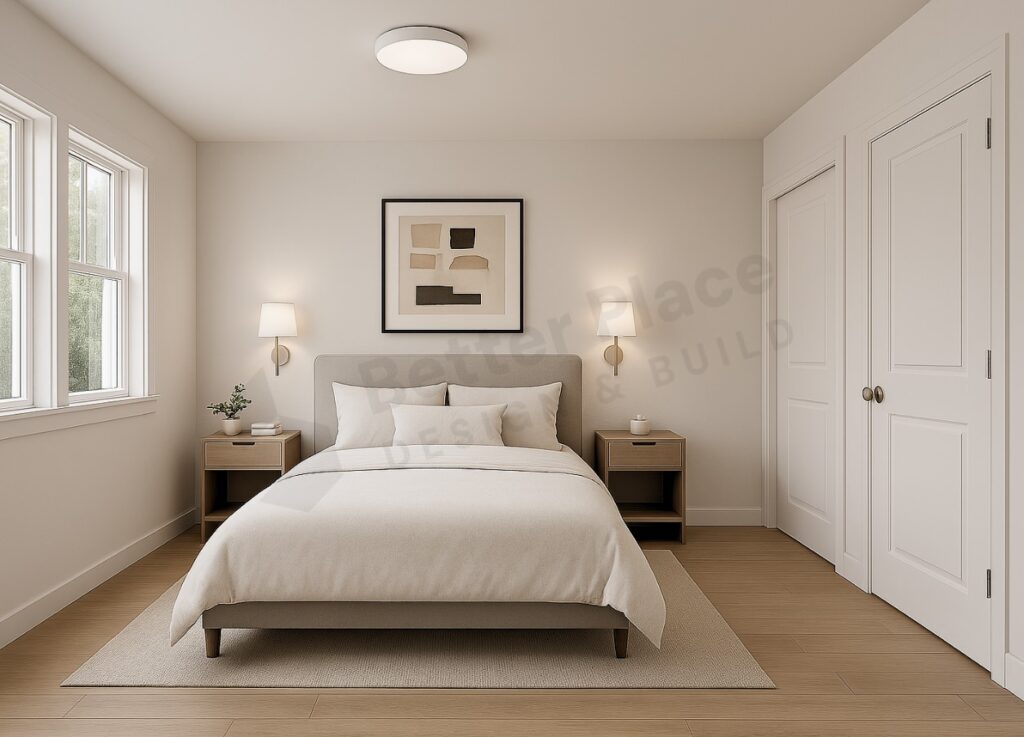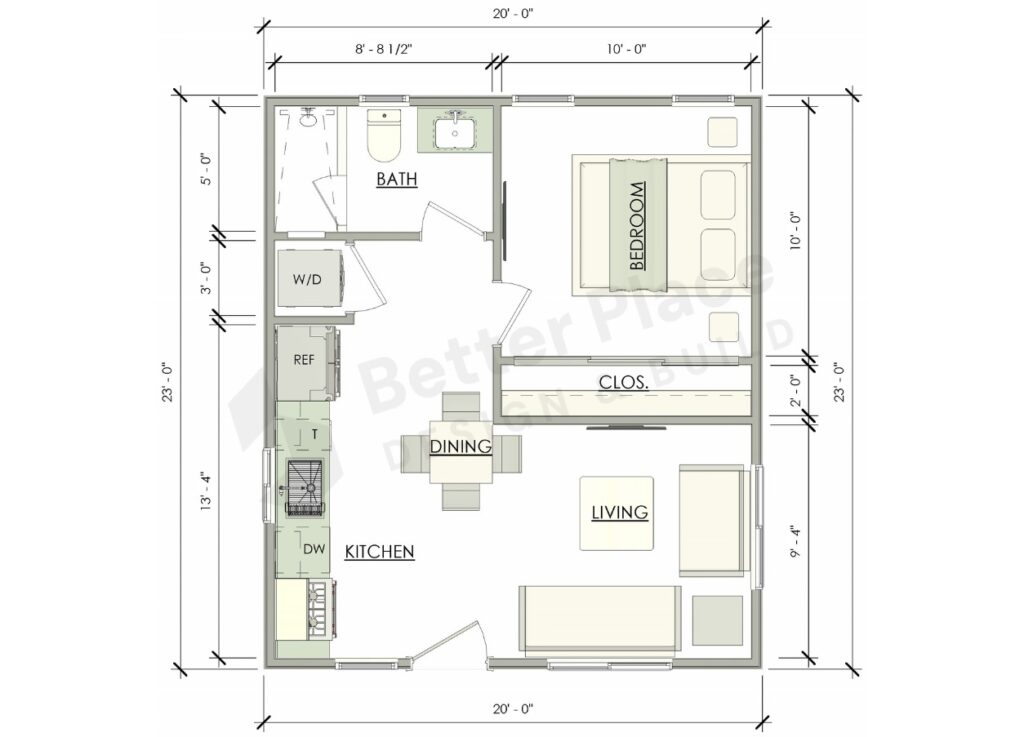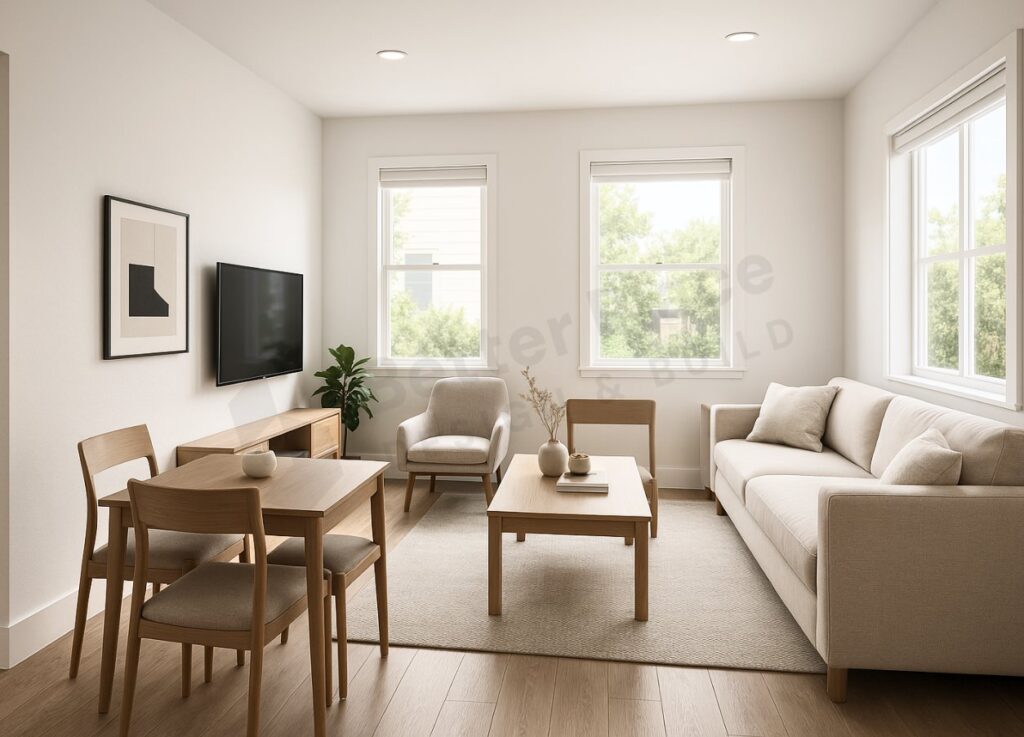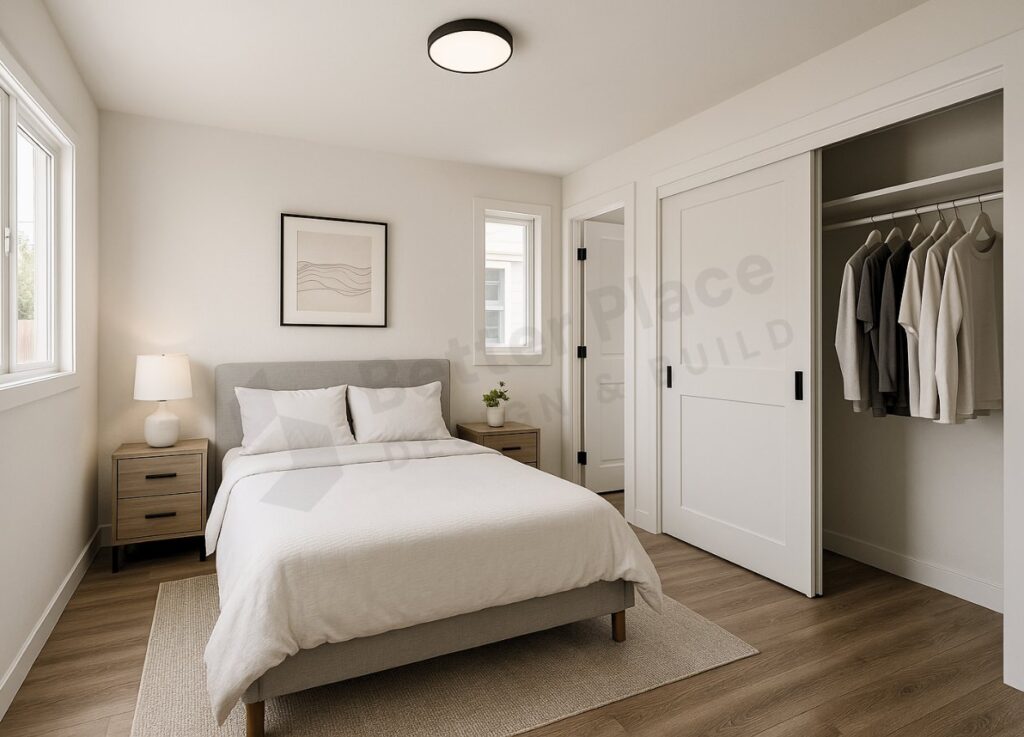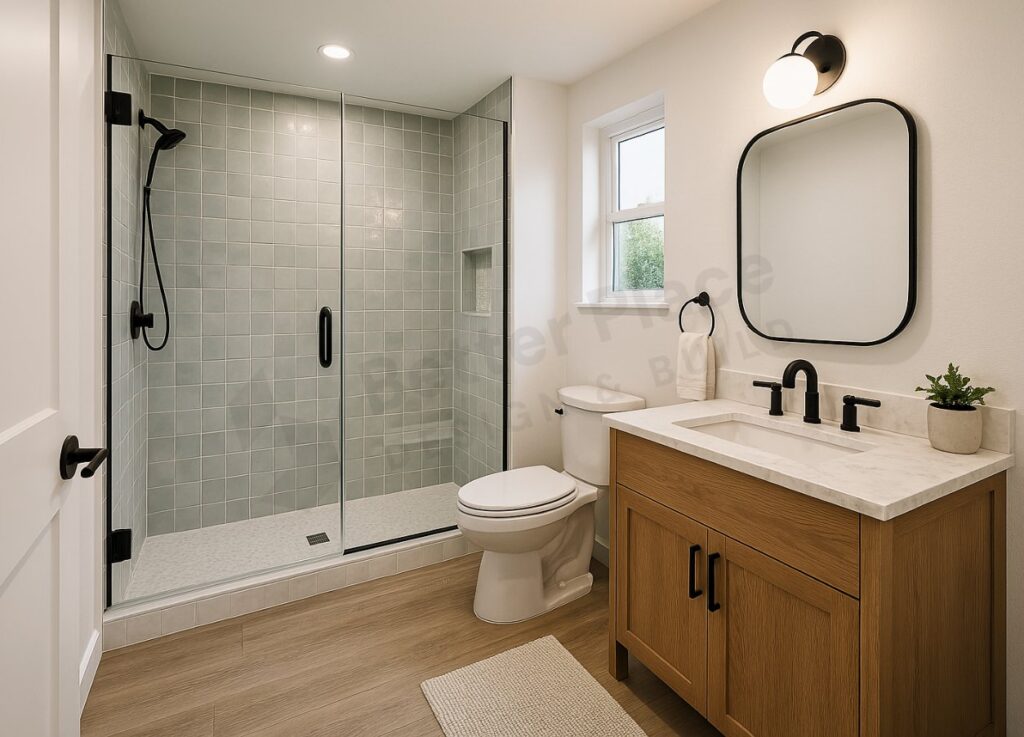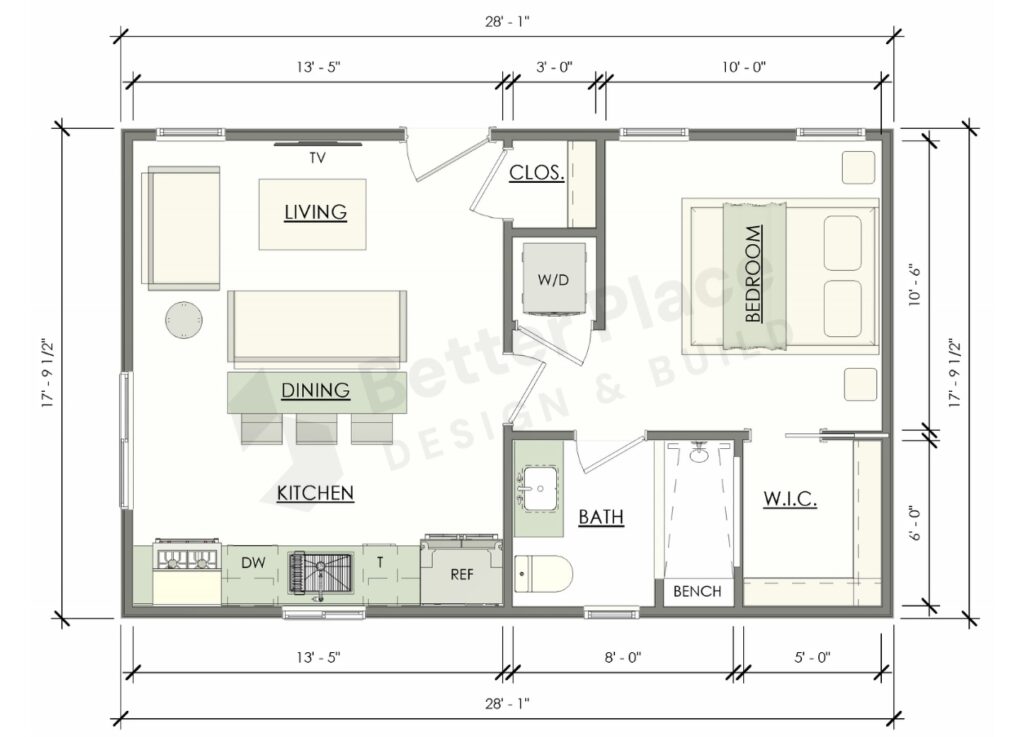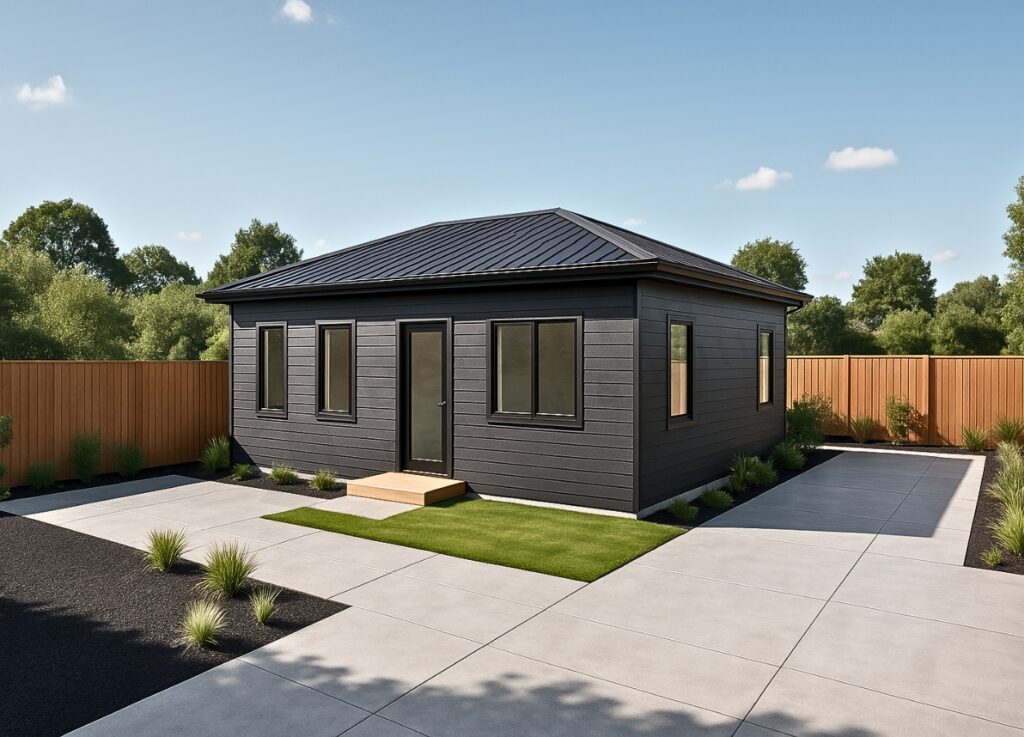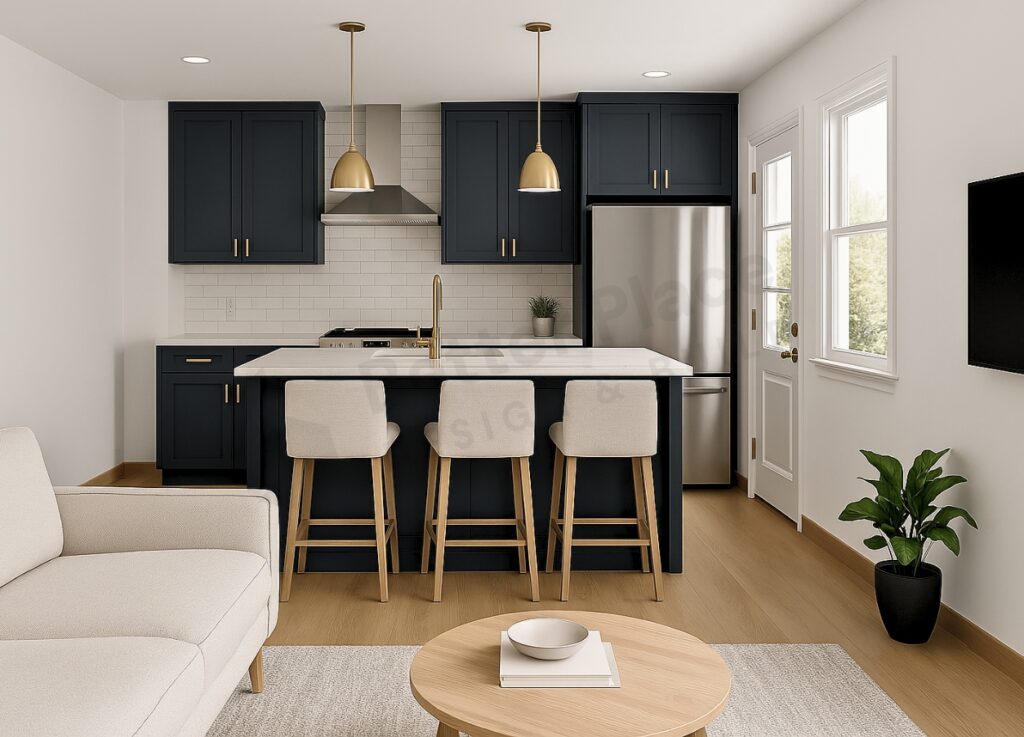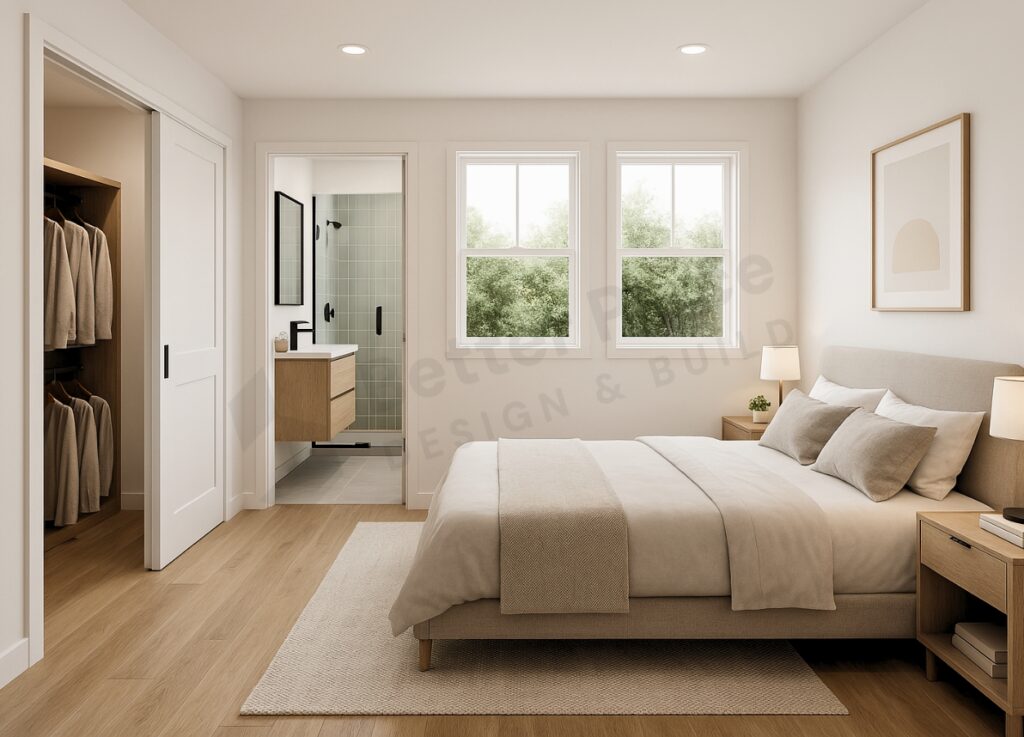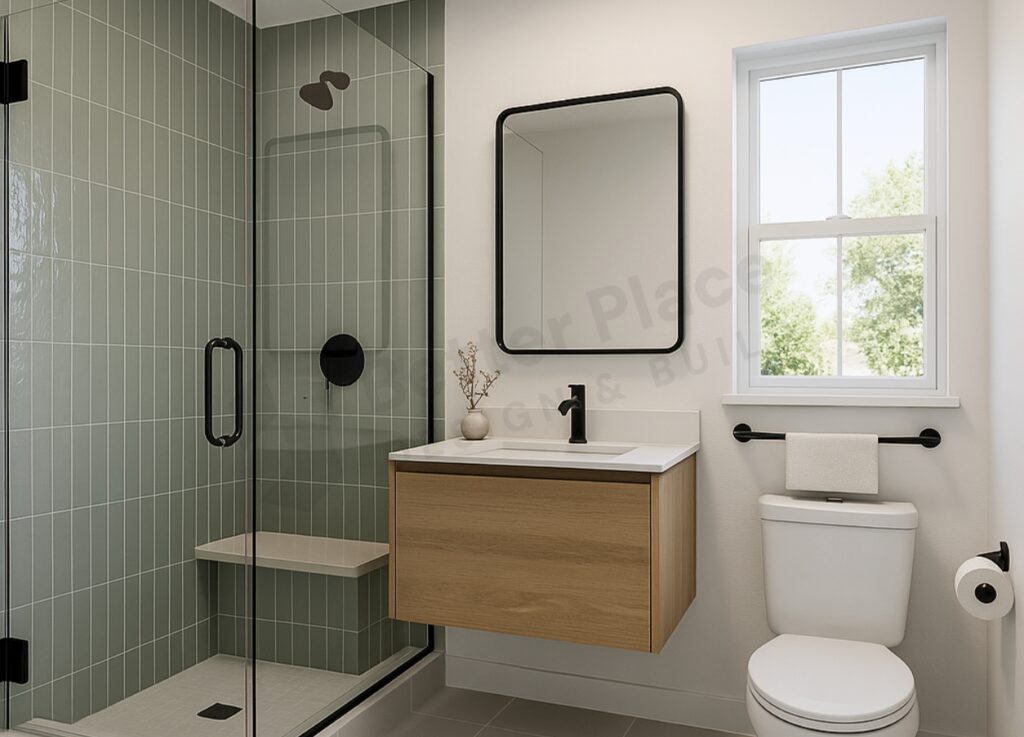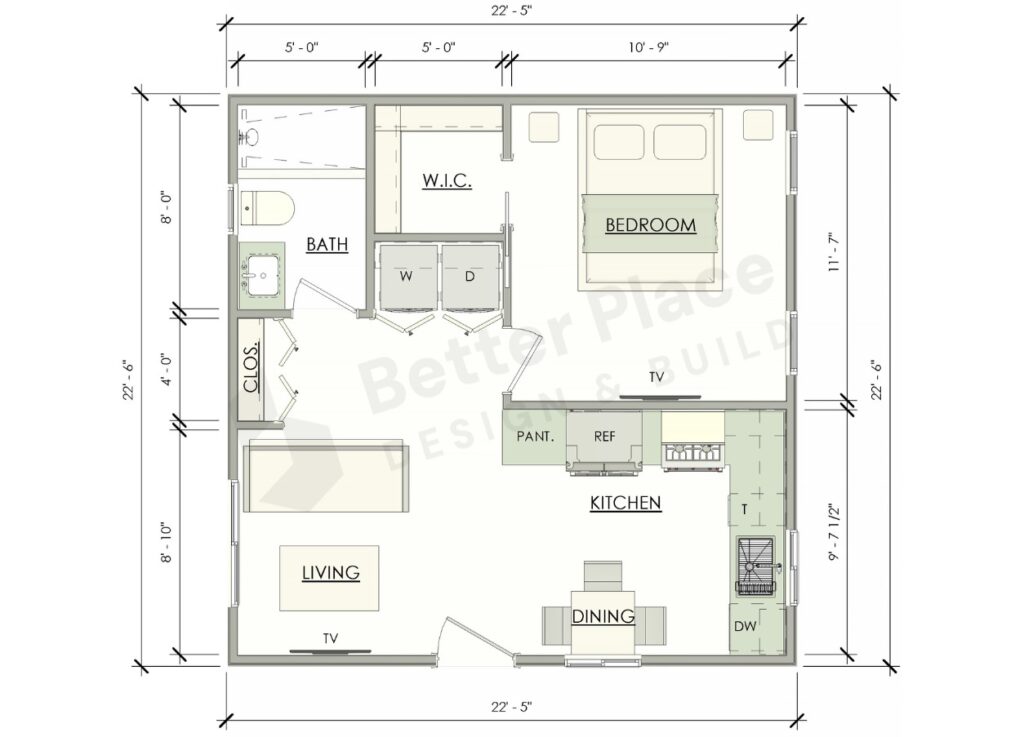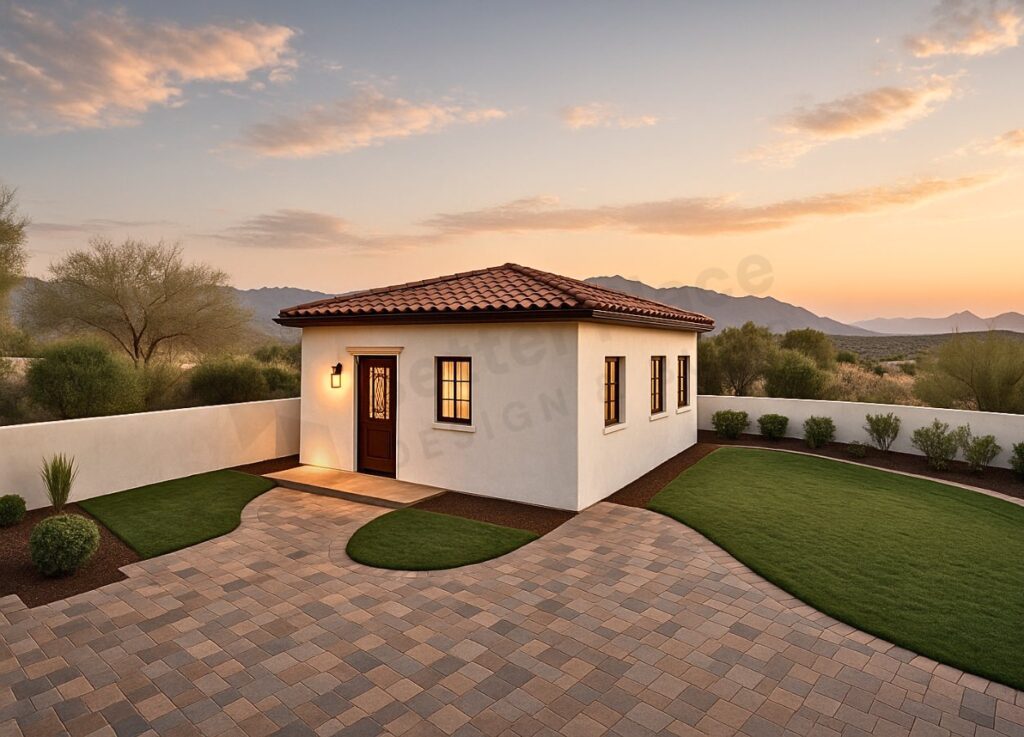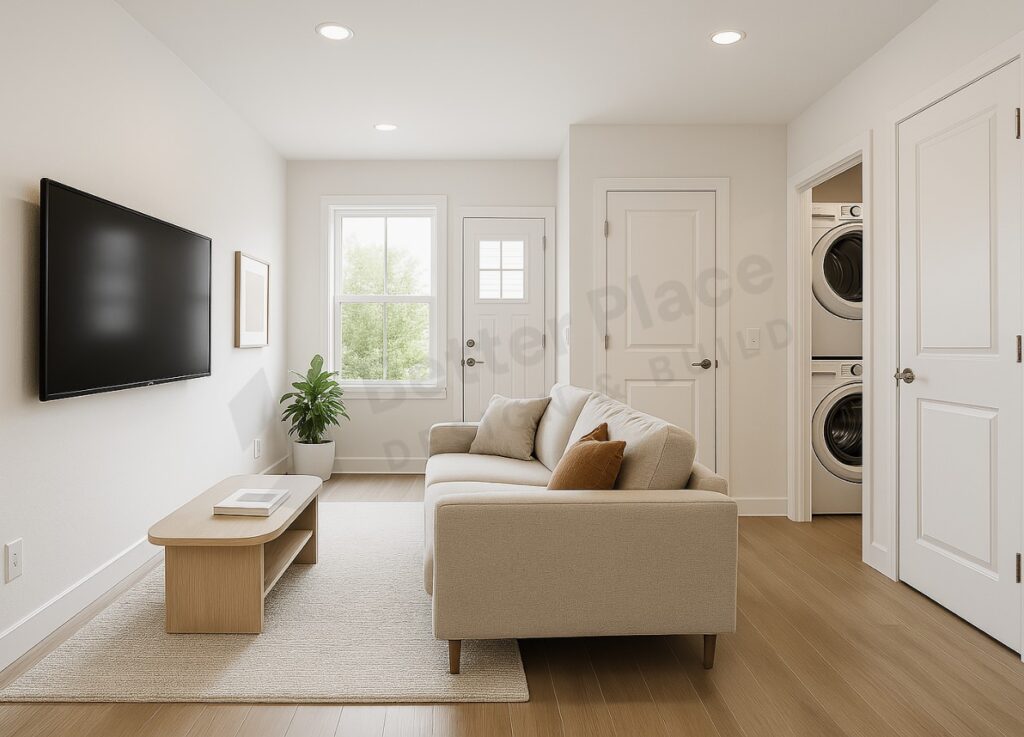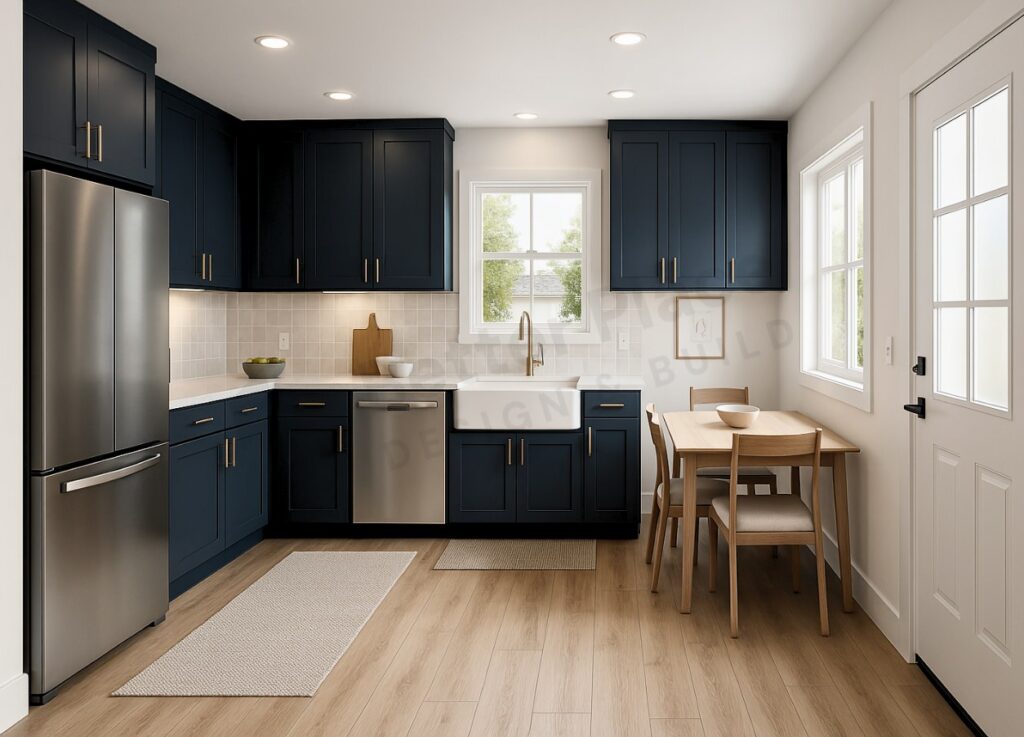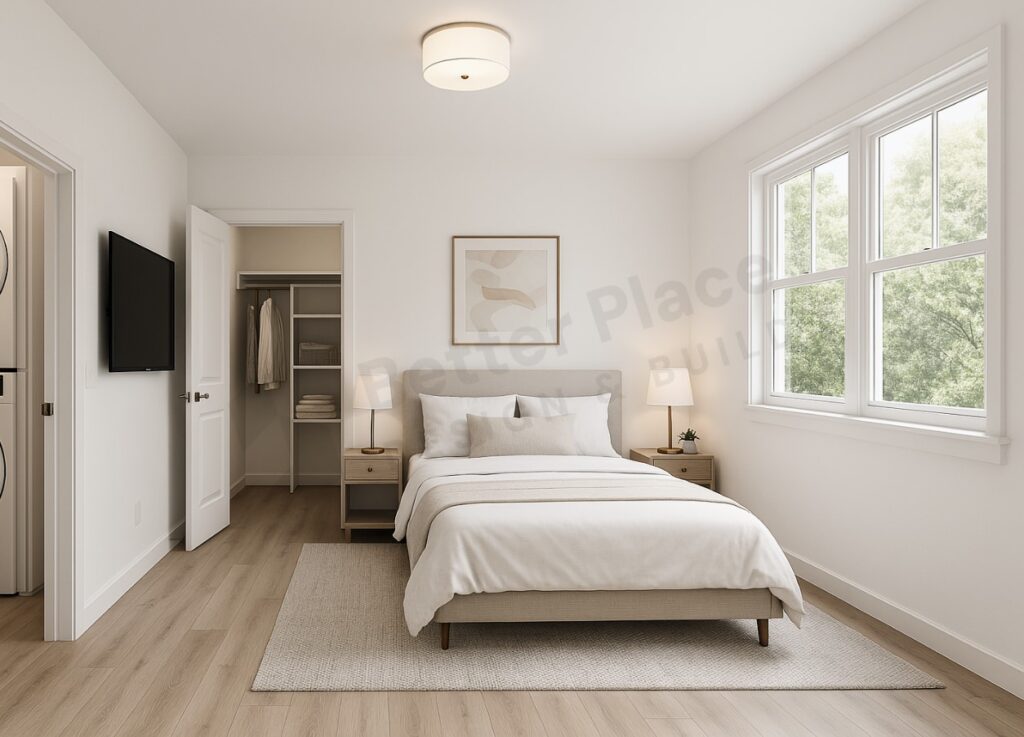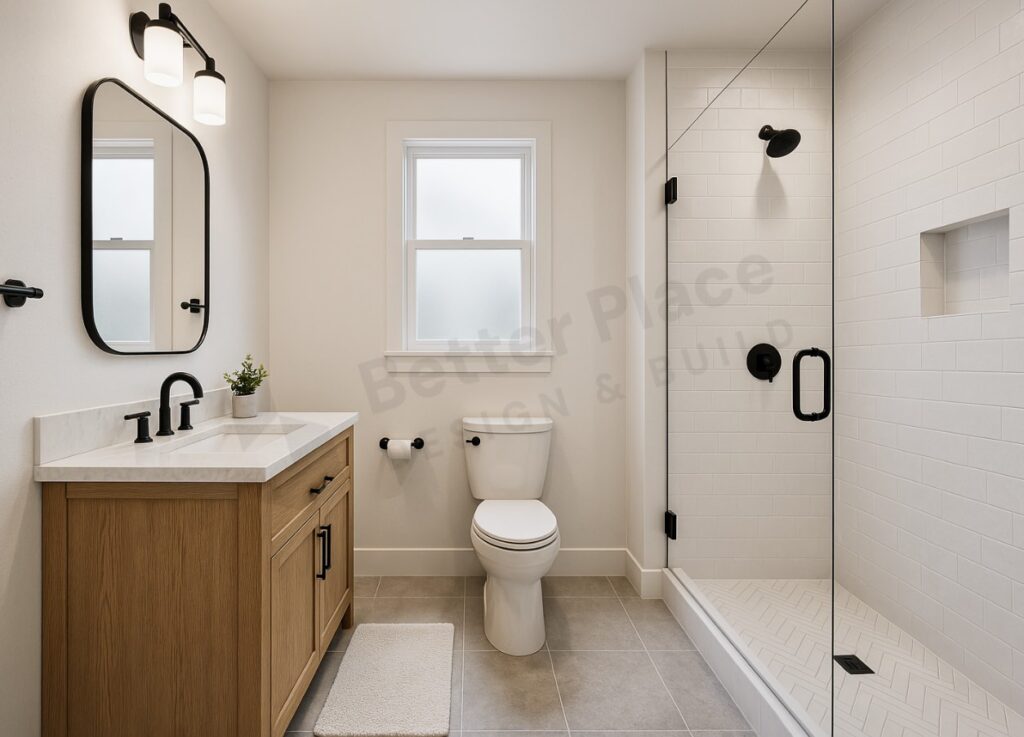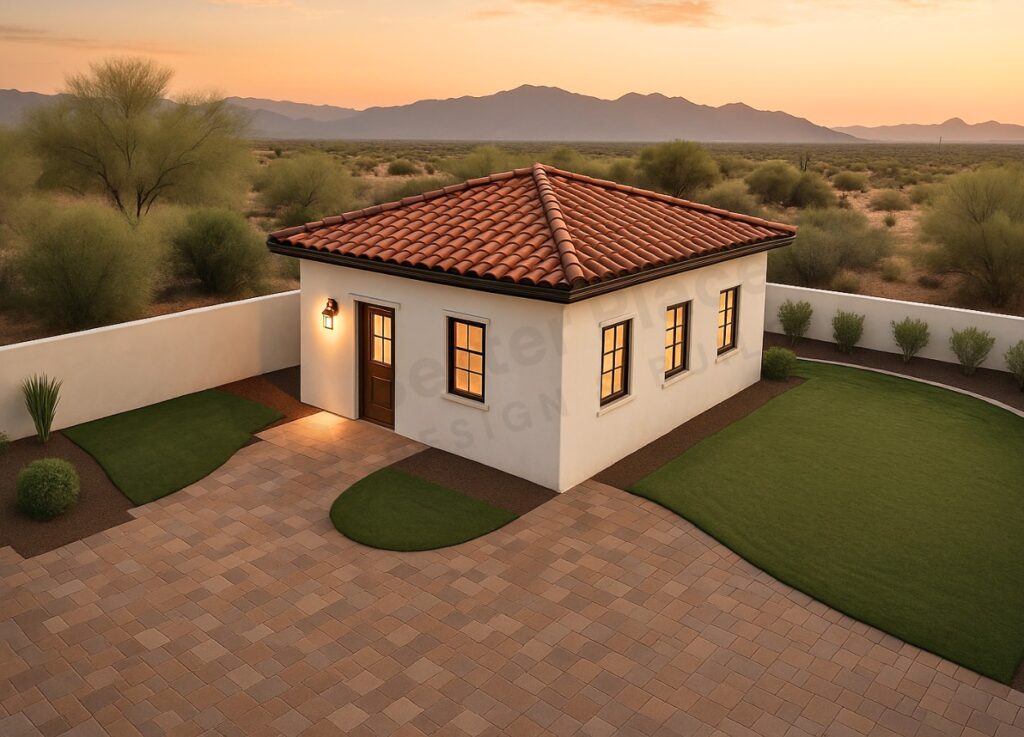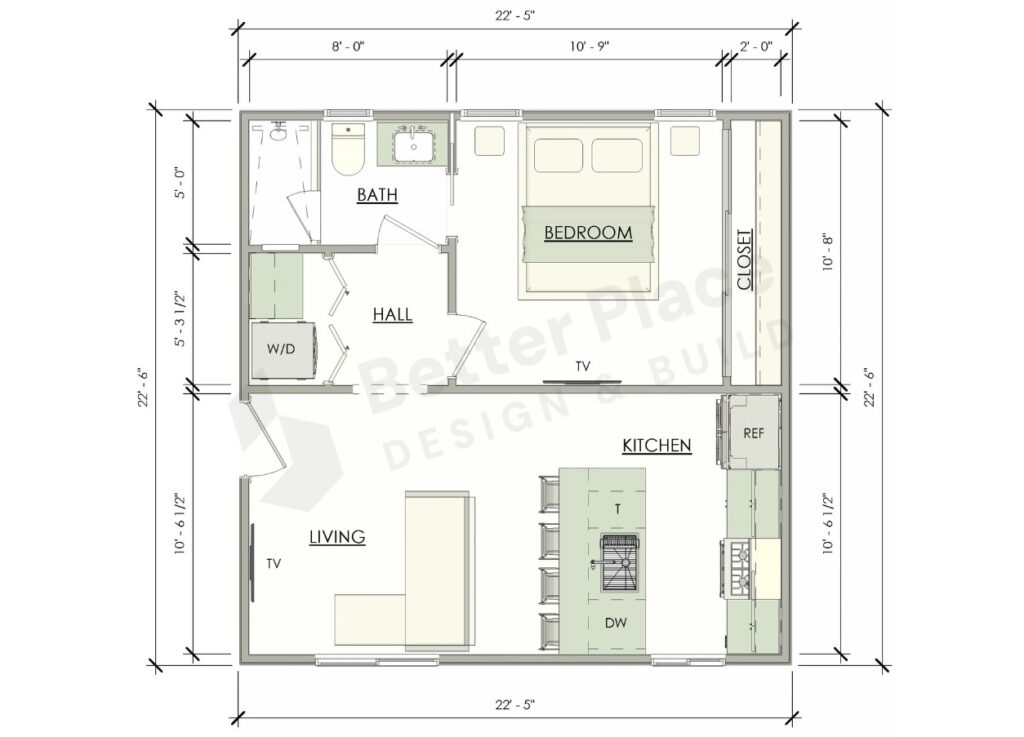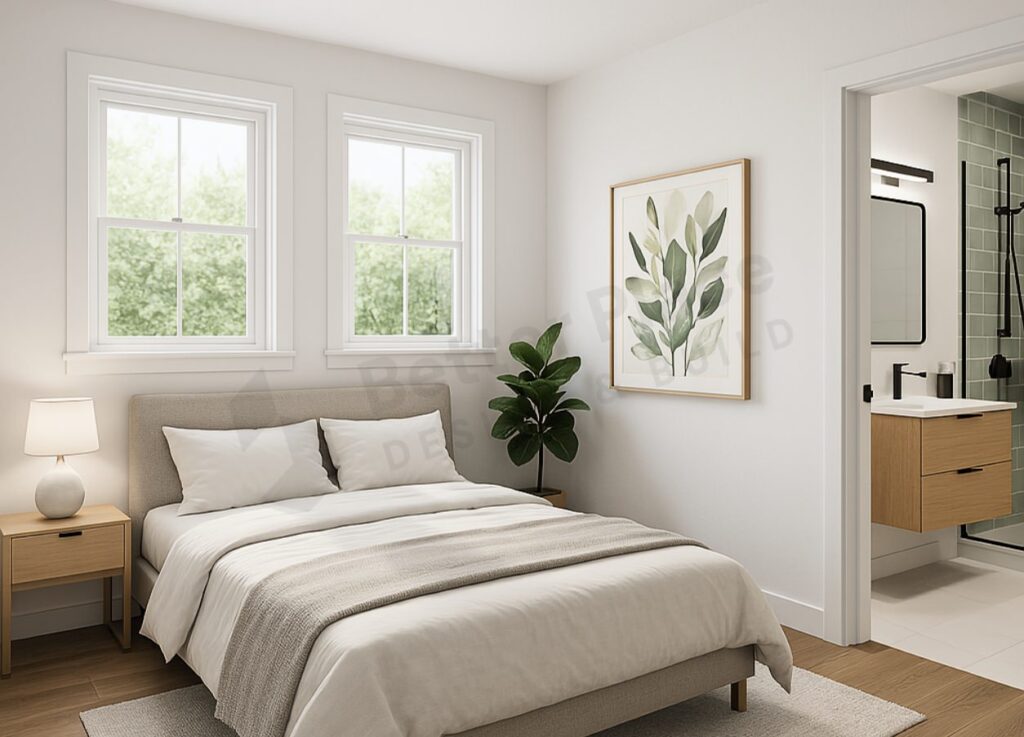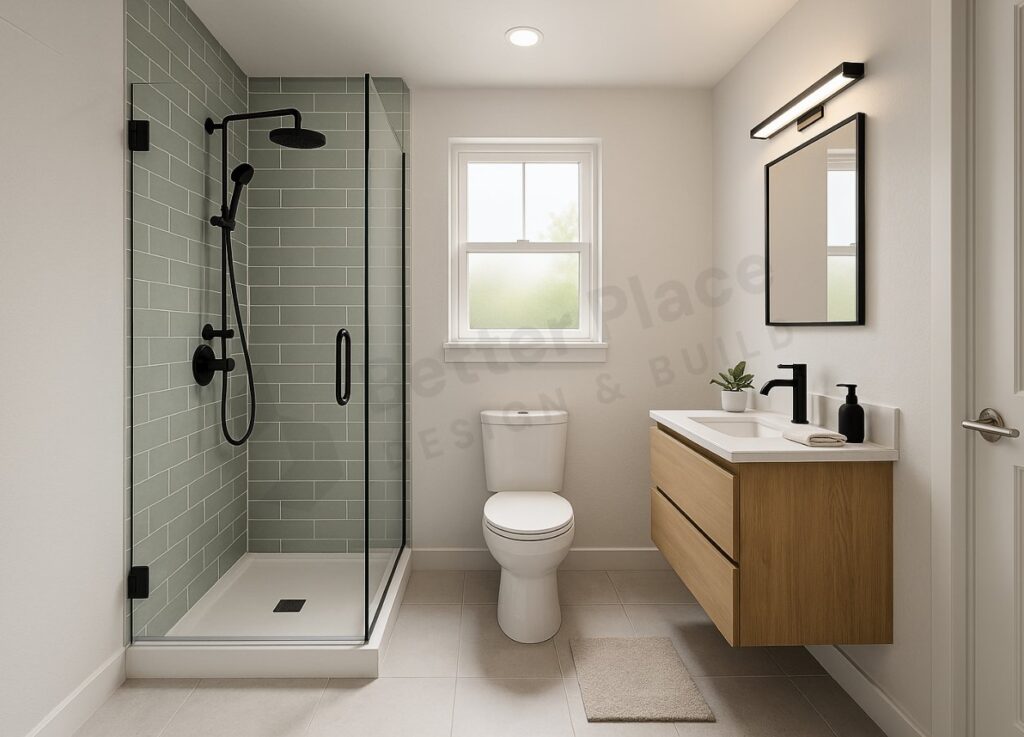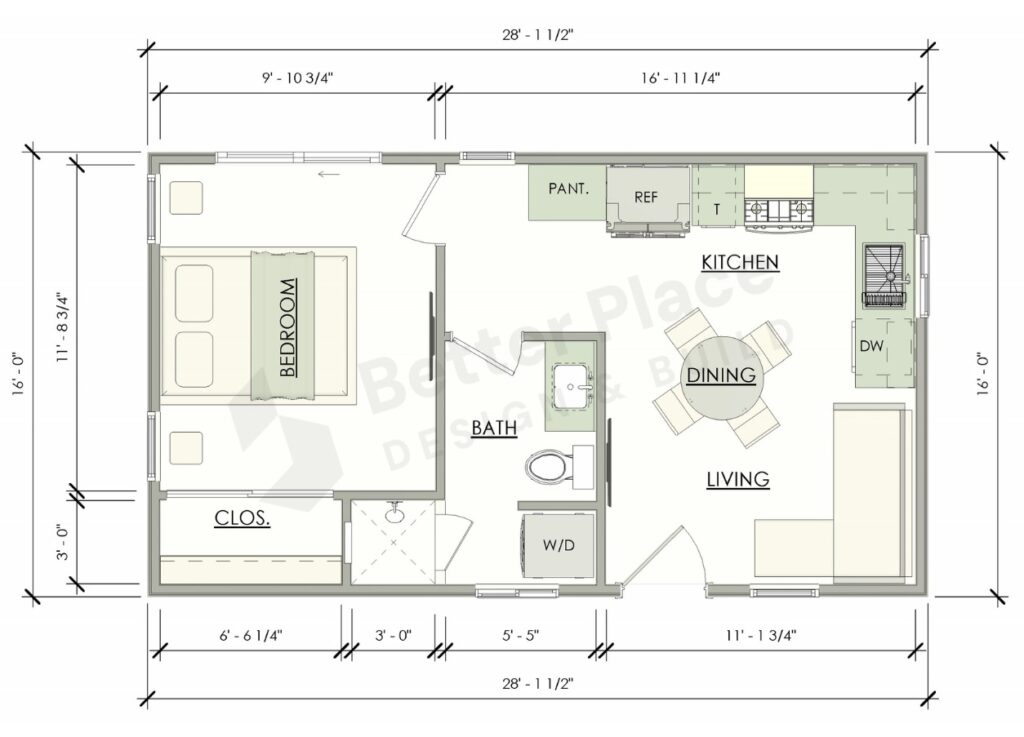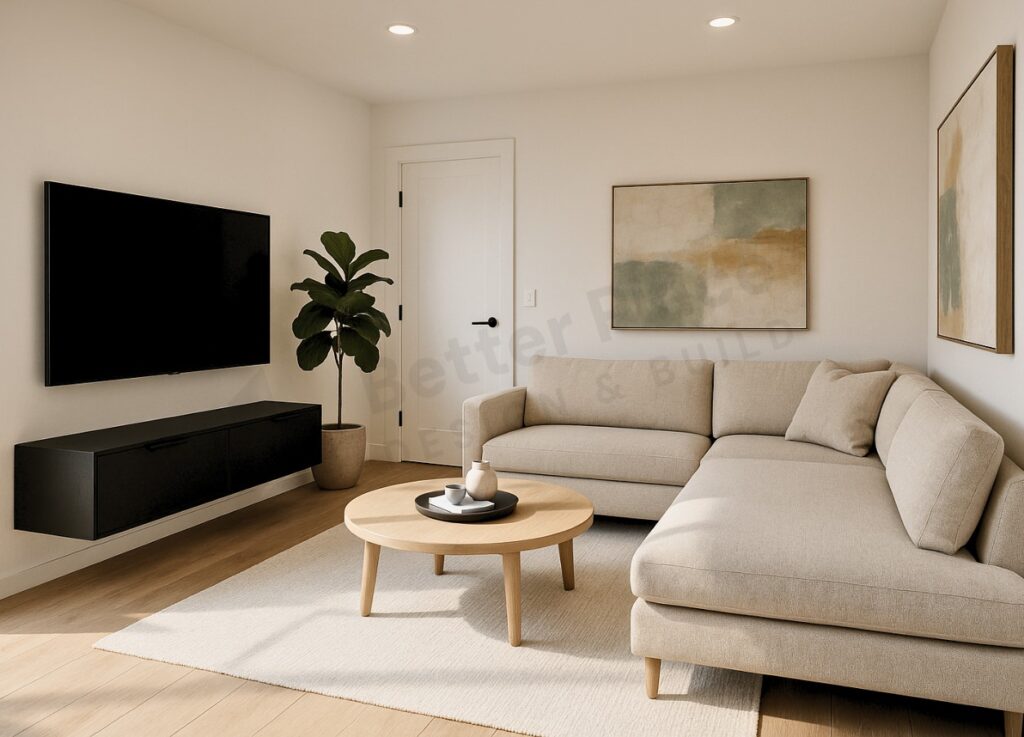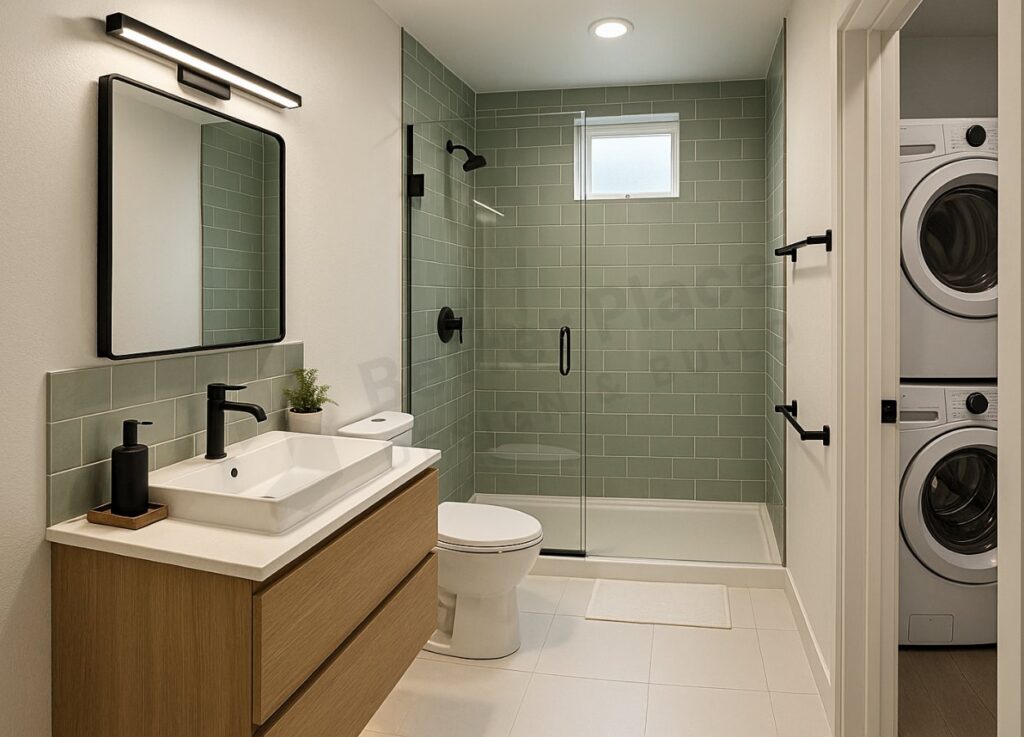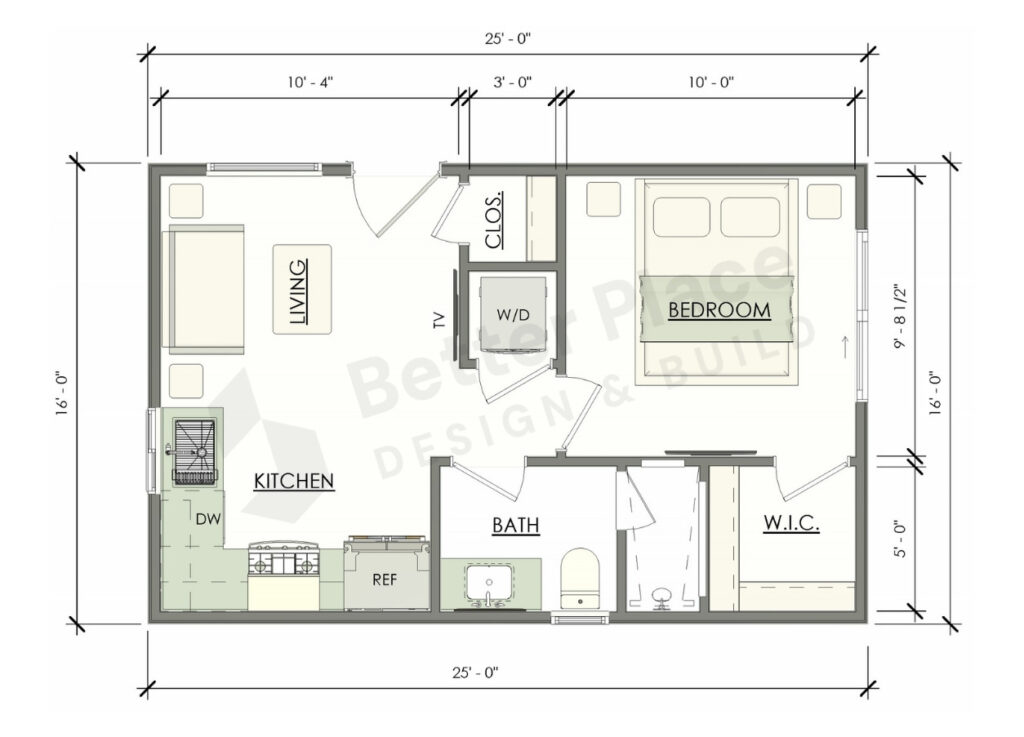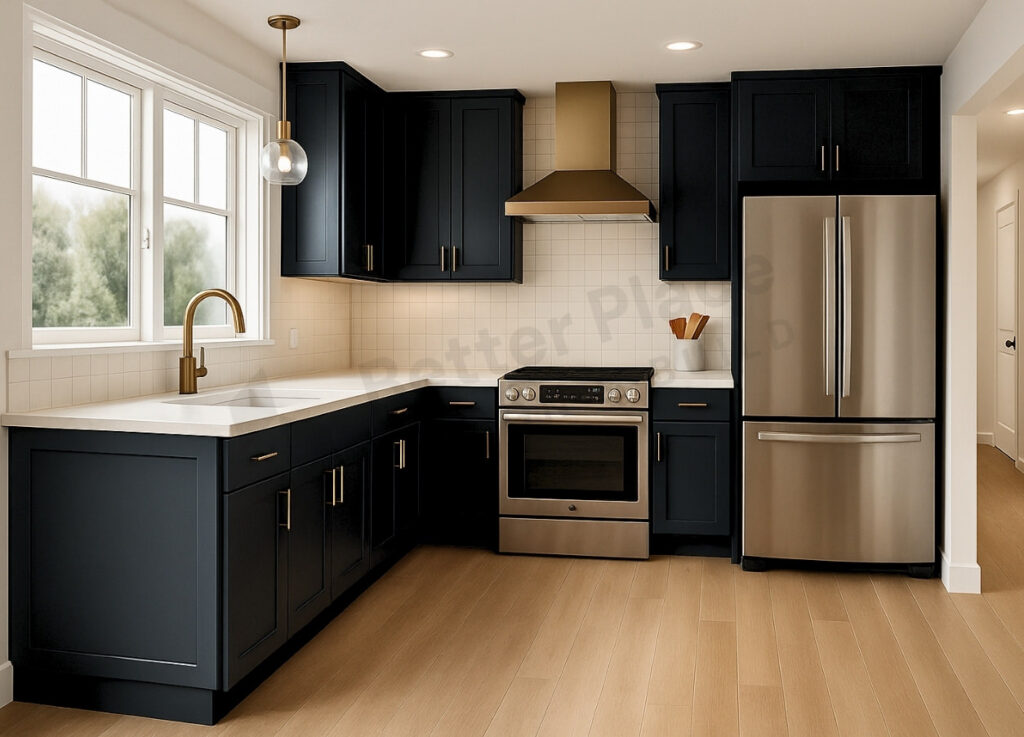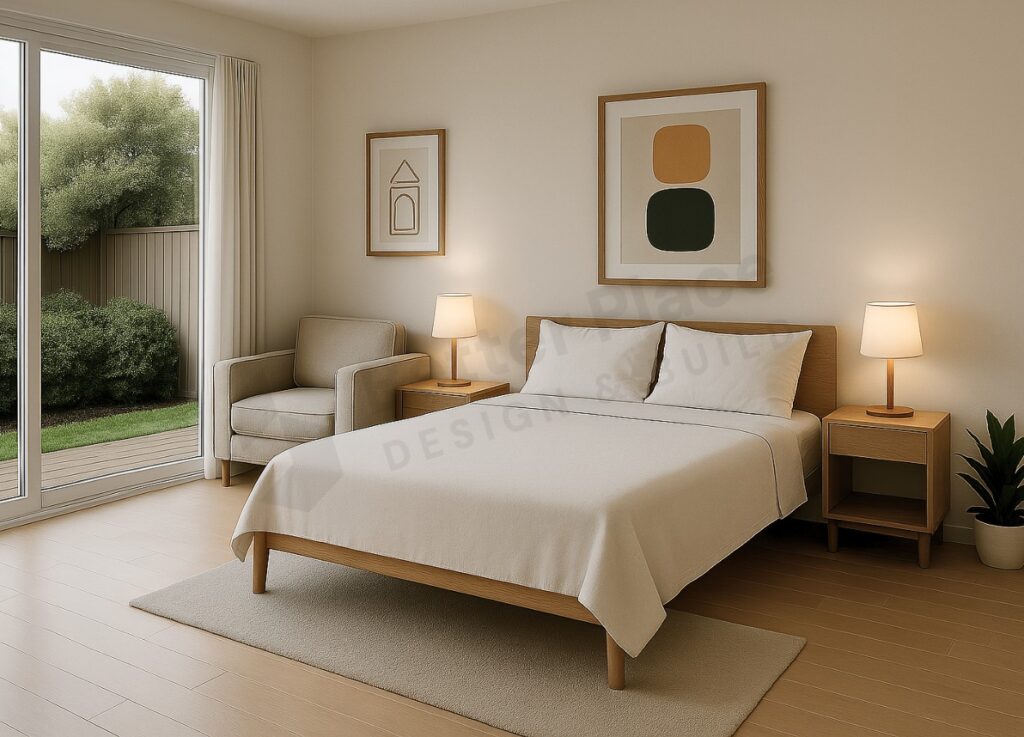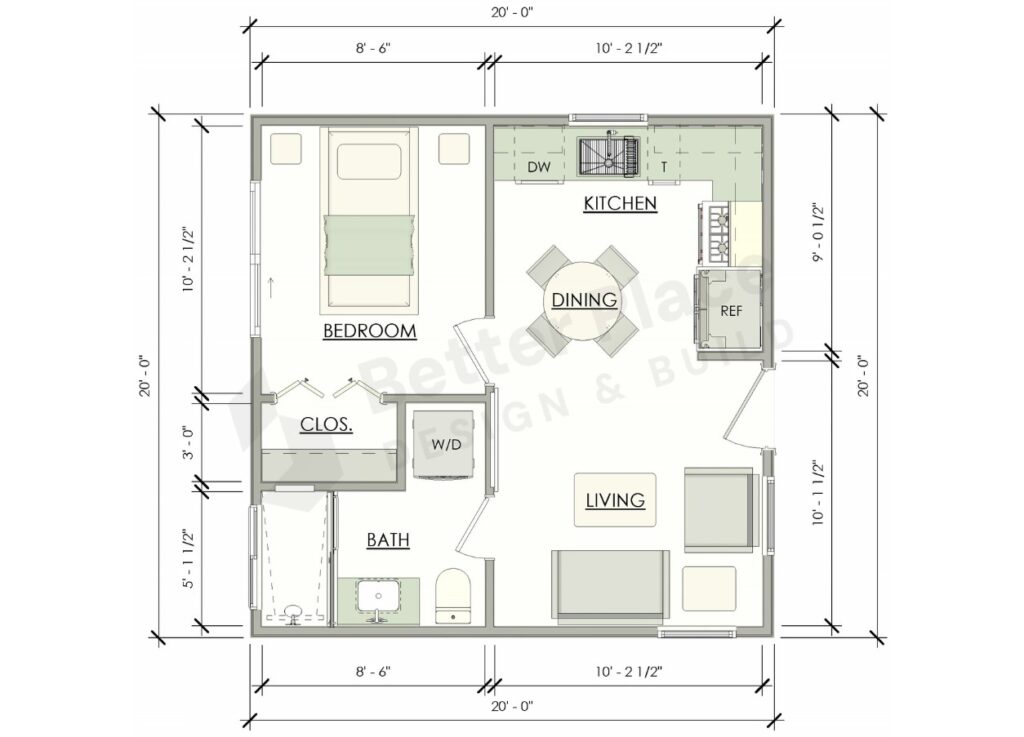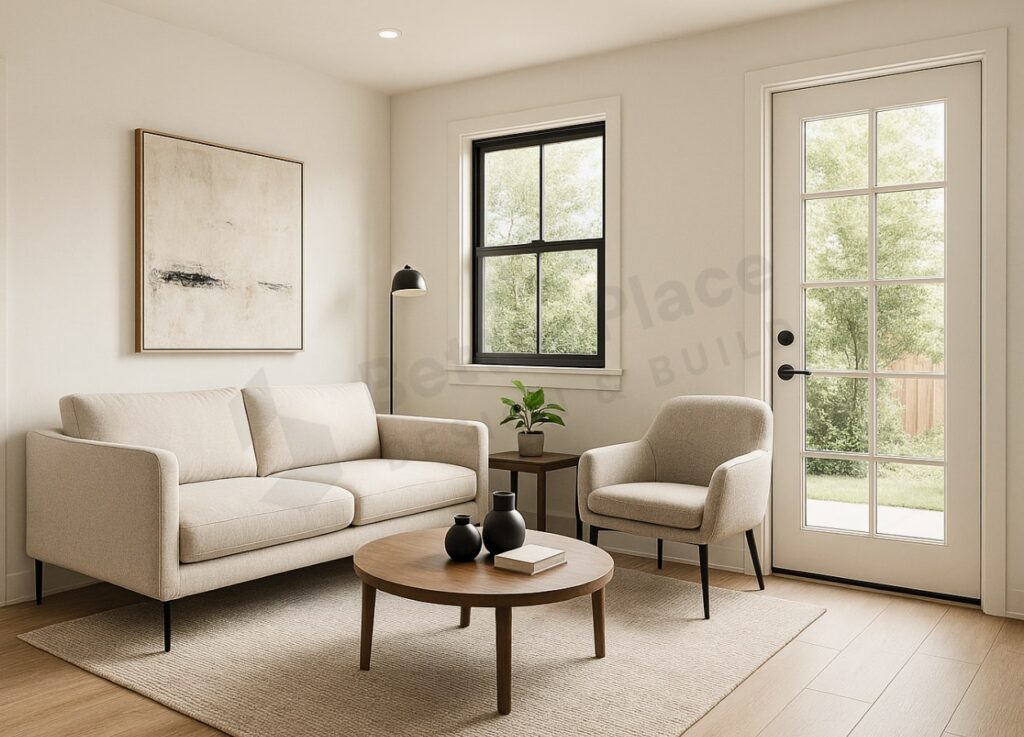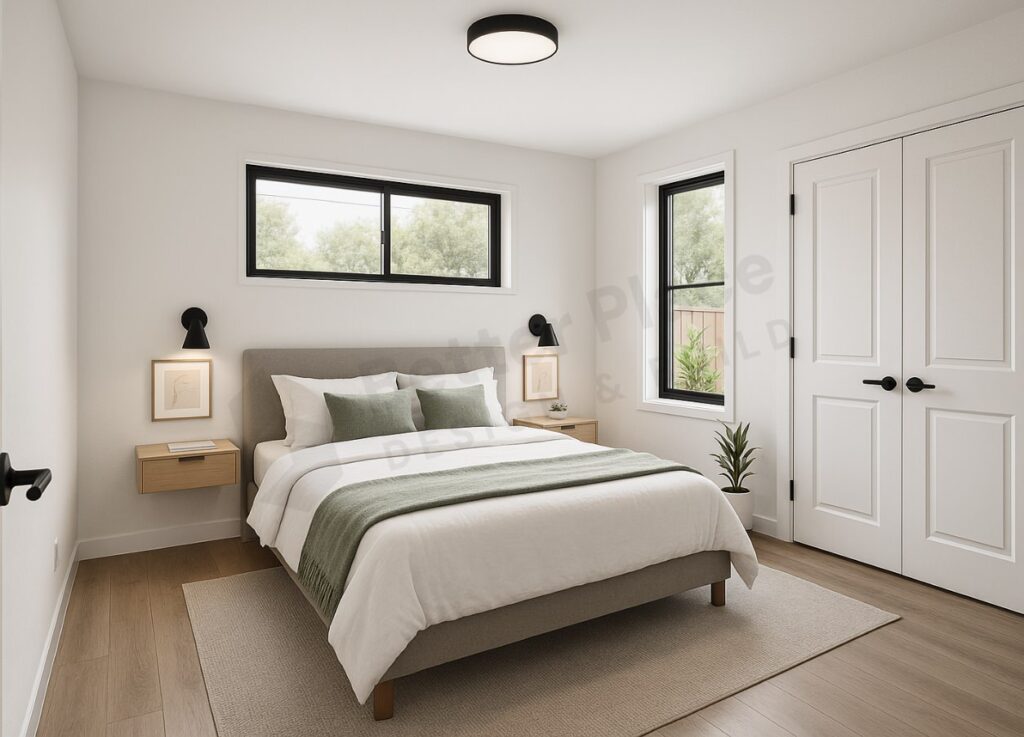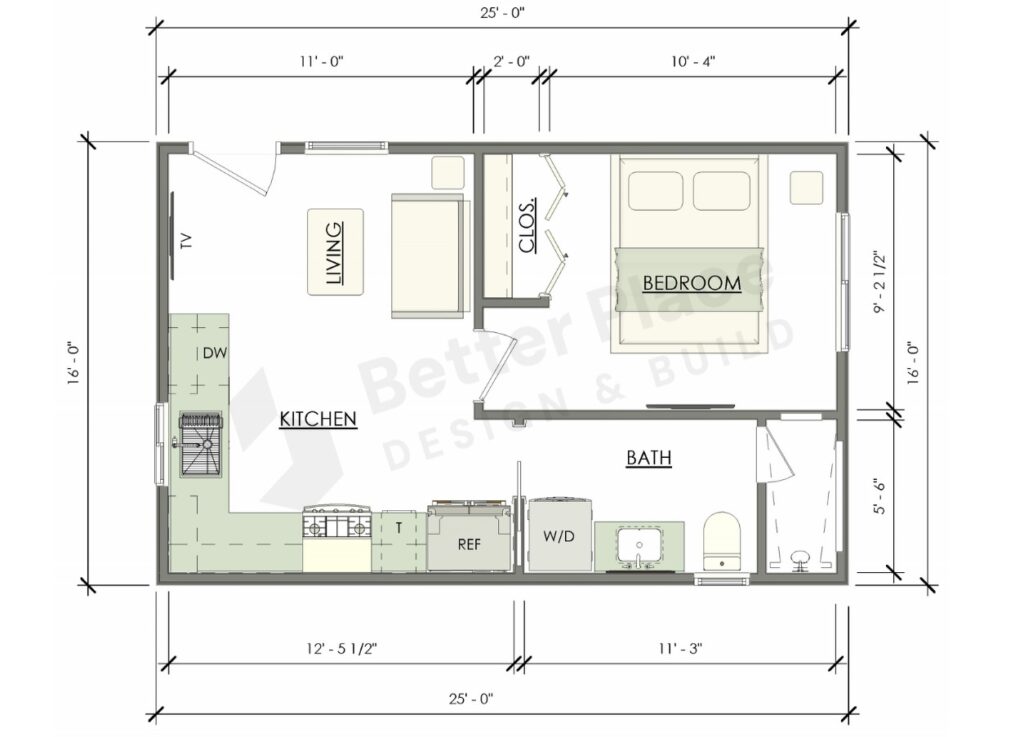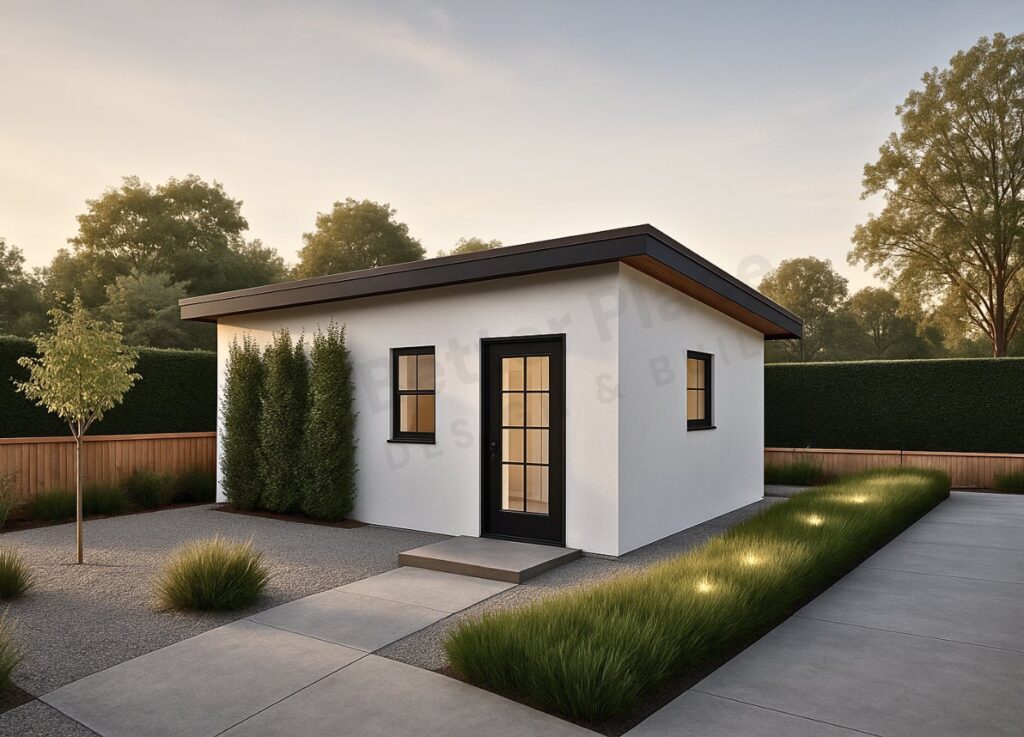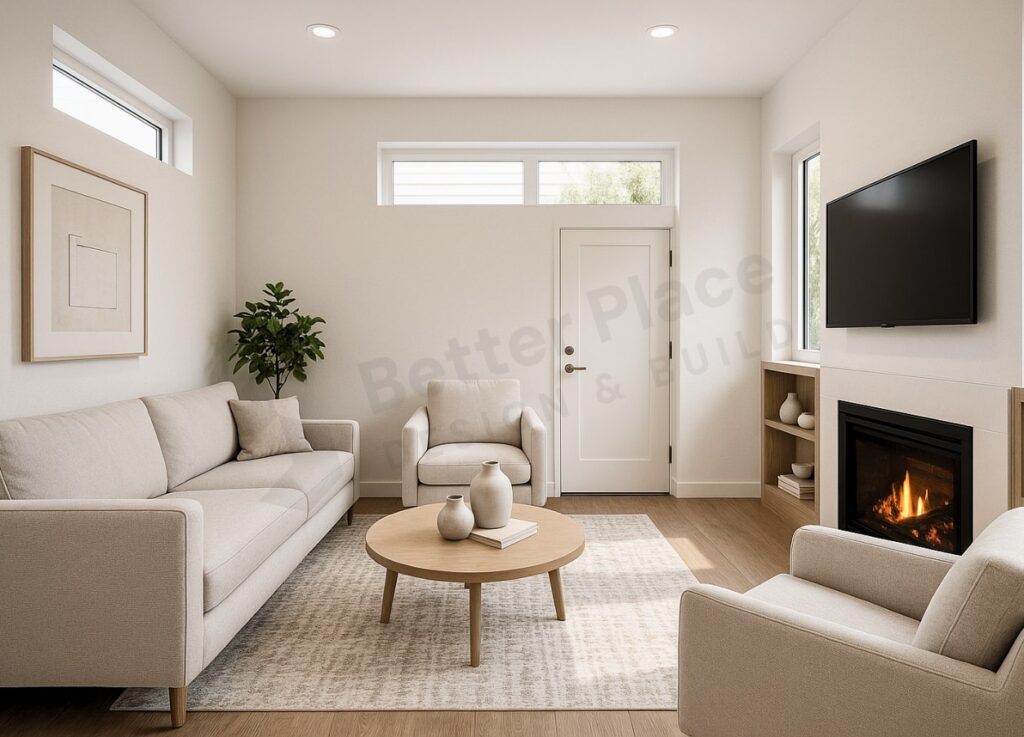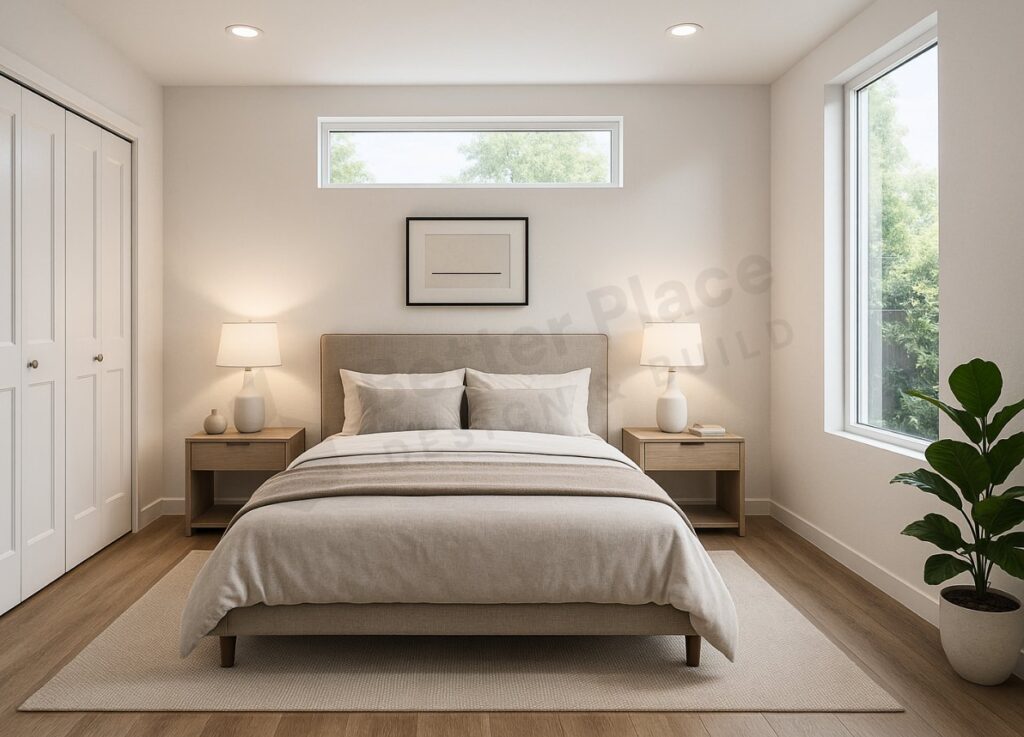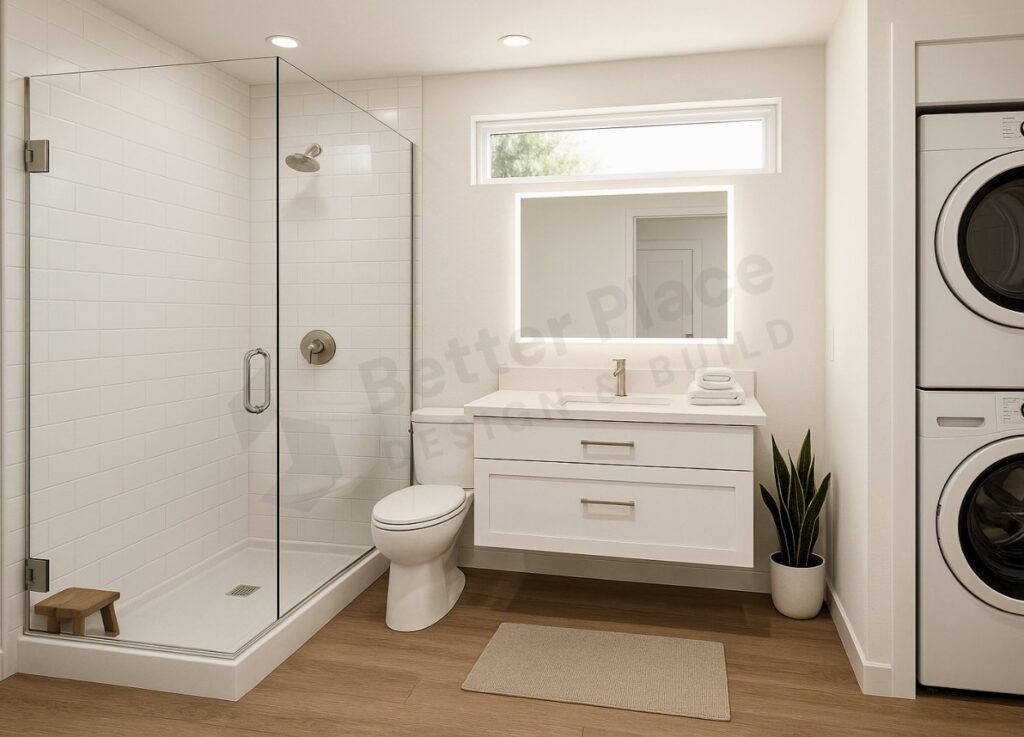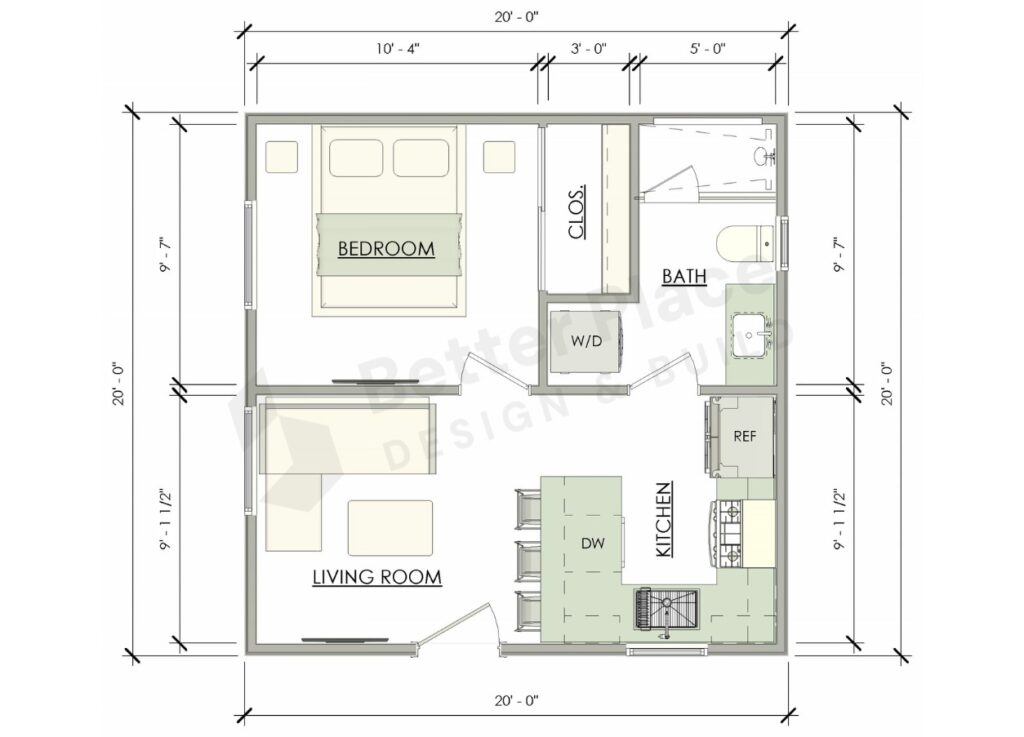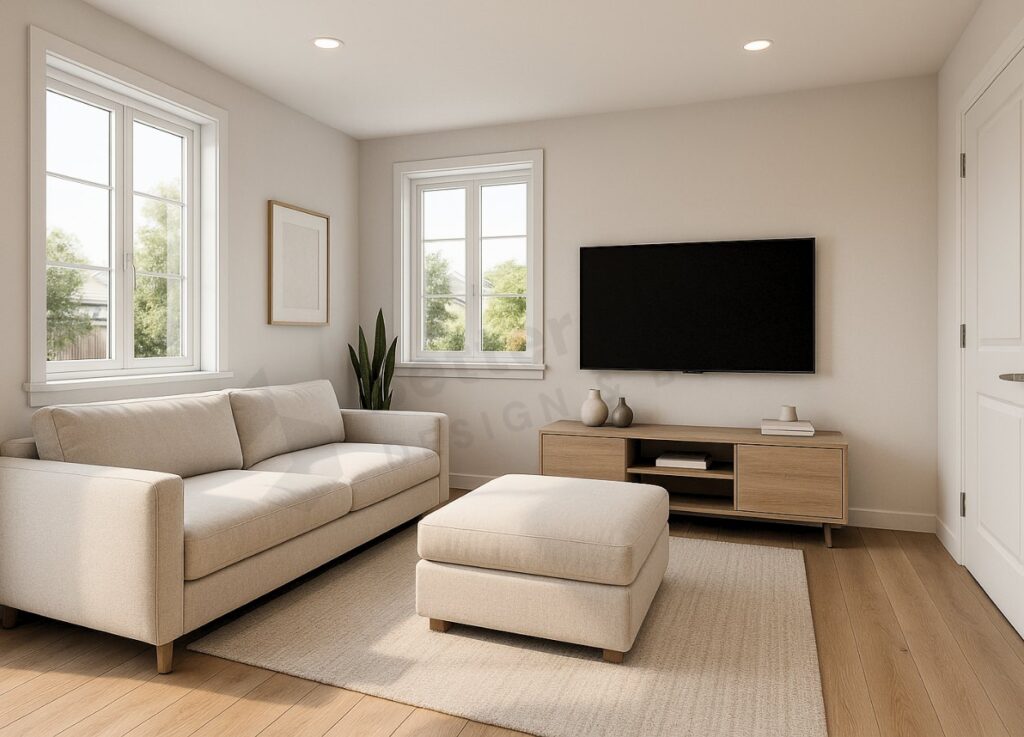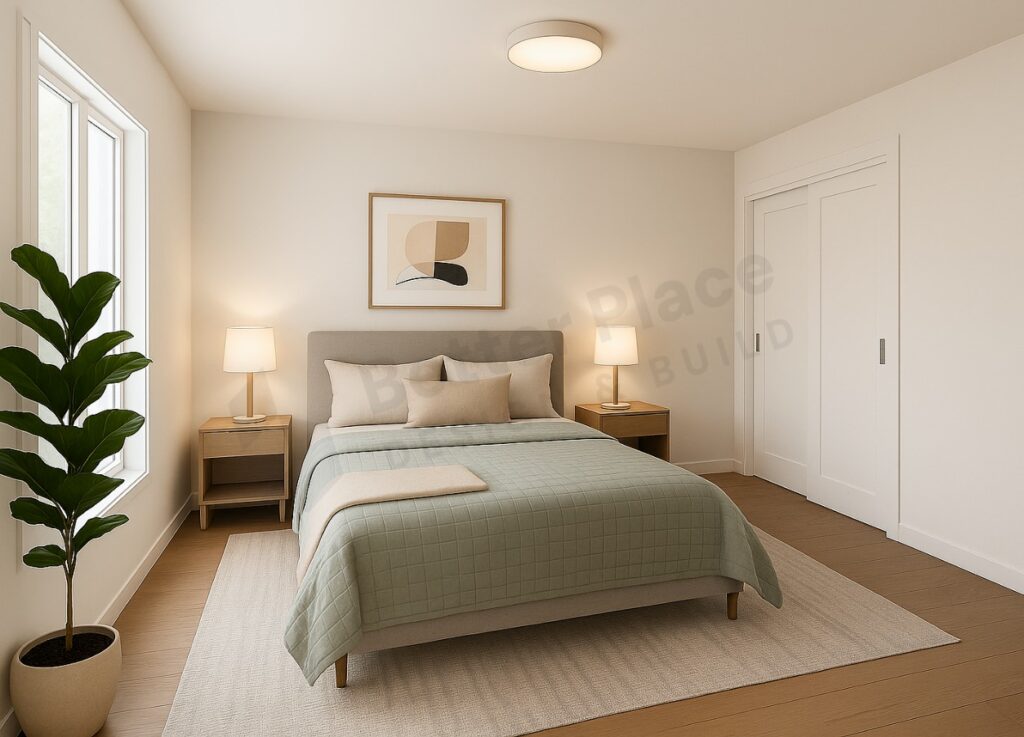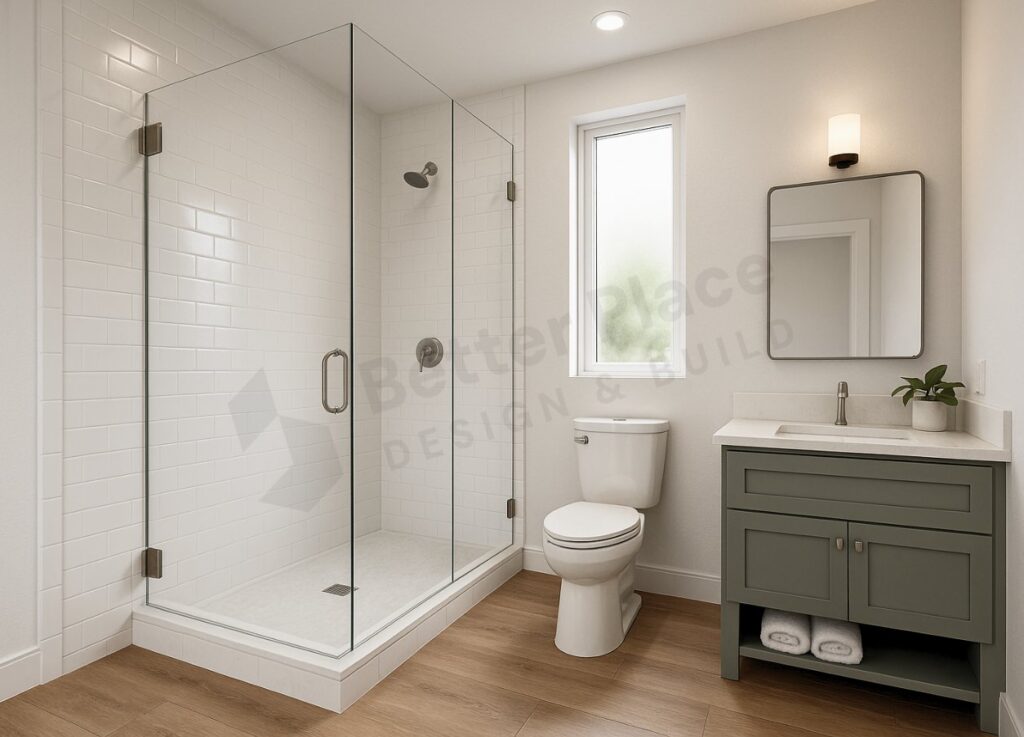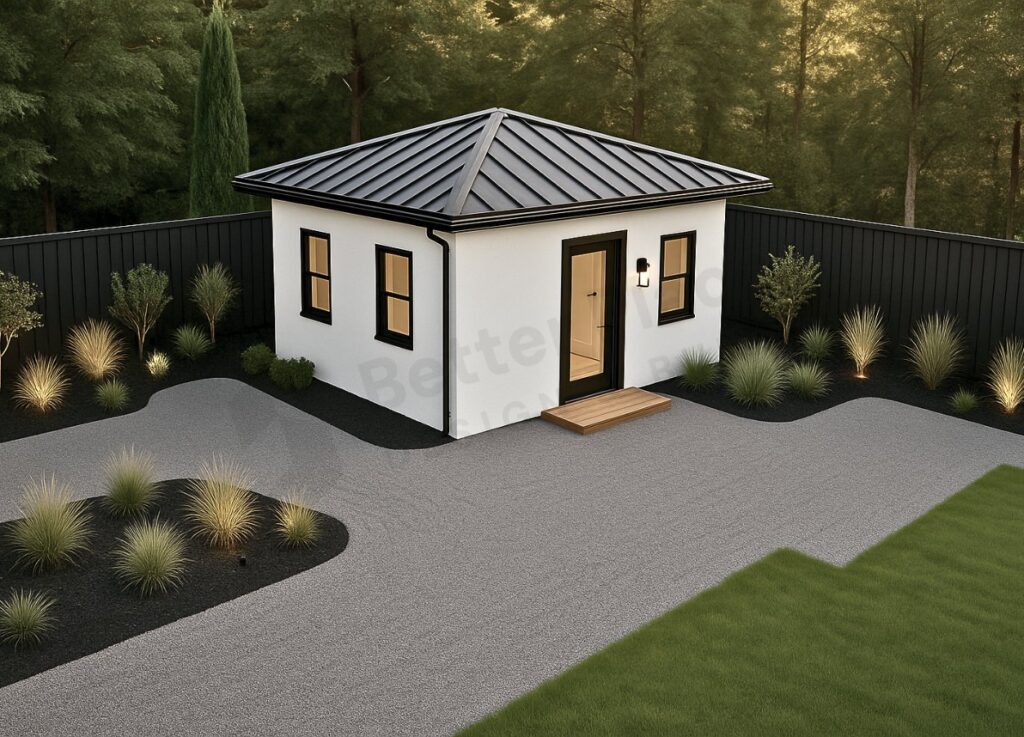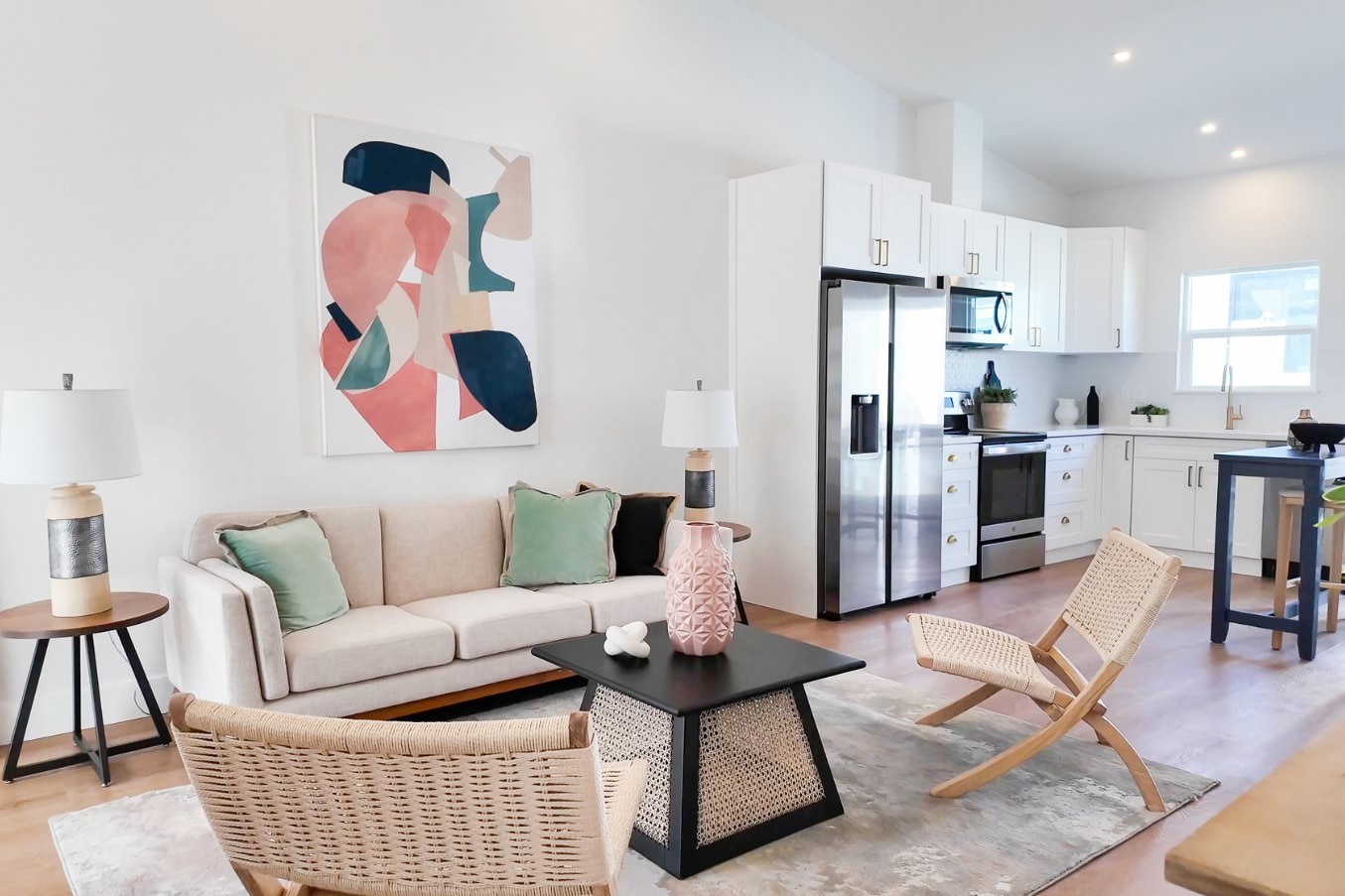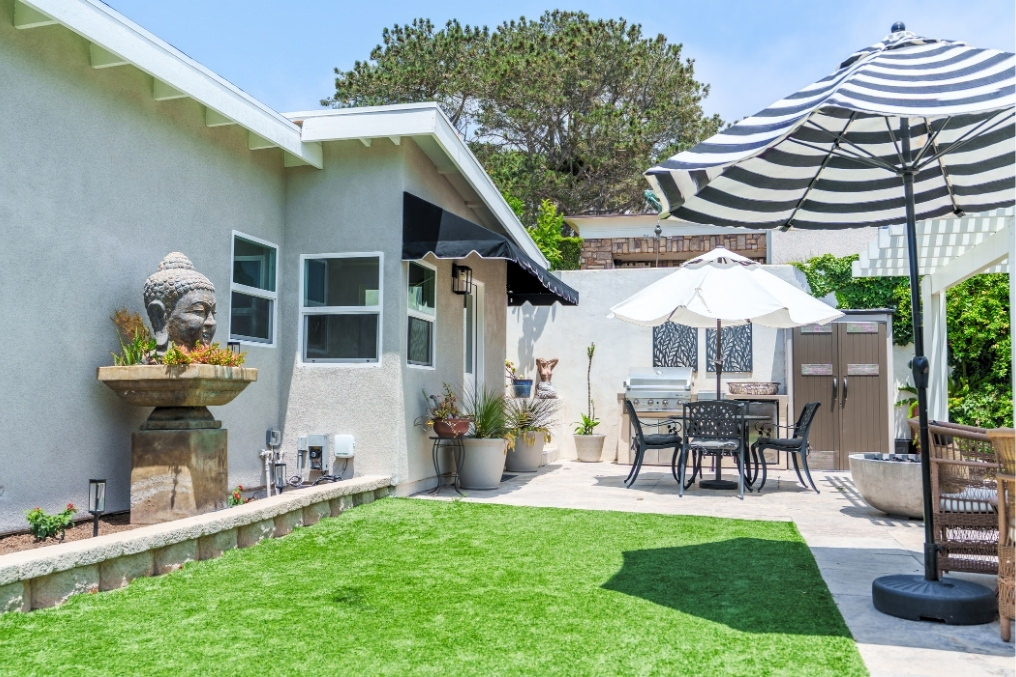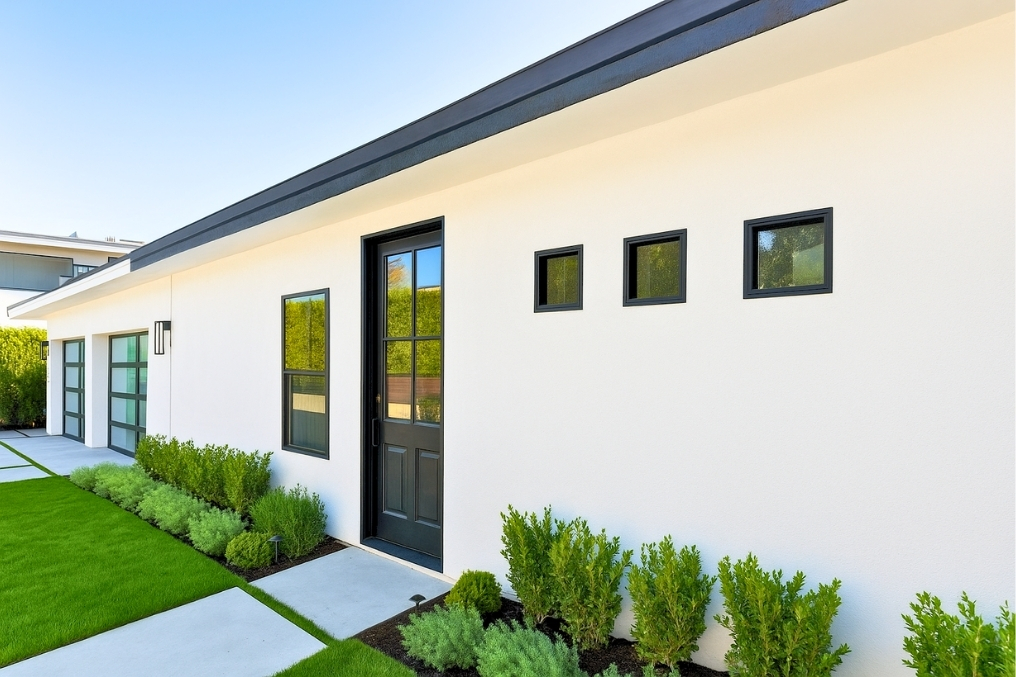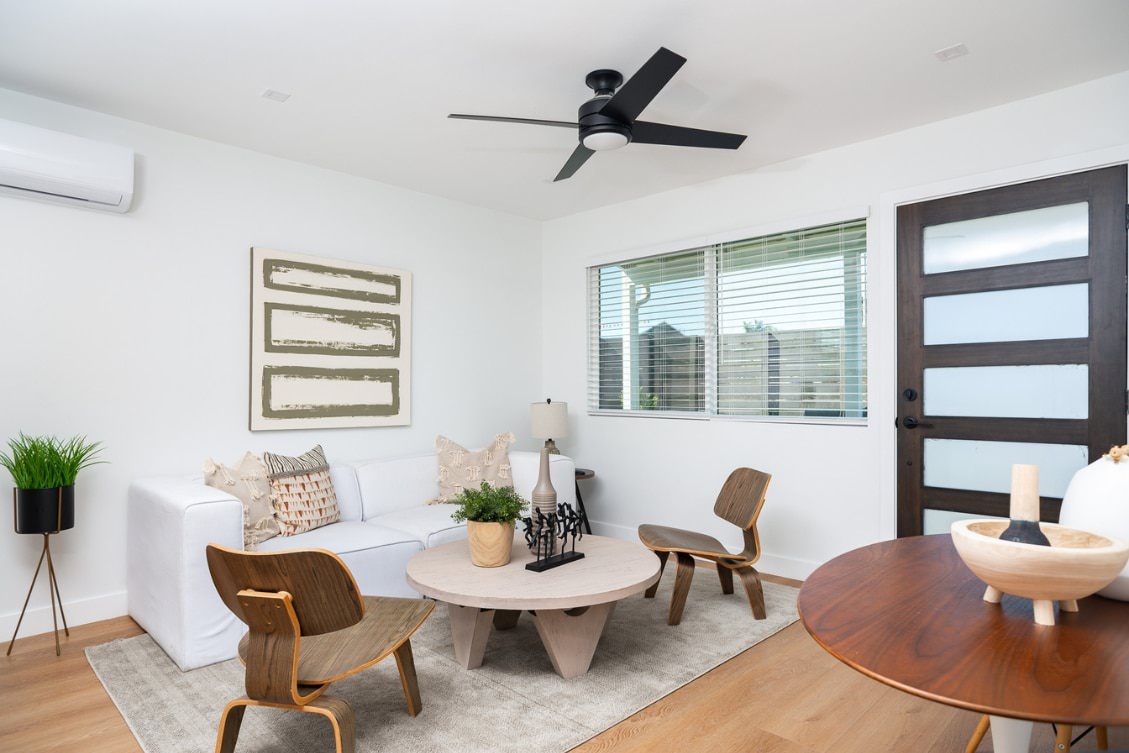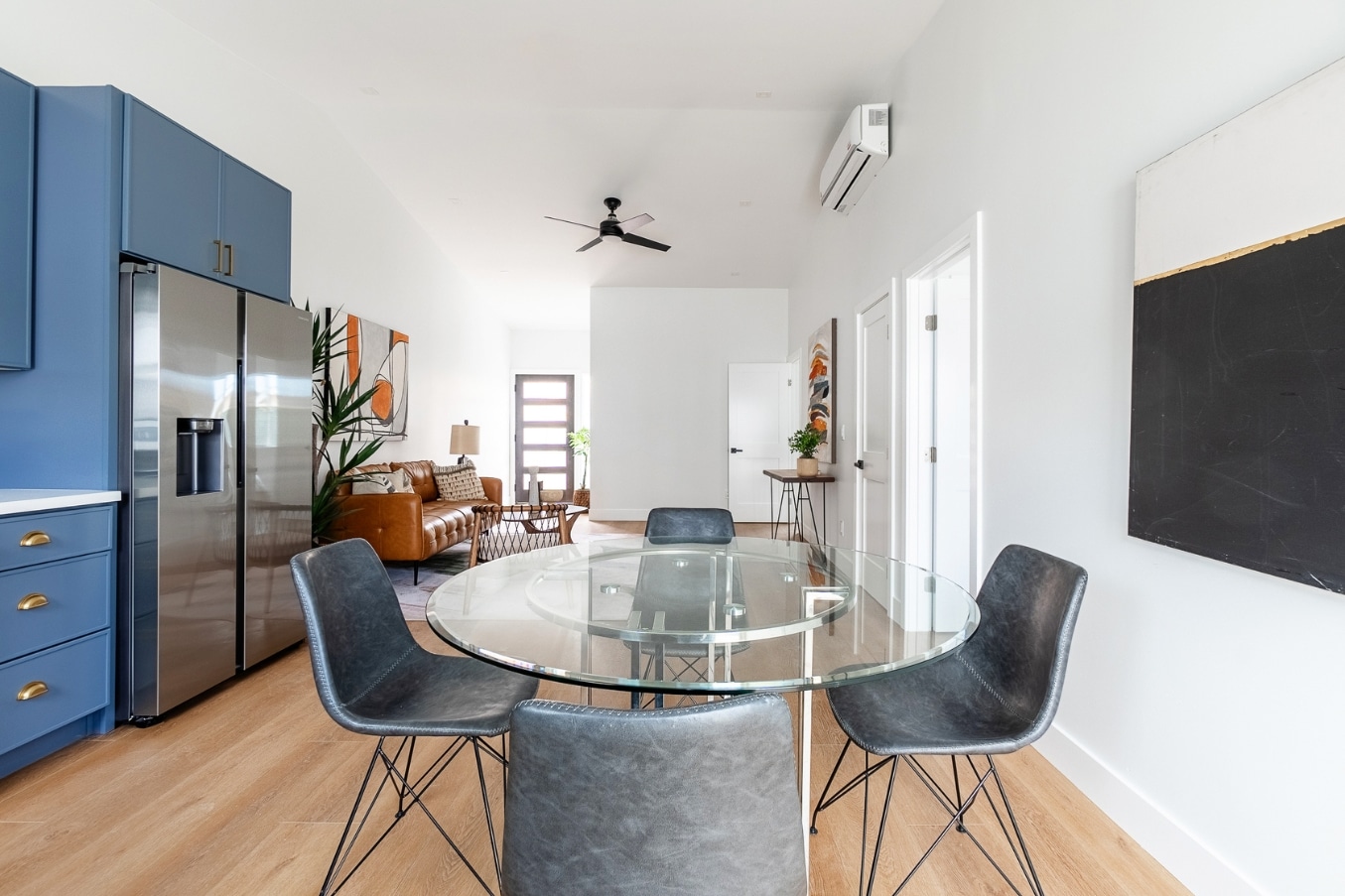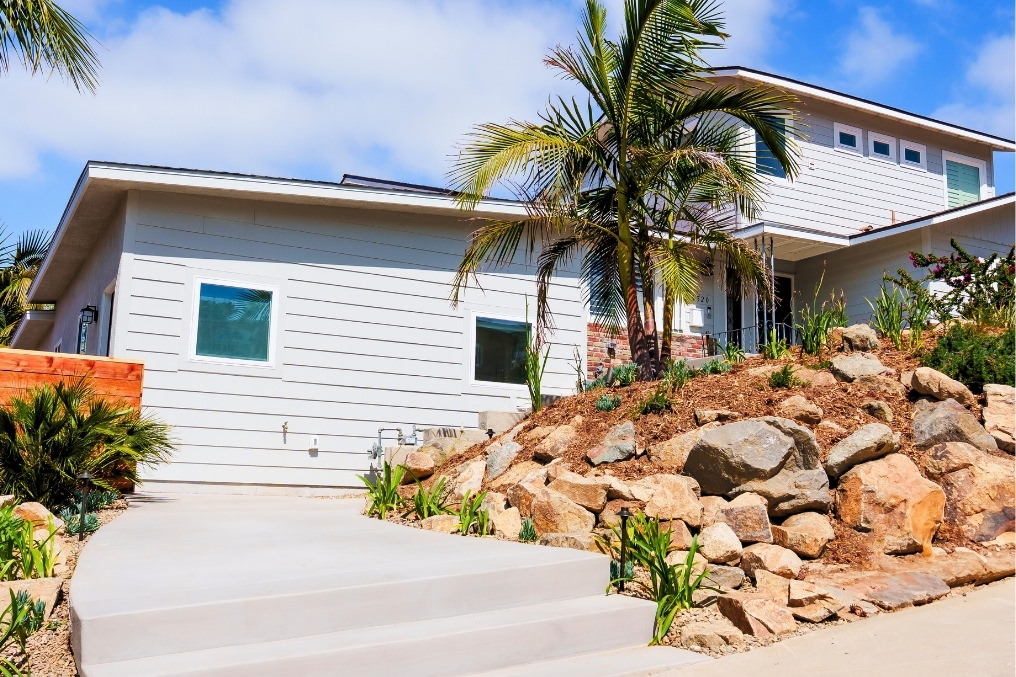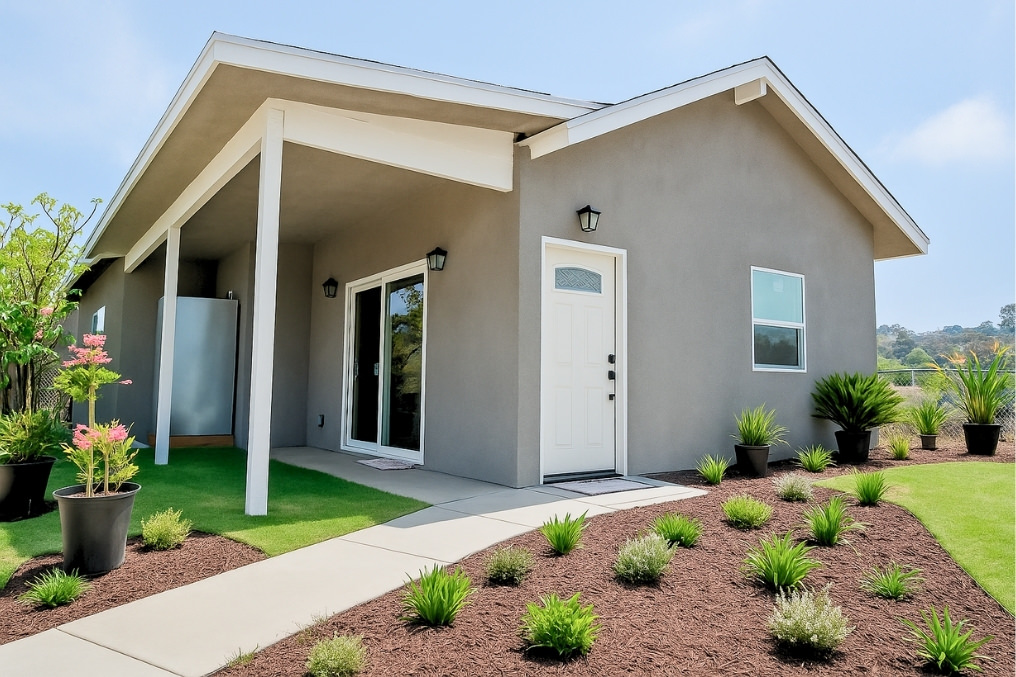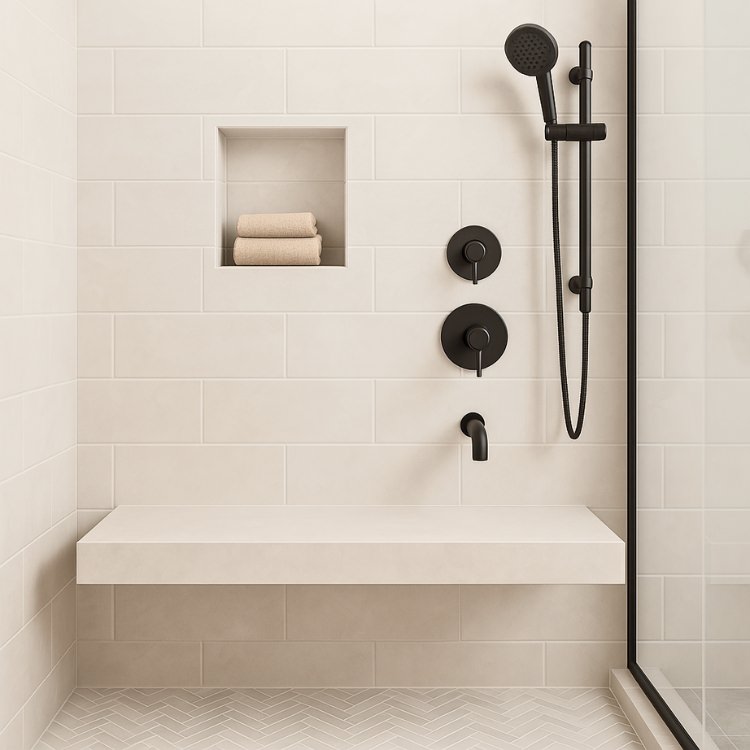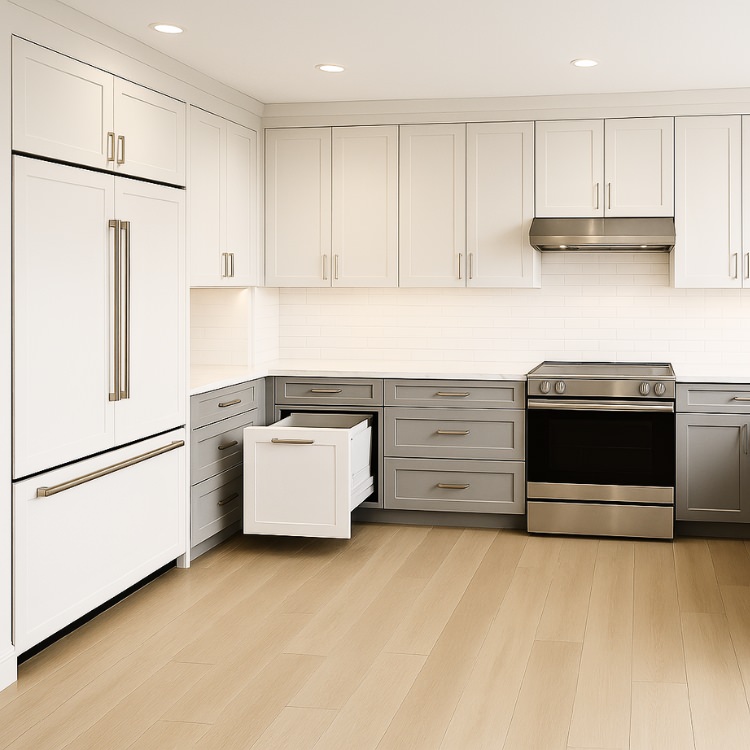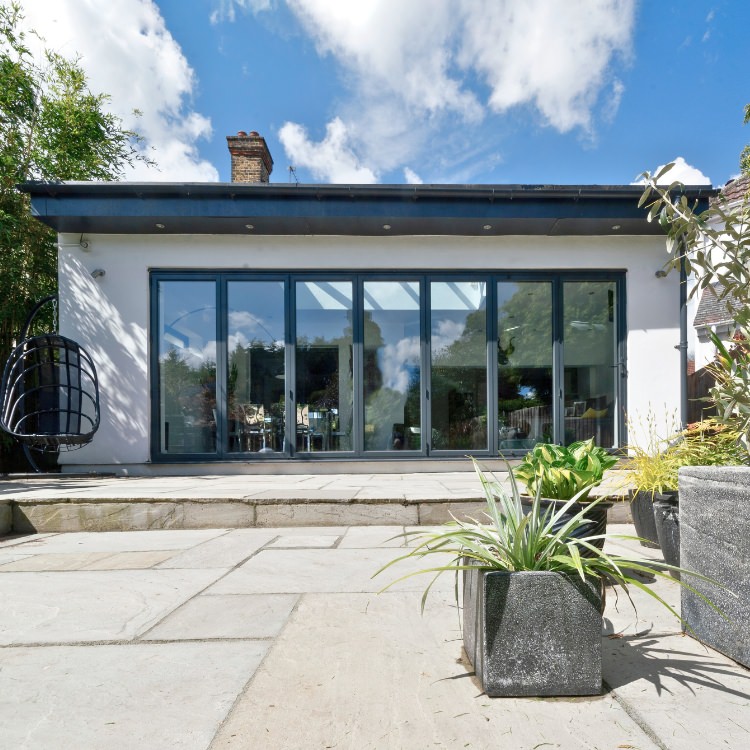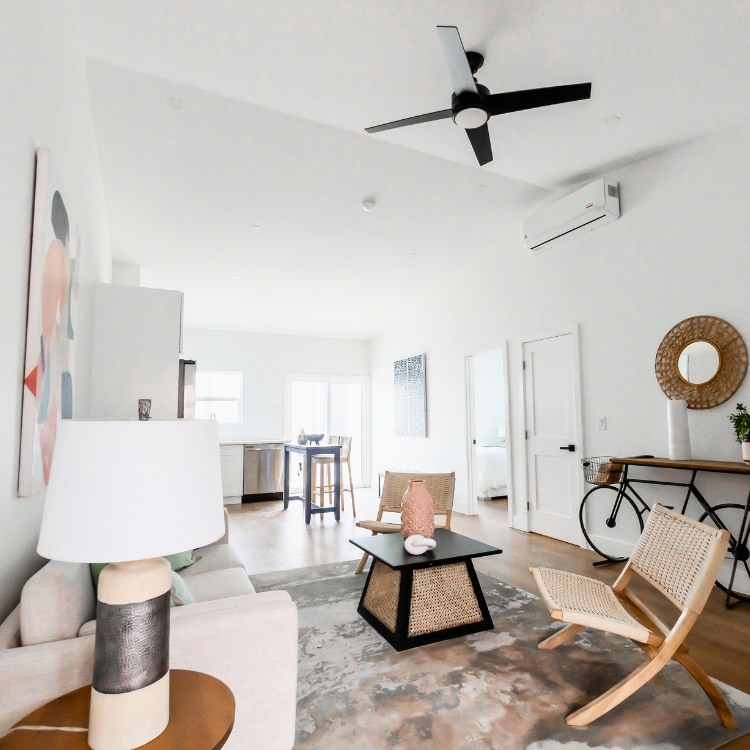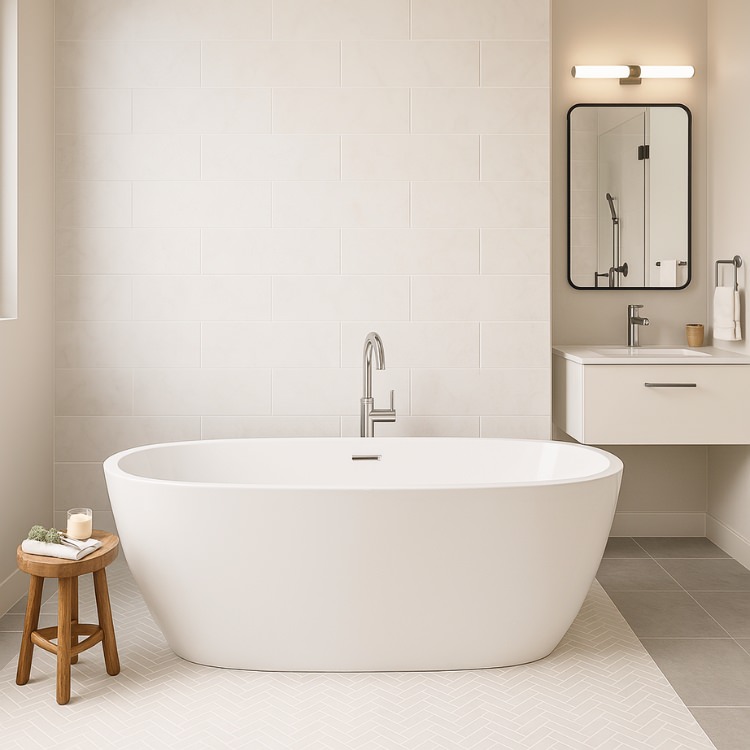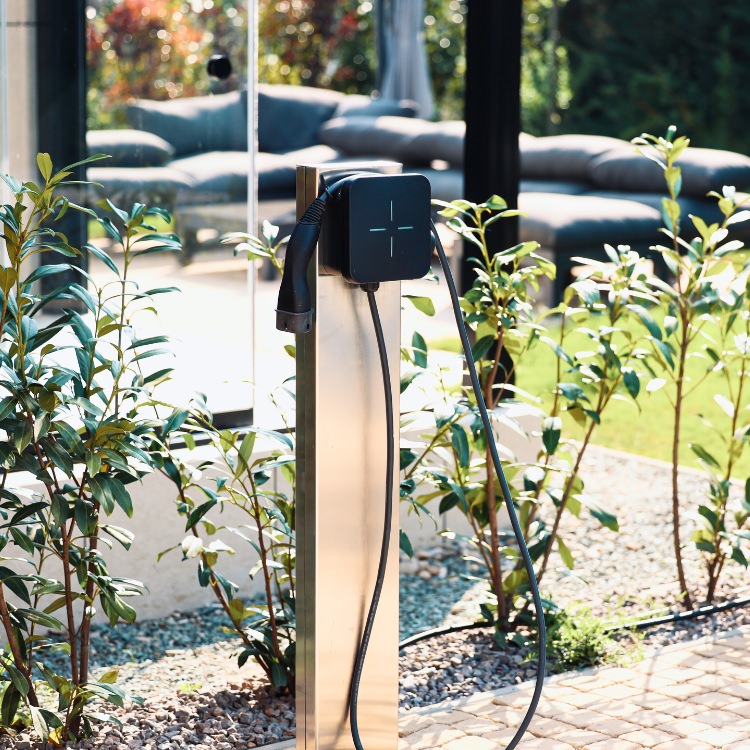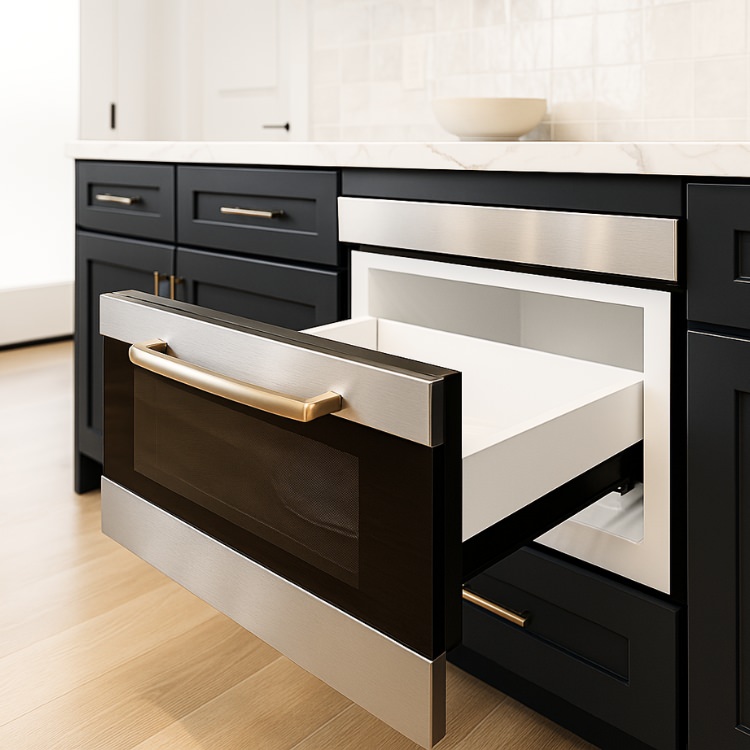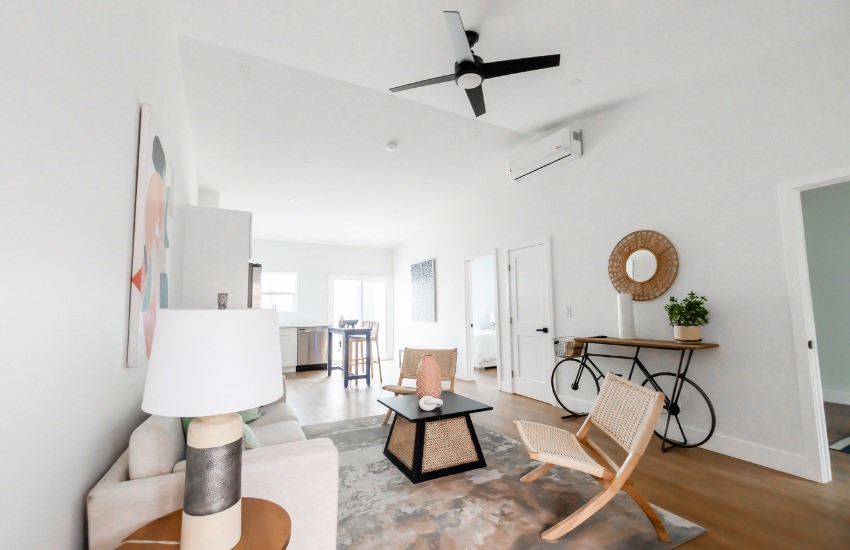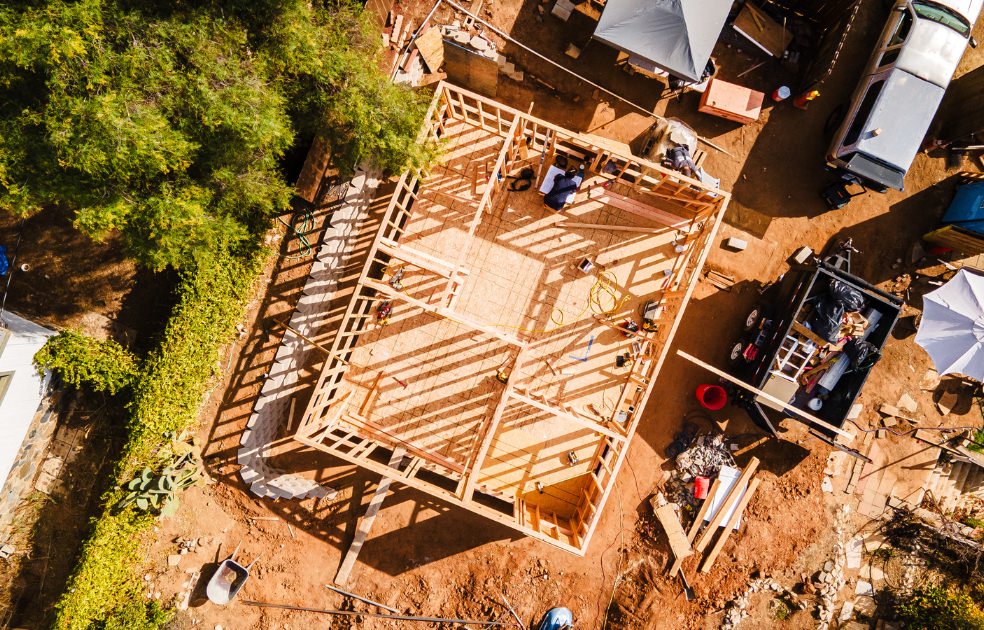 Plans
Plans
ADU floor plans
Discover the perfect addition to your home with our ADU floor plans, designed to maximize space and comfort for modern living. Each plan is thoughtfully crafted to utilize every inch of space efficiently, creating a seamless blend of functionality and style.
Customize any design to suit your individual needs.
Adjustment options available for your perfect ADU.
In-house designers will adapt any layout to your exact requirements.
Filter by...
Customize any design to suit your individual needs.
Adjustment options available for your perfect ADU.
In-house designers will adapt any layout to your exact requirements.
Large Floor Plans 7 results
Medium Floor Plans 8 results
Small Floor Plans 8 results
Compact Floor Plans 12 results
Unlock More Space
Types of ADU floor plans
ADU floor plans come in a variety of layouts, from compact studios to spacious multi-bedroom designs. Choosing the right size and configuration depends on your property’s dimensions, budget, and intended use. Whether you're adding an ADU for rental income, guest accommodations, or multi-generational living, there’s an ideal layout to fit your needs.
One-bedroom ADUs are versatile and efficient, offering a perfect balance of privacy and functionality. Ranging from compact layouts to California’s 1200 sq. ft. max (or 1000 sq. ft. in some San Diego areas), the right size depends on your lot and intended use—whether for full-time housing or a guest space.
A two-bedroom ADU is ideal for maximizing space and flexibility. Thoughtful designs, including open layouts, multi-functional spaces, and built-in storage, make every square foot count. These units cater to small families, roommates, or rental opportunities while maintaining a comfortable and spacious feel.
For those needing more space, a three-bedroom ADU offers additional functionality. Whether it’s an extra bedroom for guests, a home office, or storage, these layouts provide a well-rounded living solution. Prioritizing essential features like larger kitchens, in-unit laundry, or dedicated living areas ensures that your ADU fits your lifestyle.
Four-bedroom ADUs provide the highest level of comfort and privacy, making them a great choice for multi-generational living or larger rental units. Smart designs incorporate privacy-enhancing features—like fencing, landscaping, and strategic window placement—to ensure comfort for everyone.
Smaller ADUs, including studio layouts, maximize space with open-concept designs that blend living, sleeping, and kitchen areas. Smart storage solutions and multi-functional furniture make these units feel spacious and efficient. Ideal for guest houses, rentals, or minimalist living, these under-500-square-foot ADUs offer an affordable, stylish way to expand your property.
Larger ADUs allow for expanded layouts with full-sized kitchens, extra bedrooms, and additional amenities. Your lot’s shape and size are key to the design, ensuring compliance with setback rules—such as California’s 4-foot requirement—while maximizing privacy and natural light.
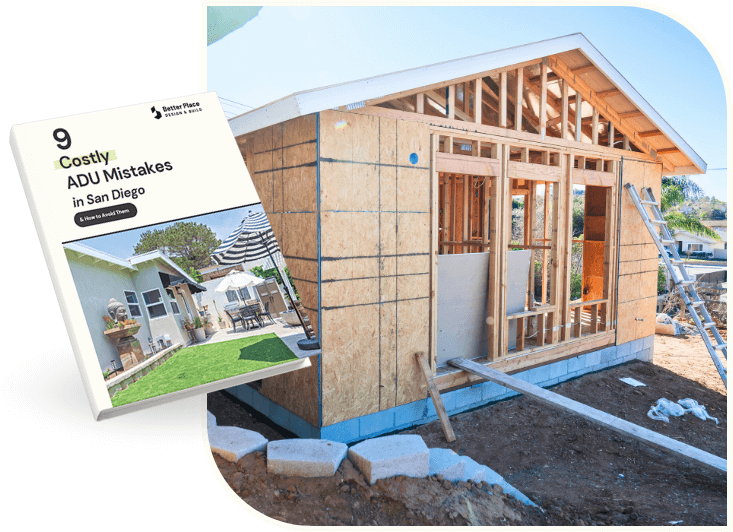
Don’t risk your investment
Download the FREE guide: 9 Costly ADU Mistakes in San Diego & How to Avoid Them. Learn the pitfalls most homeowners never see coming.

ADU Floor Plans
Choosing the perfect ADU floor plan
Finding the right ADU floor plan depends on your space, needs, and future goals. Whether you're building for rental income, guest accommodations, or personal use, the right layout maximizes comfort, function, and long-term value while providing an additional living space for homeowners seeking flexibility.
Optimize space
Smart layouts make small ADUs feel bigger and more functional.Privacy vs. openness
Choose between open studios or separate rooms based on your needs.Future flexibility
Design for evolving needs like rentals, workspaces, or family use.Lot & zoning limits
Your property size and local rules define what’s possible.Budget considerations
Balance affordability with essential features and upgrades.Lifestyle fit
Create a space that enhances daily life and long-term value.Pricing considerations for ADUs
Estimating construction costs
ADU costs vary based on cost factors such as size, materials, and design complexity. Factors like foundation work, labor, and interior finishes significantly impact the final price.Budgeting for permits and utilities
Permit fees, utility connections, and site preparation are often overlooked expenses. Understanding local regulations helps you anticipate these costs upfront.Lessons learned from real projects
Smart planning saves money. Many homeowners find that prioritizing must-have features, choosing durable materials, and working with construction experts prevent unexpected expenses.What’s the ROI for an ADU?
Understanding the return on investment (ROI) for an ADU is key to making a smart financial decision. Use our ADU ROI calculator to estimate costs, rental income, and long-term value to see how an ADU can be a profitable investment for your residential properties.
1,739%
Real Estate
Avg. 6-8%
Stocks
Avg. 5-7%
Savings Account
Avg. 2-4%
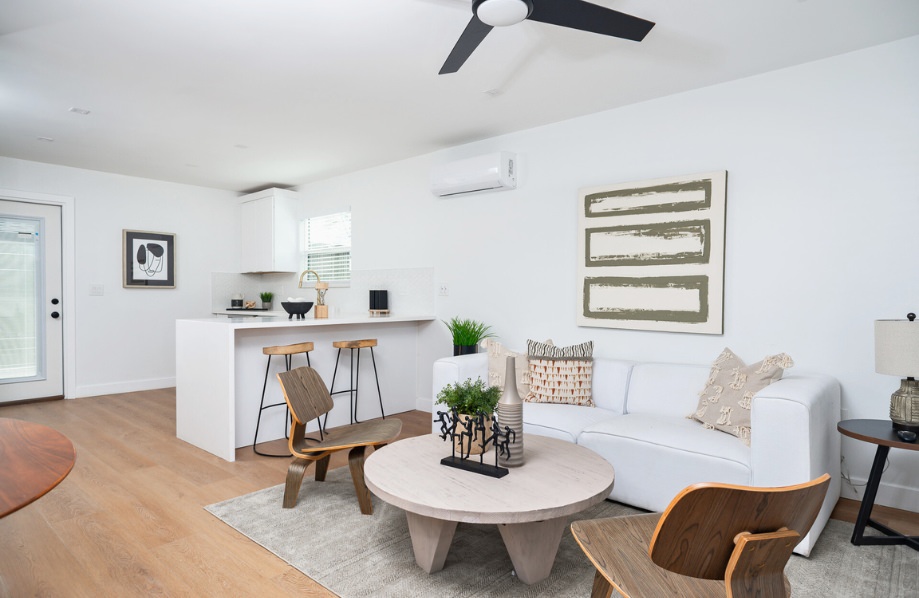
A tip from our designer...
Sarah
Interior DesignerPopular ADU floor plan designs
Choosing the right ADU floor plan depends on your space, lifestyle, and long-term goals. Whether you're looking for a compact studio, a functional one-bedroom, or a spacious multi-bedroom design, our dwelling unit floor plans maximize comfort and efficiency.
A 500-square-foot, one-bedroom ADU offers a balanced layout with space for in-unit laundry, a dining nook, and a well-equipped kitchen, making it perfect for long-term rentals or full-time living. A 600-square-foot design expands on this with a larger kitchen, full-sized appliances, and a private kitchen, ensuring a self-sufficient and independent living experience. For those seeking even more space, a 750-square-foot layout includes a dedicated dining area, a walk-in closet, and a spacious living room, making it ideal for multigenerational living or extended stays. At the high end, a 1,000-square-foot one-bedroom ADU feels like a full-sized home, offering a large bedroom with deck, a full kitchen, and space for a home office or additional storage.
A 500-square-foot, two-bedroom ADU maximizes space efficiency with an open-concept living area, making it a great choice for small families or rentals. Slightly larger, a 624-square-foot layout offers separate bedrooms and a functional kitchen, well-suited for guest housing or short-term rentals. A 700-square-foot design provides a balance between shared living space and private rooms, making it a versatile option. For those wanting extra convenience, a 749-square-foot, two-bedroom ADU includes two bathrooms, ensuring privacy and functionality. Larger options, like the 800-square-foot and 824-square-foot layouts, provide spacious common areas, upgraded kitchens, and additional storage, making them ideal for full-time living.
A 950-square-foot, three-bedroom ADU is a well-optimized layout, providing enough space for families or rental income potential. A 1,000-square-foot design builds on this with an open-concept living area and a full kitchen. The 1,020-square-foot layout includes a master suite along with two additional bedrooms, making it a great option for extended family living. Larger models, such as the 1,100-square-foot and 1,188-square-foot layouts, provide designated common areas and a modern kitchen, perfect for comfortable, long-term use. At the high end, a 1,192-square-foot, three-bedroom ADU ensures spacious bedrooms and a functional floor plan that works well for growing families.
A 1,100-square-foot, four-bedroom ADU is an efficient layout that accommodates larger families or shared living spaces. A 1,150-square-foot version offers additional common areas, making it a great rental option. Expanding on these, a 1,192-square-foot layout adds flexibility with more living space and storage. For even more convenience, a 1,197-square-foot, four-bedroom, three-bath ADU provides enhanced privacy and comfort. A 1,200-square-foot design is the largest option, maximizing livability for multi-generational households with spacious bedrooms and well-planned common areas.
A 360-square-foot studio ADU is a compact yet highly functional option, featuring an open floor plan, a kitchenette, and a full bathroom. A 400-square-foot studio expands slightly to allow for a dedicated seating area and built-in storage. A 450-square-foot layout provides a more spacious kitchen and living area, making it feel more like a complete home. For those wanting a larger studio, a 500-square-foot design offers an open, livable space ideal for full-time use. Studio ADUs are a cost-effective way to add flexible living space, whether for guests, rentals, or a backyard cottage that blends seamlessly into your property.
Compact ADUs, such as a 400-square-foot, one-bedroom design, offer a minimalist living experience with an open-concept layout and smart storage solutions, perfect for small lots. A 440-square-foot layout balances privacy and efficiency with a separate bedroom and a functional kitchen. A 475-square-foot ADU expands on these ideas with a cozier living space and built-in storage, making it suitable for rental use. For those needing a bit more flexibility, a 550-square-foot design offers additional room for storage and customization while maintaining efficiency.
Ready to build your ADU?
We simplify the process of designing and constructing your ADU by guiding you through each stage, ensuring a smooth, worry-free experience from beginning to end.
1
Initial consultation
Connect with our team to share your vision, discuss your goals, budget, property details, and intended use for your ADU.
2
Personalized design
Work closely with our in-house design experts to develop a customized floor plan that suits your lifestyle and complements your property.
3
Comprehensive proposal
Review a detailed proposal outlining project timelines, estimated costs, and clear next steps, providing transparency and confidence as you move forward.
4
Seamless construction
Once approved, we handle every aspect—including permits, construction, and finishing touches—to effortlessly bring your ADU vision to life.
Frequently asked questions about ADU plans
All the answers to your ADU floor plans questions.
Better Place Design & Build offers a wide range of customization options for ADU floor plans, including layout adjustments, architectural styles, and interior finishes. Whether you want a modern studio, a cozy guest house, or a multi-room unit, our contractors work closely with you to incorporate your ideas and preferences, resulting in a personalized ADU that meets your unique needs.
When choosing a studio ADU floor plan, consider factors such as the available space, your budget, and your intended use for the ADU. It's important to think about the layout, storage solutions, and natural light. Better Place Design & Build's contractors will guide you through these considerations, offering expert advice to create a floor plan that maximizes your space and meets your specific needs.
Navigating ADU regulations can be complex, as local laws vary by city and county. Common concerns include:
- Permitting Process: Many homeowners worry about the time and cost associated with obtaining permits. While California has streamlined ADU approvals, each city has unique zoning and review requirements.
- Size and Setbacks: ADUs are typically restricted by lot size, setbacks, and height limits. Some areas allow up to 1,200 sq. ft., while others impose stricter limits.
- Parking Requirements: While state law eliminates parking mandates in many cases (such as ADUs near public transit), some local jurisdictions still enforce additional rules.
- Utility Connections: Homeowners often overlook costs for water, sewer, and electrical hookups, which can add to the budget.
The cost of ADU (Accessory Dwelling Unit) plans varies based on complexity, size, and design needs, typically ranging from $5,000 to $15,000 for architectural plans. The design and planning stage can cost between $6,000 and $14,000, while custom engineering and design plans range from $8,000 to $13,000. Pre-made plans offer a more affordable option at around $5,000. Consulting services and permit fees add further costs, with consulting fees ranging from $8,000 to $12,000 and building permits from $2,000 to $10,000. Opting for an in-house provider with an architect can significantly reduce costs and streamline the process. An in-house team can offer bundled services, ensuring seamless integration of design and construction, which can lower the overall cost and simplify project management. This approach can be more cost-effective, reducing the need for multiple external consultants and ensuring all aspects of the project comply with local regulations efficiently. In summary, ADU plan costs can total between $5,000 and $30,000 or more, but working with an in-house provider can help manage and potentially lower these expenses.
Zoning and building codes play a critical role in determining what kind of ADU you can build and where it can be placed on your property. Key factors include:
- Lot Size & Setbacks: Many areas require ADUs to be set back a minimum of 4 feet from the rear and side property lines. Lot coverage regulations may also dictate how much of your land can be built upon.
- Height & Design Restrictions: Some jurisdictions limit ADU height to match the main residence or require architectural consistency with the existing home.
- Fire & Safety Codes: Depending on the location and distance from the main home, certain ADUs may need fire sprinklers or additional safety features.
- Permitting & Approval: Even if state laws allow ADUs by right, local municipalities can have specific requirements, such as neighborhood design review or additional permitting fees.
Yes, you will need plans for your ADU (Accessory Dwelling Unit). Detailed plans are essential for obtaining a building permit and must include architectural drawings, site plans, and structural calculations. Many cities offer pre-approved plans to streamline the permitting process, saving time and reducing costs. However, pre-approved plans may still require property-specific modifications. If pre-approved plans do not meet your needs or if your property has unique requirements, custom plans created by an architect or designer may be necessary. In addition to the basic plans, you will need to provide other documents such as utility plans and required reports to ensure compliance with local building codes and zoning regulations. The permit application process involves submitting all required documents for review by the local building department to ensure the proposed ADU meets all safety and code requirements.
Using pre-approved ADU (Accessory Dwelling Unit) plans offers several key benefits, including cost savings, time efficiency, and ease of the permitting process. These plans can save homeowners significant amounts on design fees and lower permitting costs since they are already reviewed by city planners. The permitting process is expedited, reducing the time it takes compared to custom plans. Pre-approved plans simplify the process by providing a detailed overview and walkthrough, reducing the risk of errors and ensuring code compliance. They offer design flexibility with various options and minor customizations while ensuring regulatory compliance. Additionally, many cities provide these plans for free or at reduced costs, making them accessible to more homeowners. This combination of benefits makes pre-approved ADU plans an attractive option for adding an ADU to your property.
The ideal size for an Accessory Dwelling Unit (ADU) depends on its intended use, budget, local zoning regulations, and available property space. Generally, ADUs range from 600 to 1,200 square feet. For family use or long-term living, a larger unit of 700 to 1,200 square feet is suitable, while smaller units of 400 to 600 square feet work well for rentals or accessory uses like home offices. Local regulations often set the maximum size, with many areas allowing up to 1,200 square feet for detached ADUs and up to 50% of the main home’s square footage for attached ADUs. Budget is a critical factor, as larger ADUs cost more to build. Balancing size with intended use, budget, and compliance with local regulations will help determine the best ADU size for your needs.
There are no minimum restrictions when it comes to ADU bathrooms, but in smaller units with a single bathroom, the bathroom may be a 3/4 bathroom (meaning it has a shower but not a tub) as opposed to a full-sized bathroom. In larger units with multiple bathrooms, one of these can be a larger en-suite with a tub and a shower. You can get an idea of common bathroom sizes and layouts by looking at our floor plans page.
In San Diego, a full kitchen in an ADU (Accessory Dwelling Unit) must include a sink with running water and a drain, a stove or range top for cooking, a refrigerator for food storage, and countertops and cabinetry for food preparation and storage. These requirements ensure the kitchen is fully functional and independent, providing all necessary facilities for cooking and food preparation.
Successfully building an ADU requires more than just a floor plan. Key project essentials include:
- Feasibility Study: Before starting, assess your property’s zoning laws, utility access, and site conditions to determine the best ADU type and placement.
- Budgeting & Financing: Factor in construction costs, permits, utility connections, and potential site work. Many homeowners explore financing options such as HELOCs or renovation loans.
- Utility Planning: Ensure proper water, sewer, electrical, and gas connections. In some cases, separate utility meters may be required, adding to costs.
- Construction Timeline: ADU projects typically take 6–12 months from design to completion. Understanding this timeline helps with planning and temporary living arrangements if needed.
- Builder & Design Selection: Hiring an experienced contractor who understands local ADU laws ensures a smooth process, quality workmanship, and regulatory compliance.
The state of California dictates that an ADU can be no smaller than 150 square feet, though some municipalities have higher minimums of 200 or 220 square feet. These small ADUs are often used as a backyard office or art studio as opposed to a means of rental income.
An ADU (Accessory Dwelling Unit) typically does not count as part of the main home's square footage. Instead, it is considered a separate entity. For instance, if you have a 2,500 square foot house and add a 1,200 square foot ADU, the property is still listed as a 2,500 square foot house with an additional 1,200 square foot ADU. This distinction is crucial for property valuation and compliance with local regulations. While the ADU adds value to the property, it is appraised and marketed separately from the main home's square footage.
